The international team of astrophysicists behind the world's three gravitational wave detectors just submitted a paper analyzing a uniquely strong gravitational wave from 2023. Caused by merging black holes, this gravitational wave is unusual for more than just its strength. The team's best models suggest that at least one, if not both, of the black holes shouldn't exist.

The black hole "mass gap"
Most large black holes are created when massive stars jettison their outer layers. The iron core, no longer supported against gravity, collapses in on itself and forms a black hole. But this kind of supernova only works for stars up to about 130 times the mass of the Sun.
Above that, astronomers theorize that a new type of supernova takes over. The light the star generates in its core doesn't manage to exit the star itself. Instead, many of the photons are so energetic that they create extra particles when they hit atoms at the right angle. That means that the pressure of light holding up the star vanishes. With its only defense against gravity gone, the star begins to collapse, triggering a massive thermonuclear explosion that vaporizes it entirely. Nothing remains, not even a black hole.

Astronomers have yet to confirm this kind of "pair instability supernova" actually exists, although simulations suggest it does. There are also several candidate pair instability supernovae observations, but further study is needed to confirm them. On balance, though, pair instability supernovae are a well-supported theory of stellar evolution. They imply that stars can't create black holes above 64 times the mass of the Sun and below about 130 times the mass of the Sun. After that, a new kind of supernova takes over and can produce black holes once more.
But the best models of the 2023 gravitational wave predict two black holes of 103 and 137 times the mass of the sun. The error bars on these measurements are sizable, but still place the lighter black hole firmly in the mass gap, while the heavier one is either in or above it.
These are also the heaviest reliable black hole measurements to come out of the LIGO collaboration.
Spinning black holes create gravitational waves
Gravitational waves occur when massive objects accelerate, rippling spacetime in their path. Black holes spinning together in the final moments before their collision create the most powerful gravitational waves.
Earth-bound systems of lasers, able to detect changes in distance of only 1/10,000th the size of a proton, go after this class. The Laser Interferometer Gravitational-Wave Observatory (LIGO) detected its first gravitational wave in 2015, finally confirming their existence.

The many possibilities for formation
The research team found one other clue to the history of this strange black hole system. Each of the black holes is spinning much faster than usual. Any explanation for how this system formed has to explain that as well.
It's possible that there are toggles on stellar evolution, such as exact nuclear reaction rates at high densities, that change the range of the mass gap. But that doesn't explain the high spin rates. The theory of two stars combining to create each black hole has the same issue.
One explanation that accounts for the spin rates is that one or both of the black holes are the remnants of previous black hole mergers, rather than a collapsing star. Although this requires exotic star cluster conditions, the universe is filled with those. (The research team favors this explanation.)
The colliding objects could also be primordial black holes, a predicted population of black holes formed during the dense stages of the early universe. Primordial black holes don't have any mass gaps, but they are also far more theoretical than pair instability supernovae.
In 2035, the European Space Agency plans to launch the Laser Interferometer Space Antenna, or LISA. LISA will probe a different regime of gravitational waves from the Earth-based detectors like LIGO. In doing so, it will add a host of strange new black holes to the canon.

As a massive storm swept through central Alberta in early July, a couple stood on their porch watching bolts of lightning play across the cloudy skies. A particularly massive lightning strike hit nearby. A moment later, they saw a ball of light hovering near the impact site.
In an interview with Global News Canada, Ed Pardy described seeing "a ball of fire… about 20 feet above the ground, and it kind of stayed there in a big round ball."
Ed and his wife, Melinda, said the orb consisted of bluish light, maybe two meters across. Amazed, they began filming. The couple captured 23 seconds of the light hovering on the horizon, before it vanished with a popping sound.
After viewing the video, that the couple sent to several Canadian news networks, many people believe the phenomenon is "ball lightning."

Elusive and mysterious
Ball lightning is a rare and little-understood atmospheric phenomenon. Accounts vary, but the generally agreed-upon description is of a ball of light, anywhere from a few centimeters to a few meters across. Ball lightning coincides with thunderstorms and hovers for a minute or so before disappearing.
Accounts of ball lightning are uncommon, but stories have been around for centuries. The earliest account commonly cited is from a massive storm that swept over England in 1638. Three hundred people were attending church when, according to eyewitness accounts, a ball of fire over two meters across burst through the church window, bashed around, tore open the roof, and killed four church-goers, filling the building with smoke and the smell of sulfur. Witnesses concluded it was the devil, an understandable conclusion at the time.
This isn't the only story of "globular lightning" entering a building. In 1852, the French Academy of Sciences took sworn statements that a ball of light, roughly the size of a human head, burst from the fireplace of a startled tailor, having traveled down the chimney.
In 1753, ball lightning killed a Russian scientist researching electricity, according to contemporary reports. Georg Richmann was holding one end of a string, the other end of which he had attached to a kite. Ball lightning appeared, traveled down the string, and killed Richmann instantly.
Despite scattered reports continuing over the years, scientific understanding lagged behind.

Many theories, limited evidence
So, what exactly is ball lightning? Science isn't quite sure yet. Many reports can likely be attributed to other things. A 2010 study from researchers at Austria's University of Innsbruck found that the magnetic fields generated by lightning storms could cause visual hallucinations. Specifically, they can cause "magnetophosphenes," which appear as flashing lights. This could account for cases of ball lightning.
But unless magnetophosphenes are contagious and spread over video, what the Pardy's saw was real.
Researchers have put forward dozens of theories to explain ball lightning. One of the more credible theories came from a group of Chinese researchers who happened to record ball lightning in 2014. In only a few seconds, the ball went from purple, to orange, to white, to red and then sputtered out. The changing colors indicated its makeup, and the scientists detected small amounts of silicon, iron, and calcium.
They proposed that ball lightning forms when a lightning bolt hits soil, vaporizing the elements within, and creating light and color effects. Experiments in 2007 using vaporized silicon support this theory. Scientists from the Federal University of Pernambuco were able to produce small glowing orbs by delivering electric shocks to silicon wafers.
Another theory is that ball lightning is detached Saint Elmo's fire (a faint light on the extremities of pointed objects during stormy weather, such as around the masts of ships). There's also the "Electrochemical Model," positing that ball lightning is air plasma held in a ball by layers of chemical ions.
Science has yet to settle which, if any, of these theories is correct. But the video filmed by the Pardy's is probably the best video of ball lightning captured so far, and lightning phenomena researchers will likely pore over the 23 seconds of footage for new information.
Something unusual is happening to our planet, and scientists are racing to understand why. For billions of years, Earth’s rotation has been gradually slowing down, mainly due to the Moon’s gravitational pull. But that trend has recently reversed.
Since around 2020, Earth has been spinning slightly faster, and now we’re seeing the shortest days ever recorded. This isn’t a shift you would feel, but the planet is rotating milliseconds faster than usual.
In July and August 2025, scientists expect three of the fastest-spinning days in modern history. On July 9, July 22, and August 5, Earth is forecast to complete its spin between 1.3 and 1.5 milliseconds faster than the standard 86,400 seconds that make up a 24-hour day.
So far, the overall record occurred on July 5, 2024, when the Earth completed its rotation 1.66 milliseconds faster than usual. These tiny shifts might sound trivial, but they could have serious consequences.
Theories but no explanations
The big unanswered question is what’s causing Earth to pick up speed? Scientists do not have a clear answer. One contributing factor may be the Moon’s position. Another could lie deep underground with changes in the Earth’s core and mantle. It is even possible that earthquakes, shifts in ocean currents, and the melting of polar ice might play a role. All of these situations slightly redistribute the planet’s mass, and in turn, impact its spin.
So far, all these ideas are simply theories. “Nobody expected this," said geophysicist Leonid Zotov of Moscow State University. "The cause of this acceleration is not explained.”
This new phenomenon isn’t just an academic mystery. If clocks and Earth’s spin fall out of sync, it could affect GPS systems, communication networks, and electric power grids. A shift of just one millisecond can throw off navigation and timing systems by hundreds of meters.
Coordinated Universal Time (UTC) is the global standard used for everything from GPS systems to financial markets. It relies on Earth’s rotation staying in sync with atomic clocks. To keep things accurate, timekeepers occasionally add or subtract leap seconds. If this speeding trend continues, we might soon need a negative leap second -– the deletion of a second from our clocks. That has never been done before, and could cause a major headache for the technologies that rely on ultra-precise timing.
What is most weird about all of this is that Earth’s rotation has been slowing for millions of years. Seventy million years ago, during the time of the dinosaurs, a day on Earth was just over 23 hours long. It is possible that over geologic time, Earth will still show a general slowing trend. But for now, these sudden accelerations are puzzling.
Last week, the Trump administration released a presidential budget request that would cancel almost all NASA science missions in order to focus on putting humans on Mars. It's mainly a showy, we-can-do-it project.
Mere weeks before, the CEO of a small San Francisco non-profit argued in a new paper that we need to start seriously considering terraforming Mars. The priorities of the two groups could not be more different.
The lead author of the paper, Erika DeBenedictis, received the prestigious Astera Fellowship to found Pioneer Labs, a small startup dedicated to designing microbes for terraforming. In The Case for Mars Terraforming Research, published last month in Nature Astronomy, she and her co-authors explain why terraforming studies are important. They also address how little we still know about potentially terraforming Mars. The main takeaway: Mars is not ready for humans, and humans are not ready for Mars.
Why bother with all this, anyway?
For some readers, the question of colonizing Mars isn't why, but how. If that's you, feel free to skip ahead. But others might approach the matter with more skepticism.
Space colonization has become a political byword, but opposition is far from new. Perhaps most famously (at least among us science geeks), Gil Scott-Heron's 1970 poem Whitey on the Moon contrasted the poverty conditions of many Black Americans with the perceived excess of the Apollo missions.
"I can't pay no doctor bill (but Whitey's on the Moon)," he wrote. "Ten years from now, I'll be paying still (while Whitey's on the Moon)."
From this vantage point, is spending billions on terraforming research anything more than a nationalist vanity project? DeBenedictis and her team argue that it is important.
"Technologies developed for Mars habitation, such as desiccation-resistant crops...will probably benefit Earth," they write.
In an older interview with the Astera Institute, DeBenedictis summed up this aspect of the paper's argument.
"Researching the possibility of a green Mars involves an infinite number of steps, all of which are in the right direction. How do we make human presence net-positive for the surrounding environment, rather than net-negative?"
Unlike the Trump administration, the study doesn't advocate for current human spaceflight to Mars. Instead, it proposes taking the questions of colonization seriously, starting from first principles. Should we? How would we? What would the future of Mars look like?
Not just science fiction
You'd be forgiven for assuming terraforming is just science fiction. But unlike faster-than-light travel, this staple of space adventure has a real scientific basis behind it.
The new study lays out a timeline for terraforming Mars, and it's a lot more rapid than you might expect. They propose that careful bioengineering can accelerate the formation of an ecosystem. Instead of the billions of years it took Earth to turn green, Mars could achieve it in a few decades.
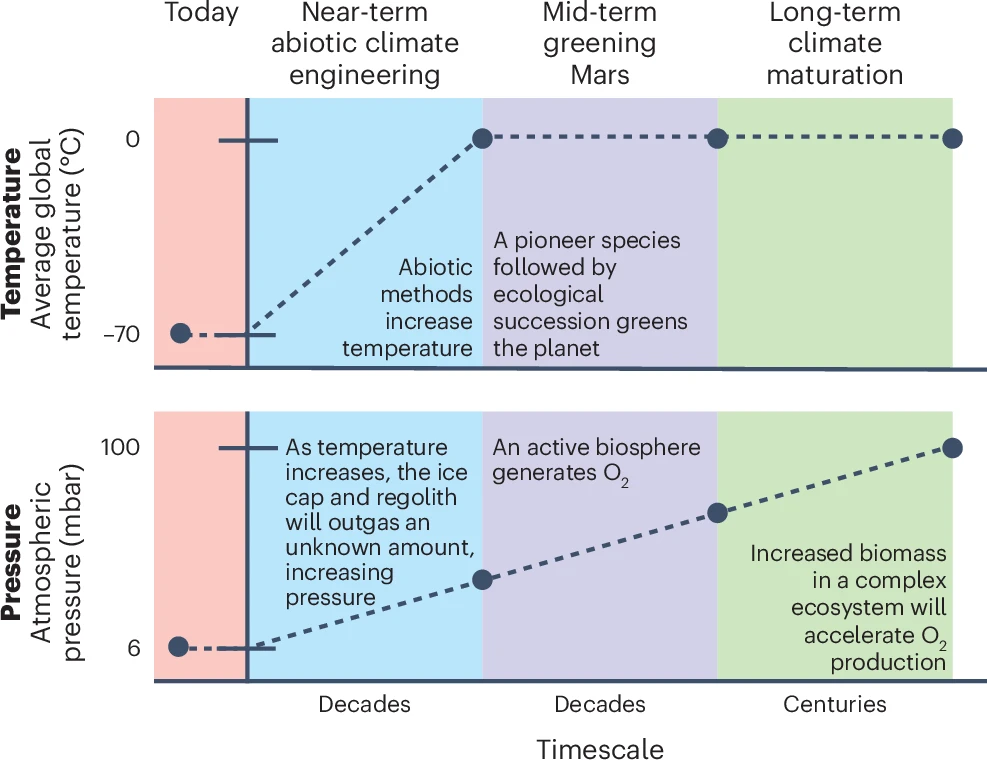
The key to this rapid progression would be the development of microbes that thrive on Mars. Bypassing the labyrinth of evolution, humans could combine traits of Earth-based microbes such as temperature tolerance (surface temperature on Mars swings from -150°C to +20°C), invulnerability to fierce radiation and toxic gas, and no preference for atmospheric pressure. Such species could lead to an algae-covered Mars within decades.
How scientists would prevent such hardy microbes from disrupting ecosystems on Earth, the team doesn't address.
The natural advantages of Mars
According to their estimates, if all the water ice on Mars melted, it could form 10,000,000 km2 of ocean at a depth of 300m. That's far less than the amount of liquid water on Earth, but it's enough to support long-term life on Mars.
In turn, the melting of Martian ice caps, which include both water and carbon dioxide ice, would increase atmospheric pressure. A thicker atmosphere would lessen the dramatic temperature swings between Martian night and day, in turn allowing the proliferation of life.
Martian soil also includes the necessary components for agriculture. Science fiction author Andy Weir exploited this so his marooned protagonist could grow potatoes in the hit 2017 science-fiction novel The Martian.
Such calculations have led planetary scientists to scour Mars for evidence of past life, mostly through remote sensing. (Soil samples are notoriously difficult to return to Earth for testing.) So far, they haven't found any evidence of life, only evidence of conditions necessary for life at some point in the distant past.
So, are we missing something?

The big unknowns
This is where DeBenedictis and Pioneer Labs' vision of Mars colonization research differs most dramatically from that of Elon Musk and SpaceX. The gist of the new paper is not that terraforming should happen now, but that scientists from different disciplines need to consider terraforming when designing future projects.
In planetary science, for example, the paper argues for continued research on everything we don't know about Mars. For instance, ice covers one-third of the planet. What's under it? More ice? Networks of caves? Liquid water? The answer could portend wildly different visions of a bioactive Mars.
They also call for extensive simulations of dust storms, a notable feature of Martian weather. Right now, planetary scientists understand dust storms on Mars fairly well. But how would dust change the atmosphere in a warmer, wetter Mars? How would the new climate alter the strength of the dust storms?
But perhaps the biggest open question for terraforming is whether Mars has enough electron acceptors to support life. Electron acceptors are molecules capable of transferring electrons -- and thereby energy -- down a chemical chain. They include carbon dioxide and nitrates, and are vital not only for photosynthesis, but also for human respiration.

Where to go from here
Despite their affiliation with Pioneer Labs, which focuses on microbe engineering, the authors don't call for the scientific community to jump on the terraforming bandwagon.
"While the possibilities are exciting, anything as big as modification of a planetary climate has major consequences and would require careful thought," they write. "But until we do more research, we do not even know what is physically or biologically possible."
In other words: research now, decide later.
"Priorities include quantifying H2O, N2, and CO2 reserves...soil sample return, test missions for proof of concept of warming methods, and climate feedback studies," they explain, linking various NASA science directives with terraforming questions.
Current NASA goals for Mars already support human exploration, they add. "No abrupt change of course is needed."
But an abrupt change of course is in store for NASA. The presidential budget request cancels all Mars research missions except for the Martian Moons eXploration, which is mostly funded by the Japan Aerospace Exploration Agency. It still wants to put colonists on Mars, but without laying the scientific groundwork first. If science takes up Mars terraforming research, it will be without the United States.
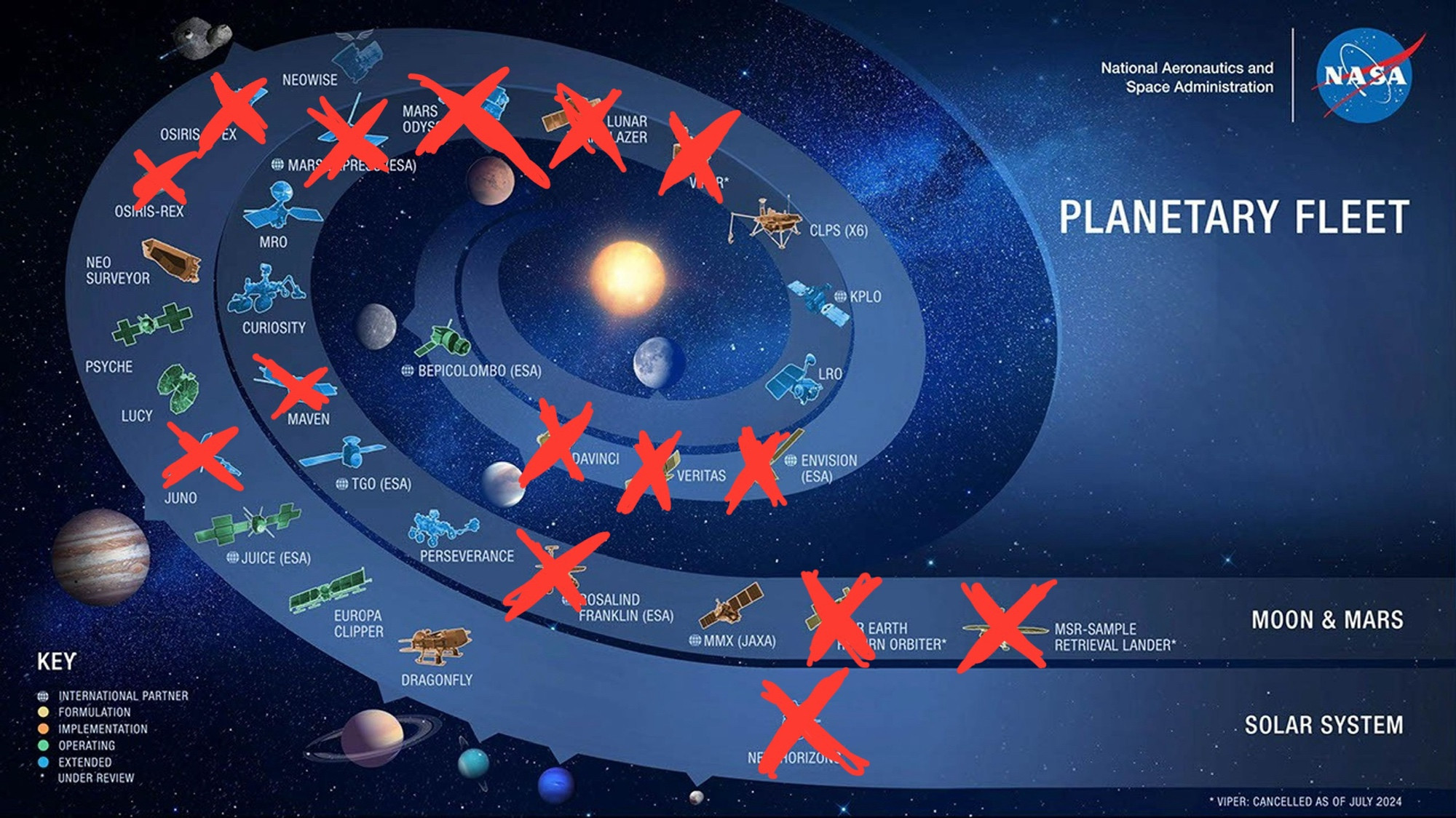
After escaping the Nazis by minutes and then getting smuggled through spy-infested Stockholm, the bomb bay of a British fighter jet might have been a relief to physicist Niels Bohr. His approach to quantum mechanics held unsettling implications about the meaning of death, and now he had nearly escaped its shadow.
The Nazis had invaded his native Copenhagen in 1940. That was three years before the father of quantum mechanics found himself strapped to the felt-lined insides of a de Havilland Mosquito with only an ill-fitting helmet, a reading light, an oxygen mask, and a thin blanket for comfort. Bohr abhorred the Nazis, but had resisted every previous attempt by the British government to evacuate him. He had work to do in Copenhagen. He was busy shuffling Jewish scholars through his Institute of Theoretical Physics. During their visits, they were all offered very prestigious, very convenient fellowships to leave the Axis territories immediately.
Bohr did not worry as much about himself as he did about others. His mother might have been Jewish, but he didn't practice Judaism. Surely if he didn't consider himself Jewish, neither would the Nazis.
Then, in 1943, a tip-off from a Gestapo worker led to Bohr's narrow escape on a boat to Stockholm. And now the fighter jet, and a helmet that didn't fit right. The rip would last only two-and-a-half hours as they flew over the contested airways to England, where Bohr would finally be safe. Perhaps he felt as though the danger of his last week was finally over.
Blackout
Over the helmet's intercom, the pilot advised him to put on his oxygen mask, as the Mosquito was nearing 7,000m. But Bohr didn't hear the announcement through his badly fitting helmet. As the Mosquito climbed, Niels Bohr, whose discoveries in physics would lead to both quantum computing and the atom bomb, lost consciousness and drifted toward death.

Nearly a decade before, Niels Bohr's colleague Albert Einstein had co-authored a paper contending that the emerging theory of quantum mechanics was incomplete.
Einstein and Bohr had been tossing the matter back and forth for years. While Bohr was far from the only contributor to quantum theory, he was its earliest and most prominent advocate. Einstein agreed that quantum mechanics appeared to work, but he thought Bohr's interpretation of it made no sense at all.
The Copenhagen interpretation
It was called the Copenhagen interpretation, after Bohr's beloved city. If you have taken a physics class that covers quantum mechanics, this is almost certainly how you learned the subject. Bohr developed the Copenhagen interpretation in conjunction with Werner Heisenberg (who would go on to lead the Nazi effort to build an atom bomb) and Max Born (who would be among the first wave of Jewish academics to flee Germany in 1933).

Copenhagen posits that at the very small scale, such as individual atoms or electrons, the universe exists in a permanent juxtaposition of different possibilities. The exact position of a particle in a box, for instance, is not defined by default. It is not merely that we don't know where a particle is. Instead, the particle has no actual location, merely probabilities of being in different locations, until we try to observe where it actually is. Then all those probabilities coalesce into an actuality: The particle is here, not there, and moreover, it will stay there even when we stop observing. We can go make a cup of tea, do some dishes, and when we come back, it will be exactly where we left it. If we shake the box around, though, the position of the particle goes back to a fluffy cloud of probabilities.
For obvious reasons, this upset a lot of people. It agreed with experiments, and the math made sense, but nothing else did. It had some pretty bizarre implications regarding how events exist in space, too, which Einstein derided with the ever-quotable line, "spooky action at a distance."
Schrodinger's cat
When Einstein and two co-authors published their famous rebuttal of the Copenhagen interpretation in 1935, fellow Copenhagen critic Erwin Schrodinger wrote to him in support. To illustrate how ridiculous the Copenhagen interpretation was, Schrodinger described a hypothetical scenario in which the fate of a cat in a box depended on whether or not a particular quantum process (in this case, the nuclear decay of an atom) had occurred. If the atom decays, a mechanism in the box releases poison, killing the cat. If the atom doesn't decay, the cat is fine. Schrodinger wrote how in this quantum system, the cat is alive and dead at the same time, "mixed or spread out in equal parts."
Ridiculous though it was, the Copenhagen interpretation agreed. If there exists some quantum process in the brain that makes the difference between life and death during oxygen deprivation, then for two-and-a-half hours, the bomb bay of the de Havilland Mosquito contained both the living (but unconscious) and the dead bodies of Niels Bohr, father of quantum mechanics.

The many-worlds theory
For such an odd theory of the universe, the Copenhagen interpretation has surprising tenacity. It has vanquished every other approach to quantum mechanics in popularity if not in evidence. Why?
Part of it is that, as the first explanation, it has priority. Part of it has to do with the fact that its rivals are even more mathematically complicated (pilot wave theory), spiritually troubling (conscious measurement theory), or far out there (many-worlds).
In the pilot wave theory, the mathematics that predict probabilities in the Copenhagen interpretation instead describe a background field along which particles travel, much like an electric field. Particles have a real position, the cat is either alive or dead, but if we try to find out specifics, then we disturb the system. We will never know if the cat was alive just before we opened the box.
Conscious measurement theory runs far in the opposite direction. Possibility only collapses into reality when it interacts with a conscious observer. It is not enough to be seen on camera, someone has to be controlling the camera and attempting to process its information. The nature of death is about the only thing that isn't unsettling about this theory: A conscious observer collapses the probabilities, so the cat (or Niels Bohr) is either alive or dead, not both.
When everywhere becomes somewhere
But as bizarre as the Copenhagen interpretation of death might be, the many-worlds theory of quantum mechanics rivals it. It began with Hugh Everett III, a PhD student studying under John Wheeler, one of Niels Bohr's former students. Everett grew troubled by the Copenhagen interpretation, which seemed unnecessarily complicated. Why mess around with this business of something that was everywhere suddenly being somewhere when observed? After all, that implies the universe rearranges itself instantaneously. If nothing moves faster than the speed of light, how is that possible?
Easy, said Everett. It isn't. Nothing rearranges itself. Instead, the different probabilities predicted by quantum mechanics don't relate to whether the particle is actually at point A rather than B. Rather, they describe the chance that we are in a particular universe where the particle is at A instead of B. When we open the box, all we do is check which universe we are in.

This all sounds rather abstract. Nonetheless, Everett's PhD advisor, John Wheeler, recognized that in many ways, it's the simplest interpretation of the probability-based math required by quantum experiments. Wheeler encouraged Everett to publish it as his thesis, including a mathematical formulation for branching universes.
In 1959, Wheeler made the mistake of sending his protégé off to Copenhagen to meet the grandmasters of quantum mechanics. The meeting did not go well. Everett later described it as "hell" and "doomed from the start." One of the physicists he met, Leon Rosenfeld, detailed his impression of Everett in a letter: "He was indescribably stupid and could not understand the simplest things in quantum mechanics."
Everett promptly left academia for defense work.
Quantum immortality
Many-worlds lay dormant for a decade. Then, in 1970, a small circle of physicists rediscovered it and coaxed Everett into elucidating his ideas. Everett never returned fully to physics, but he stayed engaged with the small community of many-worlds enthusiasts.
One of the oddest features of many-worlds is the nature of death. In the Copenhagen interpretation, the probability of Schrodinger's cat being alive when we open the box is vanishingly small, the longer the experiment goes on. So small, in fact, that it approaches zero very quickly. In many-worlds, however, there is always a universe where one version of the cat survives.
This is very nice for the surviving cat in that just-right universe and not at all nice for the different versions of it that died. Hugh Everett had a solution to this, although even he did not dare publish it. Privately, he believed that his consciousness would always stay in the universe in which it continued to exist.
Everett died of a heart attack in 1982. He was 51 years old. His daughter committed suicide fourteen years later and wrote in her last letter that she was going to join her father in a parallel universe.

The fate of Niels Bohr
When the British army opened the bomb bay of the Mosquito, they found Niels Bohr unconscious but alive. Death by oxygen deprivation is not truly a quantum mechanical process, so our analogy notwithstanding, his survival says nothing about quantum mechanics.
Bohr went on to participate in the British arm of the Manhattan Project until his morals got in the way. He believed that the atom bomb would alter the world forever, and to develop it in secret was unforgivable. Hinting at the project in letters to Russian colleagues, he found an ally in Robert Oppenheimer. With Oppenheimer's help, Bohr met with Franklin D. Roosevelt, whom he tried to convince to make the project public. Roosevelt declined. By all accounts, though, he was more sympathetic to Bohr than Winston Churchill, who wrote, "It seems to me Bohr ought to be confined or at any rate made to see that he is very near the edge of mortal crimes."
Churchill kept Bohr under close watch in England. Not until the United States bombed Hiroshima and Nagasaki was Bohr finally permitted to return to his native Copenhagen, where he dedicated much of the rest of his career to nuclear non-proliferation. He passed away in 1962, three years after meeting with a hot-headed young physicist named Hugh Everett III, who believed neither would ever truly die.
My father always insisted on swimming in mountain tarns even in the depths of winter, which we all assumed meant there was something wrong with him. But health influencers have long touted the benefits of cold water plunges. The practice has been recommended for exercise recovery, increased energy levels, and even mental health disorders.
Curious about what cold plunges actually do to the human body, researchers at the University of Ottawa decided to take a closer look. The study reveals that after only a week of regular plunges, their subjects were seeing positive changes on a cellular level.

New evidence for an old practice
Humans seem to have an instinctual belief that getting really cold for a bit is good for us. Hippocrates recommended immersion in cold water for tetanus patients, and both the Roman physician Galen and Chinese surgeon Hua To favored an icy dip to treat fever.
In more modern times, the use of icy plunges expanded to all manner of ailments. English physician John Floyer published a treatise on temperature therapy in 1697. In it, he wrote that during summertime, "it is necessary to concente [sic] our Strength and Spirits by Cold bathing." By following his own regimen, he claimed to have made himself healthier and heartier.
During the 19th century, physicians used cold therapy to treat mental illness, numb limbs for amputation (this was before actual anesthesia), and lower fevers. The upper classes started cold bathing for all manner of aches and for that ephemeral and still sought-after "wellness."
Sea bathing became enormously popular as a general health and hygiene practice. One proponent was William Cullen, an 18th-century Scottish physician who prescribed cold showers (and cold enemas) for a range of ailments. The second thing did not catch on as much.
Throughout the 20th and 21st centuries, the popularity of cold water plunges has only increased. Sports medicine, especially, has embraced the practice for post-exercise and injury recovery. But just what exactly happens to a person when they undergo regular cold water treatment?

Cellular change
The Ottawa researchers, led by Glen Kenny and Kelli King, submerged their subjects in 14°C (57˚F) water for an hour a day, seven days in a row. By collecting blood samples before, during, and after this regimen, they could watch the effects of the plunges.
At first, it didn't look good. The stress on the body was significant, and it threw off the autophagic systems of the cells. Autophagy is the cell's cleanup and recycling system. When organelles are damaged or no longer needed, autophagic processes dispose of them. The material is then reused to make new cell parts. When this system isn't working well, damaged or unbalanced cells build up. This buildup of damaged cells is part of the aging process.
If cells are damaged, the body may trigger apoptosis, which destroys a cell entirely. Apoptosis is normal, and some cells simply need to go. However, it's much more efficient to repair them through autophagy rather than relying only on apoptosis. As the subjects' autophagy went down, apoptosis went up to compensate.
But after a few days, the patients' cells started to acclimate. Autophagy picked back up, though stress was still evident as well. By day four, the subjects were "over the hump," as it were. Their cells were undergoing autophagy more and apoptosis less.

Cold plunges for all?
The results are promising. By acclimating themselves to the cold, the subjects were better able to withstand the temperature extremes they were exposed to. More than that, Kelli King called cold water plunging a "tune-up for your body’s microscopic machinery." The positive impact on autophagy has implications for disease prevention and the slowing of aging.
But this was a small study. There were only 10 subjects, all healthy adult men. People of different ages and sexes handle cold differently. For people with preexisting conditions, this sort of treatment can be dangerous.
One influential cold-water health guru, a Dutch man named Wim Hof, has faced multiple accusations of negligence for his recommendations. A Sunday Times investigation in May of 2023 revealed 11 deaths connected with his teachings, which combine ice water plunges and breathing exercises.
The American Heart Association has come out against cold therapy. Sudden exposure to extreme cold can trigger heart attacks even in young, fit people. In fact, University of Portsmouth researcher Mike Tipton, an expert in the physical effects of cold water, found young and healthy people had up to a three percent chance of cardiac arrhythmia in an icy plunge.
The University of Ottawa subjects were carefully monitored and vetted. The amateur fitness enthusiasts trying cold plunges at home are not. So take this study as it is: fascinating preliminary research. Not a how-to guide for a frigid DIY fountain of youth.

Everything that falls into a black hole falls in at the same time. Perhaps in the distant past, some unfortunate alien astronaut was sent past the event horizon to explore what lies beyond. From our perspective, he is still falling across the threshold. He has been since he first fell in, back before his civilization crumbled, before his home planet tumbled into its sun, and that sun collapsed into a white dwarf.
From his perspective, he only just crossed it. What will he find on the other side? As of right now, physics only has guesses. In this week's Great Mystery of Outer Space, we cover the uncertain insides of black holes.

Black holes might be mysterious, but they're real
Albert Einstein believed black holes to be a grand mistake. They were a natural extension of his theory of general relativity, a set of otherwise airtight formulations of how gravity and light behave, but they could not possibly be real. After all, how could anything have mass if it was infinitely small? How could it trap light within it, thereby removing information from the universe?
He set out to disprove their existence in a 1939 paper, and while his conclusions were correct, he started from a set of assumptions that were not.
Unfortunately for Einstein, the existence of black holes has now been proven over and over again. First, by strange X-rays from a star being shredded apart by something massive. Then came the ultra-bright radio emission in the center of galaxies from disks of matter orbiting an invisible center. Strange orbits, things lurking at the heart of supernovae remnants, and huge jets of plasma in distant galaxies all added evidence.
In 2015, the Laser Interferometer Gravitational-Wave Observatory (LIGO) detected gravitational waves from a pair of distant black holes colliding. And finally, in 2019, the Event Horizon Telescope (EHT) succeeded in directly imaging the center of nearby galaxy M87. Black holes don't emit light, and the shadow they leave is visible against the bright plasma around them. The EHT images of M87's black hole shadow are the closest we can get to photos of a black hole itself.

The anatomy of a black hole
Hear me out: black holes are the simplest objects in the universe. No, really, I promise. They only have two features of note.
The first is the event horizon, which isn't technically part of the black hole itself. Instead, it's the distance from the black hole where gravity becomes so strong that nothing, not even light, can escape the inexorable pull toward the center. Material caught in the black hole's orbit circles around the event horizon, disrupted by the strong gravity and by colliding with other matter. This is what causes the bright rings known as accretion disks and the flares called, in various different circumstances, quasars or active galactic nuclei.
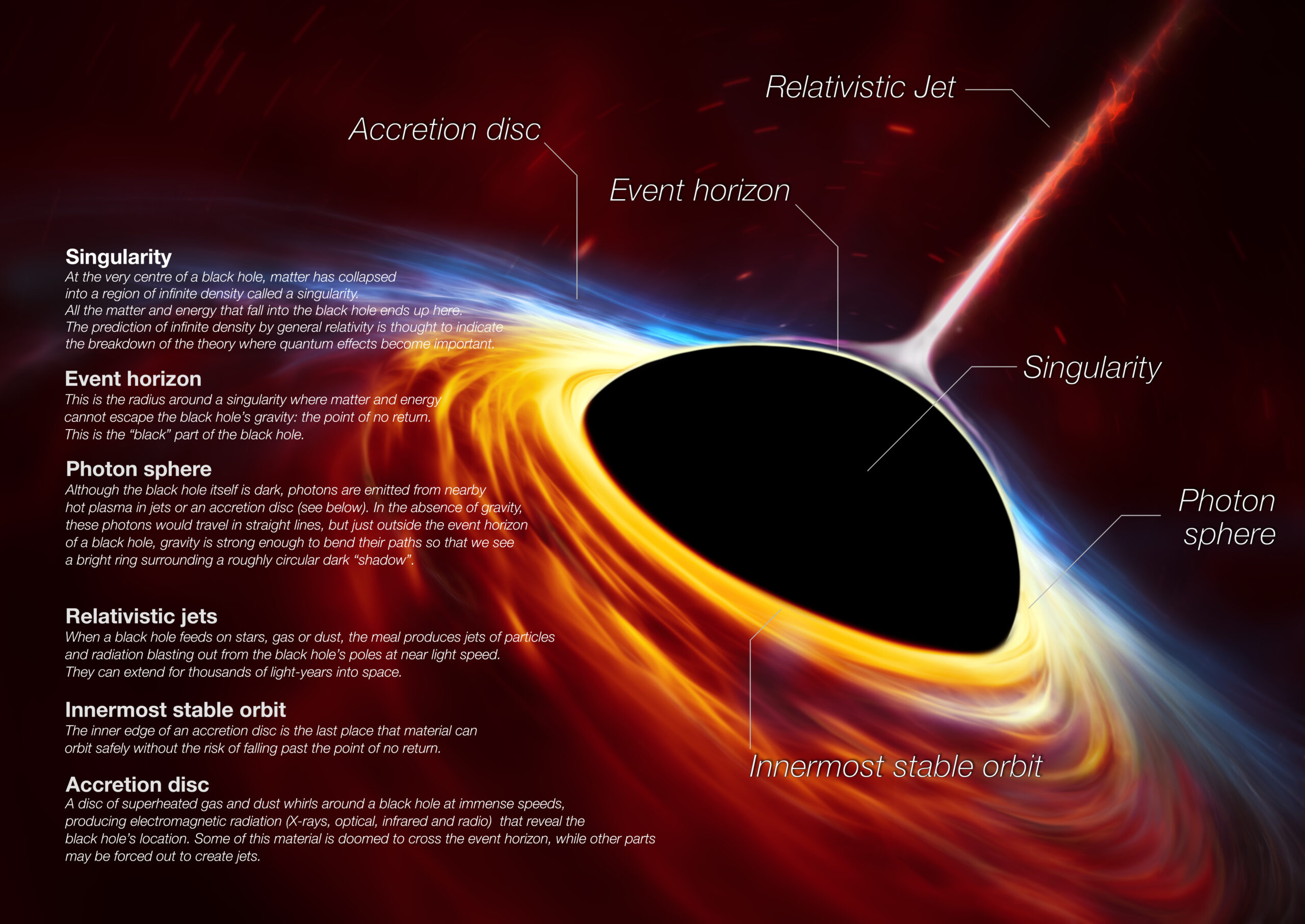
Right at the event horizon is where things get very, very strange, but it's a known kind of strange. The laws of general relativity predict that everything that crosses the event horizon crosses it at the same time, and to an outside observer, things crossing it freeze. In fact, before physicist John Wheeler coined the term "black holes," most physicists referred to them as "frozen stars." (Personally, I find the original name much more evocative.)
Far below, at the center, lurks the singularity. It is an infinitely small point or, in certain peculiar cases, an infinitely thin ring. It can weigh up to 1011 times the mass of the Sun. It has no dimensions, no volume, no time. But it has a lot of mass.
Just what is a singularity?
In the clumsiest terms, a singularity is a place that's very weird compared to everything else around it. The usual laws don't seem to behave so well around singularities; that's what makes them so singular. The idea of a point with infinite density makes sense on paper. It falls right out of Einstein's equations, much to the consternation of Einstein himself. But elsewhere in physics, the presence of singularities tends to indicate the theoretical models are missing a few components.
That's what many physicists believe is happening with the black hole singularity. The infinitely small point might not physically exist, but general relativity can't quite grapple with the true nature of black holes.
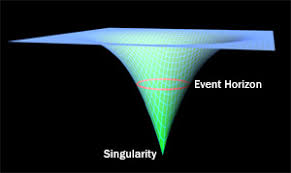
If the singularity is quite small but not infinitely so, then it's the purview of the theory known as quantum gravity. Unfortunately, quantum gravity barely exists.
The world of physics needs a mathematical formulation of how gravity behaves at small scales. It needs something revelatory and revolutionary, the quantum gravity equivalent of general relativity. That's a hard ask. The only widely popular framework to attempt it is string theory, an astoundingly beautiful theory of nature that, after more than 60 years of development, has yet to predict anything testable.
So the nature of the singularity remains, for now, a mystery.
Okay, but what would the 'singularity' actually do?
We don't know what a singularity is. Do we know what it does?
The answer is maybe. General relativity is a set of laws, not a recipe. Mathematically, there are many recipes for how space works that obey the laws of general relativity. Among these recipes (obscurely called "metrics" in physics lingo), several are more pertinent to our lived reality than the others.
The Schwarzschild metric, for instance, describes spacetime around spherically symmetric points, black holes included, as long as those points aren't spinning. The Kerr metric takes it a step further and describes spacetime around points that are spinning, which adds in a slew of bizarre effects with intimidating names like "frame dragging."

Buried in some of these distinct metrics are places where Einstein's equations give out. With well-understood metrics there as guide rails, physicists can fill in some of the blanks.
Currently, common thought is that the unknowable singularity at the center of a black hole probably devolves into three marginally more knowable ones as the black hole ages.
Singularities to watch out for
Three singularities in particular might haunt the insides of an aging black hole. We'll start with the worst news first: the BKL singularity. Formally named the Belinski–Khalatnikov–Lifshitz singularity after its discoverers, the BKL singularity is also known as the chaotic or oscillatory singularity. That's because as an observer approaches it, their body is subject to increasingly violent tidal forces that alternately stretch and compress them. If anything in a black hole is most out to get humans, it's the BKL singularity.
Then there's the ingoing singularity. All of the matter and light that falls into the black hole gathers together, falling for infinity. The gravity of this region can be so strong that it forms its own singularity. Good news, though: the region where matter congregates might be so thin that other objects can actually pass through it undeterred.
Similarly, the outgoing singularity arises from the light that bounces off things inside the event horizon and then travels backward, colliding with the ingoing singularity. What happens then is unclear, but once again, it might be avoidable.
The predictions above have serious mathematical credentials, but at the end of the day, the nature of the singularities are still unknown. So, too, is the state of matter inside a black hole. Can matter survive the event horizon? Where is it located? Is it converted to light or even gravitational waves?
We can only hope that a new theory of quantum gravity will illuminate the insides of a black hole.
I've long been a big fan of Greek mythology and all the wondrous beasts that tested, and sometimes bested, mythical heroes. One such creature was the chimera, a grotesque hybrid of a lion, goat, and snake. But chimeras are not only fairy tales or figments of an overactive ancient Greek imagination.
A chimera is an organism with two different genetic materials or DNA, often resulting in unusual physical characteristics and genetic mutations. Scientists can create chimeras, or they can occur naturally.
Chimerism in humans
Though rare, chimerism in humans can emerge as early as conception. While pregnant, a mother and baby exchange DNA, making them "microchimeras."

Chimerism also occurs when two embryos fuse. This is called twin chimerism or the "vanishing twin phenomenon." The resulting individual takes on cells from both embryos, resulting in a mixed genetic makeup. The baby that's born usually displays one or more of the following: different-colored eyes, mixed skin tones or birthmarks, patches of hair with different textures, or both male and female genitalia.
Sometimes, twin chimerism can make DNA testing difficult, particularly paternity and maternity tests. If a father or mother is a chimera, there is a chance that the DNA of his or her vanished twin could pass to a child.
Chimerism can also save lives. If someone has a blood transfusion or an organ transplant, they take on some of the DNA of the donor. The same goes for bone marrow transplants. If the transplant is successful, the donor's stem cells migrate to the recipient's bone marrow, where they produce blood cells. As a result, their cells and blood type will change.
Chimerism is not always obvious, and many people pass through life not knowing that they are an anomaly.
Human-ape hybrids?
In the 1920s, Soviet biologist Ilya Ivanov created a stronger and more resilient horse using artificial insemination. He aimed to increase agricultural production. He also created animal hybrids, like the zeedonk (zebra-donkey) and zubron (bison-cow).
After these successes, Ivanov turned his attention to creating a race of human-ape hybrids. Ivanov appealed to the Soviet government and received a grant of $10,000 to prove Darwin's theory of evolution. He took his venture to French Guinea, where he inseminated local women with chimpanzee sperm without their knowledge. He led the women to believe it was a medical exam.
His horrific experiments did not work, and he was disgraced. Eventually, the Soviets exiled him to Kazakhstan, where he died in the early 1930s.

Allegedly, another set of chimera experiments occurred in China in the 1960s. Unconfirmed reports from the Wenhui Bao newspaper stated that Chinese scientists succeeded in impregnating a female chimp with human sperm. According to a scientist quoted in the paper, the authorities arrested the scientists during the Cultural Revolution, and the chimp died of neglect.
Other human-animal hybrids
In the 1980s, Stanford University scientists injected mice with human stem cells to try to develop a human immune system in them.
In 2020, scientists at the State University of New York at Buffalo and Roswell Park Comprehensive Cancer Center successfully implanted human stem cells into a mouse embryo. The mouse had 4% human cells, the highest percentage ever achieved. Over two weeks, the embryo developed human eye cells and red blood cells. Scientists hope to treat diseases with the cells.
In 2003, scientists in China created a hybrid embryo using human and rabbit cells. The purpose of the experiment was for the rabbit to grow human organs, cells, or tissue to harvest for transplants. They also inserted human cells into pig embryos, hoping that the pigs' kidneys would have human cells.
Most recently, experiments by Juan Carlos Izpisua Belmonte and his team at the Salk Institute created a human-monkey chimera embryo. It took four years, and the embryo successfully grew for a few days before the team destroyed it. His team also produced a rat-mouse hybrid by injecting stem cells from rats into mouse embryos.
Ethical concerns
Researchers believe that hybrids can provide us with organs for transplants. Others think they could hold the key to curing diseases like AIDS, Parkinson's Disease, Hepatitis, or neurodegenerative diseases.
By introducing human stem cells into developing ape embryos, scientists hope to investigate the similarities and differences between species. This could help unlock breakthroughs in regenerative medicine, organ transplantation, and the evolution of certain traits.
Rats and mice are often used in genetic research because they have surprising similarities to humans in immune system structure, genetic makeup, and physiology.
Transplant waiting lists can be extremely long. It can take many years before a prospective patient reaches the top of the list. So, for many, the natural reaction to chimera experimentation is favorable.
However, bioengineering also raises ethical concerns. If scientists created a successful human-animal hybrid, would it be entitled to human rights? Does "playing God" with chimera experiments carry unforeseen consequences? The topic is controversial, and most governments place restrictions on chimera experimentation.
Conclusion
Most governments don't allow scientists to inject animal cells into a human or human embryo to respect the dignity of human life. However, scientists are permitted to inject human cells into animal embryos. These embryos are not carried to term and are usually destroyed after the experiment is finished. Because these experiments are controversial, researchers usually do not have access to public funding.
In March 2022, a Saharan dust storm turned skies a hazy orange across Europe. The far-ranging dust cloud contained radioactive particles from Cold War nuclear tests, according to a new study.
The major dust storm prompted a citizen science campaign that asked the public to collect dust samples. In total, volunteers collected 110 samples across Belgium, Spain, France, Austria, Luxembourg, and Germany. Researchers at the Paris-Saclay University in France then analyzed 53 samples from those six countries. All showed the presence of radioactive isotopes, especially plutonium and cesium.
In the 1960s, France detonated 17 atomic bombs in the Algerian Sahara. They claimed that by dropping them in the desert, the bombs would have no impact on human life. That they would only be dropped in uninhabited regions. In reality, the radiation affected between 27,000 and 60,000 people.
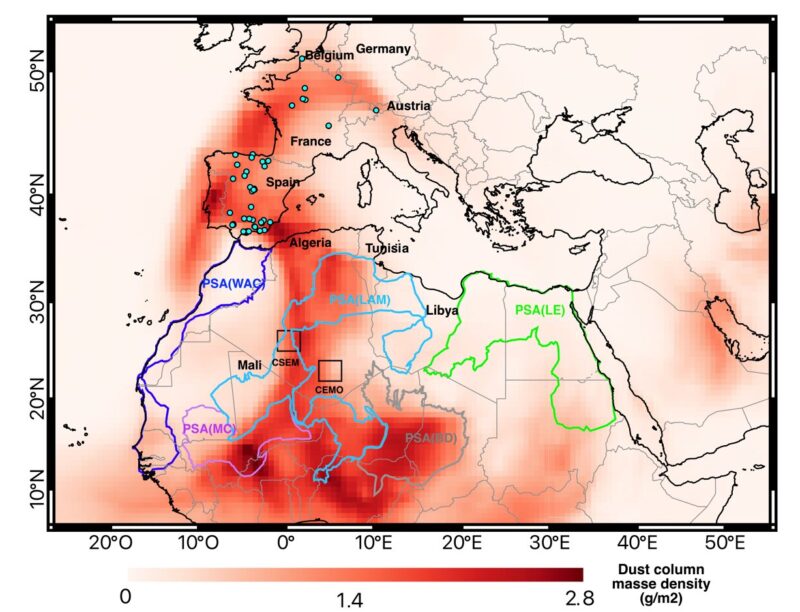
Global reach
Initially, the team suspected that the radioactive dust came from those Algerian tests, but the isotopic signatures did not match up. Instead, they matched the signatures from American and Soviet nuclear tests in the 1950s and 1960s, even though these did not take place in the Sahara.
"Plutonium isotopic signatures, a unique nuclear bomb fingerprint, remained in the range of the global fallout signatures largely dominated by U.S. and former USSR nuclear tests,” commented the researchers. "[They were] significantly different from French fallout signatures."
Between them, the two superpowers undertook hundreds of nuclear tests across the planet. Many studies have proven how far the radioactive particles spread.
“Much of the USSR and U.S. nuclear weapon tests [took place] at the same latitude as South Algeria, and the debris of these tests can reach 8,000 meters high and be dispersed by wind very quickly at a global level,” lead author Yangjunjie Xu-Yang told IFLScience.
This research highlights the long-lasting presence of decades-old nuclear testing.
The actual level of radioactivity within the samples was relatively low and is not considered harmful.
Cell phone dead zones in the U.S. took another step toward oblivion yesterday. T-Mobile and Starlink are now beta-testing their direct-to-cell satellite texting capability for iPhones.
The T-Mobile Starlink system uses some 300 Starlink satellites to provide coverage across parts of North America that have historically been empty of cell signals. Essentially, the Starlink satellites function as mobile, orbiting cell towers.
The Federal Communications Commission (FCC) approved the partnership in November of last year, and T-Mobile announced shortly thereafter that iPhone-using customers could register for the test. Earlier in the fall, the FCC had granted temporary approval for Starlink and T-Mobile to put the system into action when parts of Western North Carolina lost cell signal during Hurricane Helene.
According to T-Mobile's website, voice and data capability will soon follow. The direct-to-cell beta-test capability rolled out with the iOS 18.3 software update.
It's big news for the adventure world. Currently, outdoor aficionados who want to stay in contact via their phones have to use third-party satellite messaging devices or dedicated satellite phones. One less gadget to carry around is always a good thing, assuming you are the type of person who likes to stay in contact.
While the initial Beta test is only taking place in the U.S., it's just a matter of time before the program expands to other countries.
Of course, there is a downside. The increasing number of Starlink satellites streaking across the night sky is a serious bother for astronomers and scientists attempting to learn more about our cosmos.
In September 2023, a colossal landslide in East Greenland triggered a mega-tsunami in remote Dickson Fiord. The vibrations were felt around the world for nine consecutive days. For a year, scientists have grappled with what caused the incident.
The area where the landslide and tsunami occurred is uninhabited, but monitoring stations across the world picked a huge seismic signal. The readings showed waves ricocheting back and forth through the fiord every 90 seconds.
Although no one lives there, cruise ships do enter the fiord. Luckily, none were there that day. However, one did venture into the fiord the following day and noticed that on nearby Ella Island, a research station's boat and a shipping container, both usually on land, had been washed out to sea. The station itself was also damaged.
Unidentified Seismic Object
Kristian Svennevig from the Geological Survey of Denmark and Greenland (GEUS) suspected an earthquake or a tsunami. But the nine days of reverberations baffled scientists. The vibrations did not match those of an earthquake or tsunami. They dubbed the incident a USO -- an Unidentified Seismic Object.
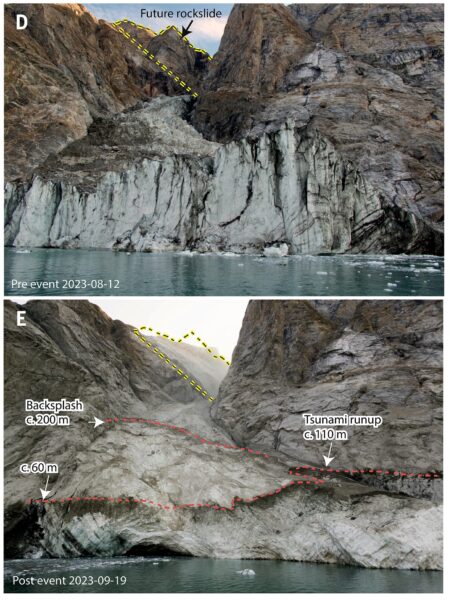
Svennevig and 68 scientists from 15 countries spent a year trying to figure it out. They used everything from seismometer data, satellite imagery, field measurements, and tsunami simulations to piece together what actually happened.
The first thing they looked at was satellite imagery and aerial photos. This revealed that vegetation along the shoreline of the fiord had been wiped out. On Ella Island, plants had disappeared up to four meters above the water line. This distance increased as they looked at more westerly photos. This indicated that the waves must have come from the west and moved eastward.
Sloshed back and forth for nine days
Other satellite photos, taken on September 15 and 17, the days before and after the tsunami, revealed that a mountain ridge west of the fiord had disappeared. Approximately 25 million cubic meters of rock and ice from the mountain had plunged into the sea, generating a 200m-high tsunami that sped along the fiord at 160kph. The waves fell to seven meters within a few minutes but bounced back and forth for nine days against the cliffs of the fiord, gradually getting smaller and smaller.
Tsunamis usually dissipate after a few hours but this one was trapped in the narrow fiord and couldn’t.
“This landslide happened about 200km inland from the open ocean, and these fiord systems are really complex, so the wave couldn't dissipate its energy," Stephen Hicks, co-author of a paper on the event, told the BBC. "We’ve never seen such a large-scale movement of water over such a long period.”
The study concluded that climate change caused the initial landslide. The glacier next to the fiord sits at the base of the mountain and supports it. As the glacier thinned from rising temperatures, it became unable to support the overlying rock mass, leading to the catastrophic collapse.
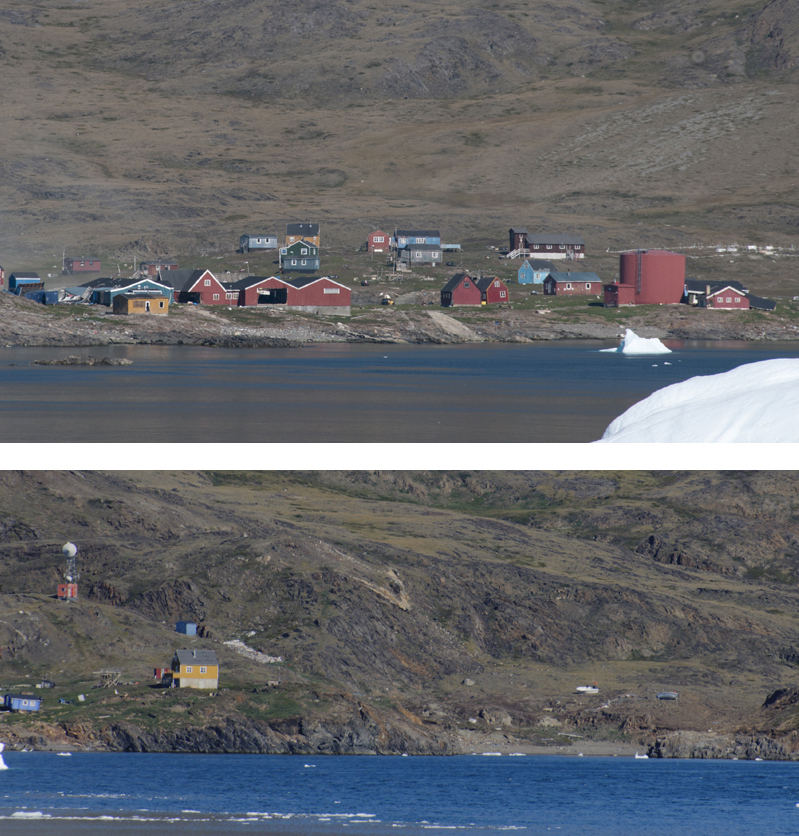
Another tsunami
A similar event occurred in Greenland in 2017. A landslide fell 1,000m into Karrat Fjord and set off a 100m-high tsunami. By the time it hit the remote community of Nuggaatsiaq, it was nine meters high. Four people were killed and nine were injured. Buildings were washed out to sea, boats landed 50 meters uphill. All residents were evacuated, and the settlement is now abandoned because of the ongoing threat of landslides.
Researchers are calling for enhanced monitoring of mountainous regions to protect people from similar events, which will happen more often as the climate warms and the ice that glues the frozen mountains together thaws.
In 1929, Edwin Hubble discovered from observations of distant galaxies that the Universe was expanding. This baffled astronomers and the public alike. Then in 1998, another wrinkle: Two different teams of cosmologists found that not only was it expanding, but that expansion was accelerating. This confused them even more since they couldn't figure out what was driving the acceleration.
They named the mystery component dark energy. Although no one knows what it is, it has some peculiar properties. As far as we know, the density of dark energy is a constant throughout space. That means every cubic meter has the same exact amount of dark energy, and as the universe expands, it creates more. (Don't worry -- total energy is conserved since the expansion of the universe also drives its gravitational energy further into the negatives).

How much will the Universe actually expand?
Our uncertainty about the history and future of dark energy allows for three different fates for the Universe. In a future where dark energy density suddenly increases, the Universe will explosively rip itself apart. If, instead, dark energy density drops, then the Universe will reverse its expansion and bounce back upon itself. But according to all our current knowledge, dark energy density will remain constant. The expansion will continue coasting along with the same acceleration. That's the future we'll explore in this article.
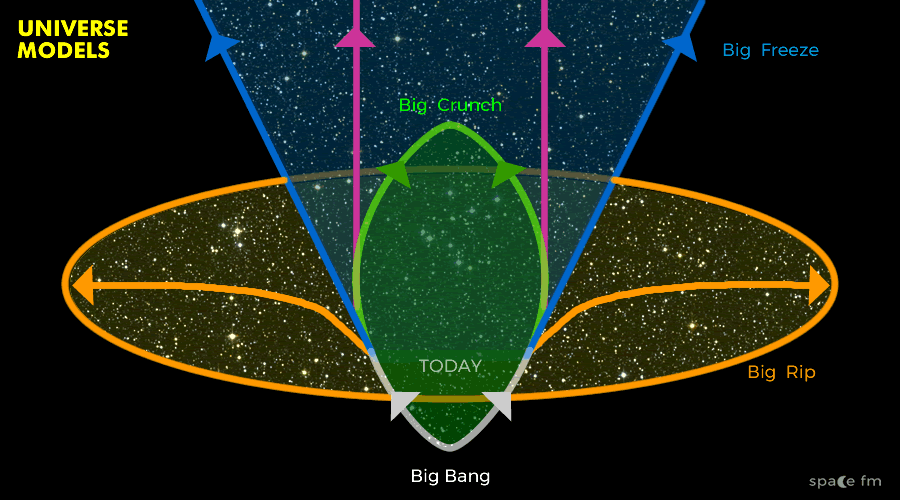
When last we looked at the future of existence, the Sun had just jettisoned most of its matter into space, destroying the planets and leaving behind its molten core. That's eight billion years from now. The solar system is more or less gone. But the galaxy is still there, and it has a lot more in store.
150 billion years from now

Where 47 galaxies, including the Milky Way, once orbited one another, a monster now sits. The mega-galaxy comprises over one trillion stars. Since massive blue stars die young, most of the survivors are very small and red. Except in a few pockets where merging galaxies compressed and heated interstellar gas, no new stars have been born for eons.
From almost anywhere in the Local Group, all an observer sees above is a milky-white haze clogging the sky. Because the mega-galaxy's stars are small and faint, most of them don't show up as individual pinpricks. Gone are naked-eye constellations, the multicolored nebulae, and the galaxies visible between the stars.

And on the edges of the mega-galaxy, the outside universe is dark. The expansion of space has pulled other galaxies so far away from us that the light from their stars will never reach us. Only the photons of the Cosmic Microwave Background, which have traveled toward us since a time when the Universe was on fire everywhere, reach the Local Group from outside.
1 trillion years from now
An unassuming rocky planet orbits a red dwarf, the smallest and dimmest of all true stars. Perhaps it has intelligent life on it. Perhaps they build a telescope, and look up at the sky.
In one direction, the starry mist of the Local Group mega-galaxy blocks out all. A few nearby points of light stand out of the morass. The people on this planet know that their star is not alone, and they search for life around other stars just as we search today.
In the other direction is blackness. It is absolute. The expansion of space has stretched the wavelengths of Cosmic Microwave Background photons past the size of the observable universe. They wash over the telescopes on that insignificant planet, but they're not really light in the same way that the current of a river is not an ocean wave. They carry no information.

Among the information they don't carry is evidence of the Big Bang. Because the Cosmic Microwave Background is identical in every direction, and light would never have enough time to travel between all of the locations on its surface, all of those locations must once have been very close together.
It's possible that the observers would be able to determine the density of dark energy from the trajectories of stars ejected from the mega-galaxy. If so, they could make the leap to an expanding Universe and the possibility that somewhere out there, farther than they can see, are others like them.
100 trillion years from now
The era of star formation is at an end. There is no longer any gas left between stars to give rise to new ones, and no massive stars to replenish it via explosive supernovae. In fact, there are very few stars at all.
When stars run out of fuel to burn, they form one of three remnants. White dwarfs are the lightest, comprised mostly of helium or carbon and oxygen. Then there are neutron stars, which are so dense that they're able to compress protons and electrons into a crystal lattice made of neutrons. And finally, there are black holes. For the most part, these are the objects which now make up the mega-galaxy.
Every so often in this stellar graveyard, though, something new flickers into life. Floating among their massive counterparts are the ruins of stars that never made it in the first place. More like solitary Jupiters than our Sun, brown dwarfs don't burn hydrogen and are only visible up close. When two of these brown dwarfs collide, they create a real star.
Most of the galaxy is still dead, but not all.

100 sextillion years from now
All galaxies have disintegrated. Sooner or later, their constituent components either ventured too near the central supermassive black hole or rocketed off into space.
Now, a white dwarf sits in a vacuum. It doesn't drift. There is nothing else in its visible universe relative to which it might drift. Dark energy has ripped apart everything not bound by internuclear forces.
If ever this white dwarf had a planet, it absorbed it long ago. Now it sits, and perhaps it spins gently. And, ever so slowly, it evaporates. Its protons may undergo a theorized decay process. If they don't, random quantum flukes allow the structure of the white dwarf to rearrange itself on unimaginably long timescales.
Either way, the white dwarf jettisons photons and other particles. Space expands between them, and they vanish over the horizon of the visible universe.
1 nonillion years from now
The supermassive black hole that used to lurk at the center of the Milky Way is a lot more supermassive now. It has subsumed every other black hole, every brown dwarf, planet, and stellar remnant that didn't escape the mega-galaxy.
Counterintuitively, black holes aren't perfectly cold. They have a faint temperature arising from a bizarre quantum mechanical effect. Pairs of photons pop into and out of existence all the time without anyone noticing, like the background static of existence. Then, a fraction of a second later, they annihilate one another.
Sometimes, virtual photons pop into existence right outside the event horizon of a black hole. Since the photons have slightly different directions, it's possible for one of them to cross the event horizon, never to be seen again. That leaves the other one free to sail off into the wide, wide world.
So black holes emit light, and anything that emits light loses energy. Slowly, very slowly, this unfathomable black hole is evaporating.
10106 years from now
All the black holes are gone, and the universe consists of a very diffuse particle soup. Electrons and photons bubble in a weak gas. Collision by collision, they exchange energy with one another. When two people hold hands, their skin approaches the same temperature. The same is happening for the Universe.
We don't know what that temperature is, and anyway, it's irrelevant. Differences in temperature drive physical processes, like hot steam against cold air in the dry pipe of a train. When everything is the same temperature, nothing will ever happen again.
Two electrons collide, and their energies edge toward one another just a little bit more.
Nowhere and nowhen
The Universe exists. It is made up of photons and electrons and a handful of more obscure particles. All of them have the same energy. Everything is the same in every direction. In many ways, everything has always been the same.
That's because time is defined by the direction of increasing sameness. If you fill a salt shaker with pepper on the top and salt on the bottom and then let it roll down the hill, it will show up at the bottom as a nice salt-and-pepper mix. In this case, gravity speeds up a more universal process. This measurement of sameness is called entropy, and it's always increasing. That's what makes today different from tomorrow.
Now, there is no tomorrow. There's just today, on and on and on.
Why did the woolly mammoth cross the road?
Or more specifically, why did the woolly mammoth cross the road, but not the woolly rhino?
A new study could explain why some ancient animals, like mammoths, crossed the Bering Land Bridge to North America during the last Ice Age while others, like woolly rhinos, stayed put in Eurasia.
Last year, a team of researchers led by Sarah Fowell, a paleogeologist at the University of Alaska Fairbanks, used sediment cores and sonar readings to study the seafloor at the bottom of the Bering Strait. They examined the shallowest parts of the ocean floor, i.e., the parts that would have been above water between about 36,000 and 11,000 years ago.
Until the study, scientists mostly assumed the Bering Land Bridge would have looked very much like other dry, northern land at the time — a steppe ecosystem, heavy on grass with some large bodies of water breaking up the terrain.
“We were looking for several large lakes,” Fowell said. “What we actually found was evidence of lots of small lakes and river channels.”
The team's sediment cores also turned up moss leaves, egg cases, and other fossils that indicate "widespread water in the region."
In short, the Bering Land Bridge was more of a Bering Land Swamp, analogous to the modern-day Yukon-Kuskokwim Delta in western Alaska, the scientists said.
Why not the woolly rhino?
The first-of-its-kind study could help explain why some animals (including humans) crossed between North America and Asia while others stayed put. A bog would be no issue for a mammoth, especially if, as Fowell and her team suspect, there were still areas of higher, drier terrain to be found on the crossing. Birds would have also loved it. But animals like the woolly rhino shied away from such environments, preferring to stay on the arid tundra to which they were more accustomed.
The study is a good example of how longstanding scientific assumptions can be upended when the right minds come along to tackle the problem.
“We’ve been looking on land to try to reconstruct what is underwater,” said Jenna Hill, a geologist with the U.S. Geological Survey also involved with the study. “But that doesn’t really tell you what was on land that is now submerged between Alaska and Siberia.”
The Bering Land Bridge
Scientists believe that the Bering Land Bridge emerged at a moment when cooler temperatures caused much of the planet's seawater to become locked up in ice.

They estimate that sea levels during the last Ice Age were as much as 122m lower than they are now. At that level, an area of "dry" land as wide as 1,000km would have stretched from Asia to North America across what is now the Bering Strait. Today, some islands — St. Lawrence Island, King Island, and several others — are all that remain of the once huge migratory pathway.
Fowell and her team presented the study this week at the Advancing Earth and Space Sciences annual meeting in Washington, D.C.
Over the last 12 months, scientific news has ranged from the sublime to the frankly offbeat. At the start of 2024, we had no idea that polar bears once roamed Scotland, that geckos have a sixth sense, or that octopuses square up with lazy hunting companions.
This year, we've seen astronauts stranded on the International Space Station and the world's most complete stegosaurus fossil fetch $45 million at auction. Orcas are again wearing salmon hats, Greenland sharks hold the key to anti-aging, and we now know that hobbit-sized humans once thrived in Indonesia.
There were hundreds of stories for ExWeb readers to delve into, but these are our pick of the most interesting of 2024.
Space travel takes a toll
This Is What Space Travel Does to Your Body: NASA astronauts have been the subject of much speculation this year. Suni Williams, who has been on the International Space Station for much longer than planned, looked thinner in recent photos. Another astronaut arrived back on Earth in October and went straight to hospital.
Both astronauts say they are fine, but there is no denying that space takes a toll on the human body. From irregular heartbeats to bone and muscle loss, here is a run-through of what happens to our bodies in space.
Blood Thinners, A New Way to Treat Cobra Venom: Snakes bite 1.8 million people a year. If the snake is venomous, quickly receiving the correct antivenom is crucial. Antivenoms have to be administered in a hospital, and though they do save lives, they do not stop tissue damage. Unfortunately, most bites happen far from medical help.
Now, researchers have discovered a new way to treat cobra bites, using blood thinners. Blood thinners limit necrosis around the bite and may help prevent amputations. Scientists hope that heparinoid blood-thinning medication could eventually be put in epi-pen devices for rural areas. This would give people a chance to get to the hospital without tissue damage taking hold.

An iceberg in a vortex
World’s Largest Iceberg Trapped in a Vortex: A23a, the world's largest iceberg, is spinning in place off the coast of Antarctica. It might continue to do so for many years. The size of Rhode Island, the giant slab of ice is trapped in a vortex known as the Taylor Column. Most imagine a vortex spinning quickly, but the iceberg is rotating 15° per day -- a suitably glacial pace.
Johann Bessler and the Greatest Physics Fraud in History: Johann Bessler created a seemingly impossible wheel that would spin indefinitely. Nothing seemed to power the wheel, and Bessler demanded a £10,000 sum from anyone who wanted to know about the inner workings. How Bessler created the wheel is still a mystery. Was he a genius or a con man?
A rarest of rare sight of a bear charging towards a tigress, captured today at Pilibhit Tiger Reserve- A CATS( Conservation Assured Tiger Standards) habitat developed assiduously by UP Forest Department.
Pl don’t miss the calm and composure of Big Cat even in face of attack &… pic.twitter.com/jU48UWpTqJ— Dr Rajiv Kumar Gupta IAS (Retd) (@drrajivguptaias) April 30, 2024
Tiger vs Bear
Clash of the Jungle Giants: Tiger vs Bear in India: Most of us would imagine that a clash between a bear and a tiger would be titanic. The reality is usually very different.
Safari goers in India's Pilibhit Tiger Reserve watched a tigress stalk across a dirt road when a sloth bear stumbled onto the track ahead of her. Apex predators with completely different prey, the two species don't compete. Rather than fighting, the two animals scoped each other out before going their separate ways.
Erebus At Risk: Researchers discovered the ships from John Franklin’s lost expedition in 2014 and 2016. Now, the race is on to salvage artifacts and information from HMS Erebus and HMS Terror.
Erebus sits just 11m down in the Queen Maud Gulf. Parts of the ship are already starting to collapse and disintegrate. The shallow water leaves the ship vulnerable to ferocious storms.

World's largest snake
World’s Largest Snake Found Dead in the Amazon: Earlier this year, scientists in the Brazilian rainforest discovered the largest snake in the world: a northern green anaconda. Their genetic analysis proved that the southern green anaconda and northern green anaconda are separate species.
Freek Vonk captured footage of a 6.3m snake dubbed Ana Julia. Just weeks later, the same snake was found dead.
Terrified Hikers Flee Erupting Volcano: Drone footage captured a group of hikers fleeing an erupting volcano in Indonesia. Sitting in the Pacific Ring of Fire, a region famed for its active volcanoes, Mount Dukano has erupted continuously since the 1930s.
Indonesia has strict rules for visiting volcanoes. A Level II warning bans hikers from getting within 3km of the crater. But the hikers ignored this and ended up scrambling for their lives.
Not the catch he wanted
Giant Crocodile Jumps into Fisherman's Boat: Animals have had enough of humans and their boats. First, we had orcas actively trying to sink ships, and now crocodiles have joined the party.
While Richard Brookman was fishing in Jane Creek, Queensland, a ginormous saltwater crocodile threw itself into his boat. Brookman had spotted the eyes staring up at him from the dark water but wasn’t overly concerned; crocodiles are common in the area. Too late, he noticed it was four meters long, a whole meter longer than his boat, and making a beeline for him.
A Look At The Next Two Billion Years on Planet Earth: The concept of deep time is tricky. Humans struggle to comprehend what will happen to Earth over the next few billion years.
From the Sahara becoming a lush grassland to Nepal disappearing and the creation of a new supercontinent, geologists and astrobiologists predict Earth's distant future.
Blink and you'll miss it: two momentary blue flashes in a set of photographs of a serac fall. The man who took them has a theory that hits on unanswered questions in physics.
Astrophotographer Li Shengyu has a history of taking internet-breaking photos of the sky. As an award winner of Beijing Planetarium's 2023 photography contest and a viral sensation for his videos of auroras in Inner Mongolia, he knows how to direct eyes to the stars. Now he's got amateur astronomers looking at the ground.
Yesterday, SpaceWeather.com published time-lapse footage by Li showing a serac collapsing on Sichuan's Mount Xian Nairi. As a sheet of ice cascades down the face of the mountain, a blue light follows it in brilliant flashes.

Blue lights illuminate a sacred mountain
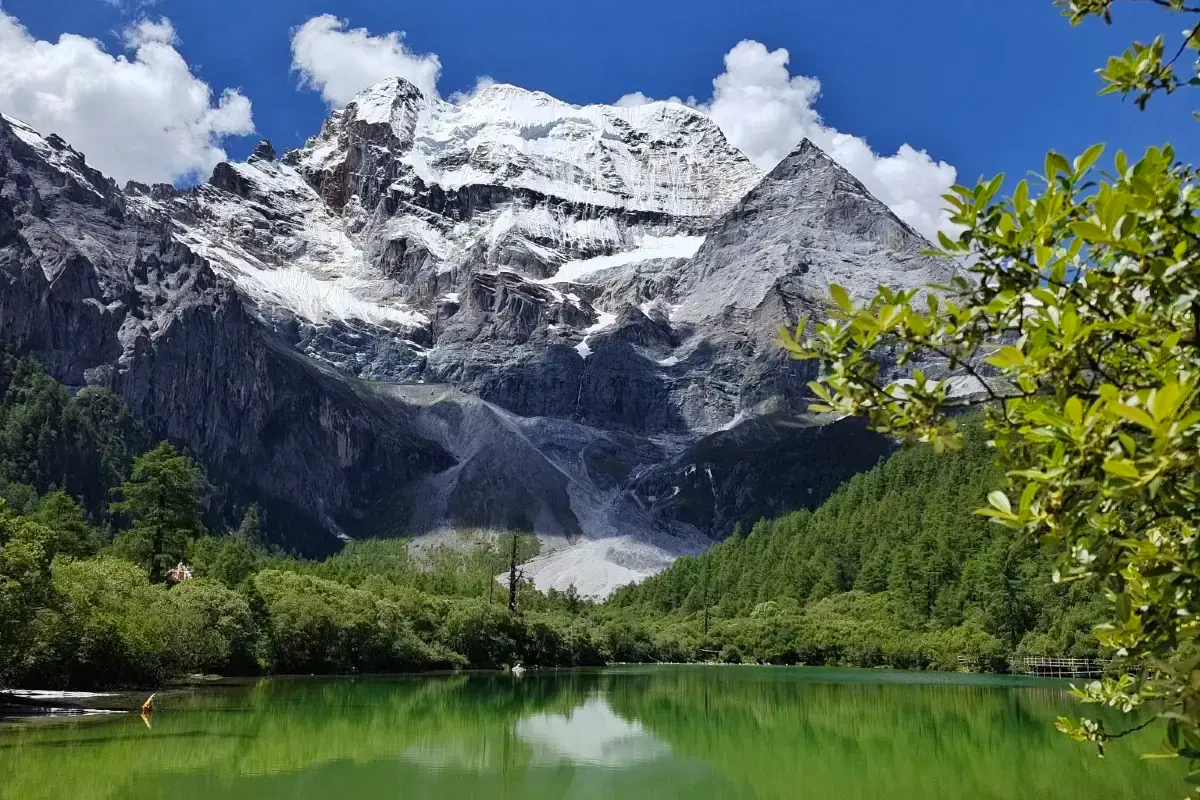
Mount Xian Nairi stands just over 6,000m tall and lies in the Garzê Autonomous Tibetan Prefecture of southwestern Sichuan. Also known in Tibetan as Mount Chenrezig, it forms one of a triptych of holy mountains that keep watch over the surrounding landscape. As an important pilgrimage site in Tibetan Buddhism, climbing it or its sibling peaks is forbidden.
On October 27, Li Shengyu set up his camera at the foot of Xian Nairi. His goal: to capture the glory of the mountain against a backdrop of traveling stars. As the Earth spins throughout the night, the stars appear to rotate in the sky. Long-exposure or composite photographs taken over the course of a night show comet-like smears known as star trails.
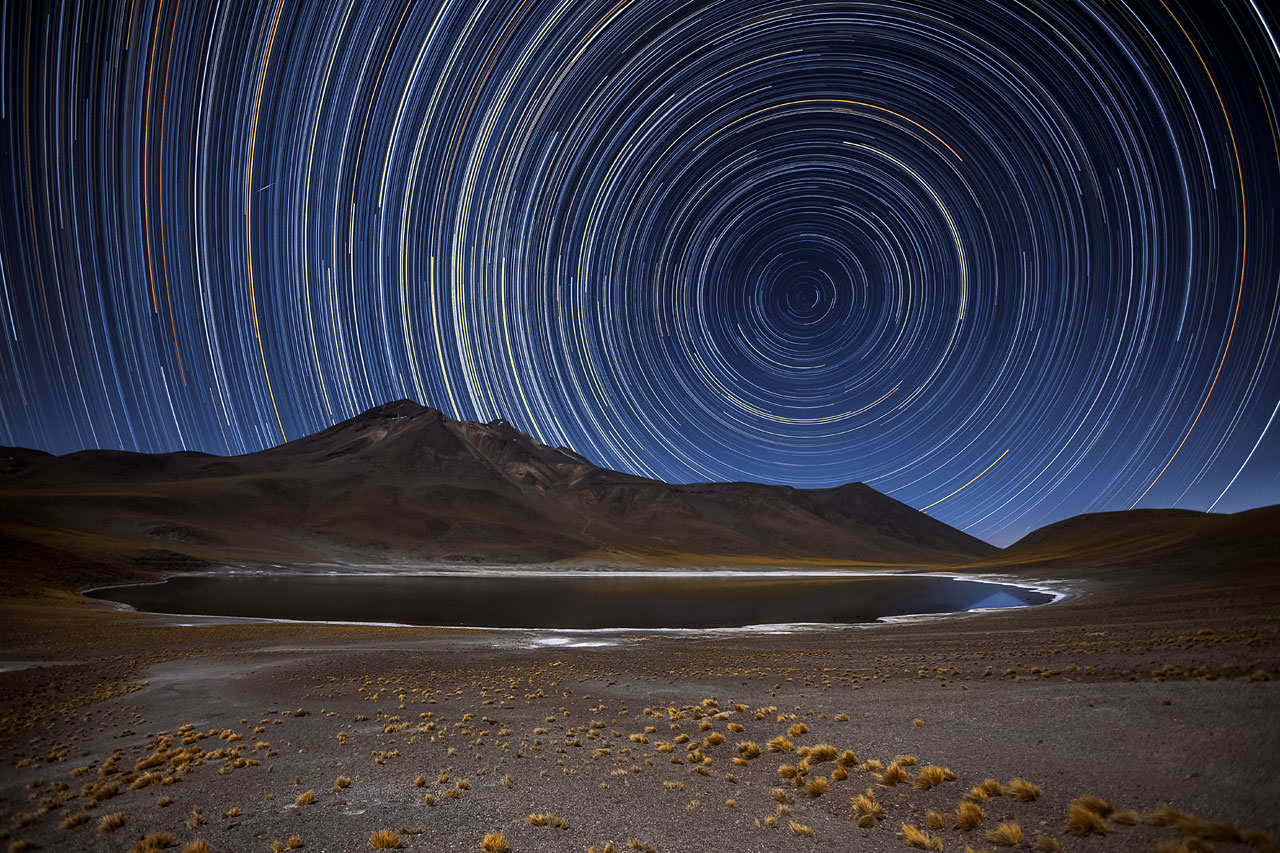
He got his star trails, but he also got what he suspected was a previously unobserved natural phenomenon: his flashing blue lights. Li reached out to other members of his astrophotography community. They spent a lot of time photographing mountains. Had anyone else seen anything like this?
A second avalanche glow
As it turned out, one had. Earlier that month, astrophotographer Lu Miao captured a similar event on 7,546m Muztagh Ata in Xinjiang. In her video below, a cornice fall appears to trigger a luminous blue glow, more enduring than the one on Xian Nairi.
Li told SpaceWeather.com that neither he nor Lu had noticed the flashes in real-time, only in their photographs. "However, I asked some friends who frequently photograph snow-capped mountains," he added, "and one of them mentioned having seen blue light with the naked eye during an avalanche, though they didn’t capture it on camera."
In the month since he recorded the lights, Li has formulated a theory. "Our initial hypothesis is that the luminescence may result from friction-induced lighting during the fragmentation of ice."
Physicists have a word for this effect: triboluminescence.
A mysterious optical effect
The first known description of triboluminescence dates all the way back to 1605. "It is well known that all sugar, whether candied or plain, if it be hard, will sparkle when broken or scraped in the dark," wrote Sir Francis Bacon in his work Novum Organum. "In like manner, sea and salt water is sometimes found to shine at night when struck violently by the oar."
Not to be outdone, 20th-century physicist Richard Feynman summarized the phenomenon more prosaically. "When you take a lump of sugar and crush it with a pair of pliers in the dark, you can see a bluish flash. Some other crystals do that, too. No one knows why. The phenomenon is called triboluminescence." The video below shows the effect on a LifeSaver.
We've learned more since Feynman described triboluminescence, but not much more. It occurs when a crystal is fractured. Sometimes, the light comes from a current jumping from one side of a fault line in the crystal to the other, stripping the nitrogen in the air between of its electrons. Temperatures soar, and the surrounding molecules radiate like they're in a furnace. That's the same process as lightning, though on a much smaller scale.
Complicating this pat understanding of triboluminescence is that other crystals radiate from a mix of ionized nitrogen and, seemingly, the surfaces of the cracked crystal. Still others don't radiate from nitrogen at all. So what are all the processes contributing to the flash? On the broadest scale, it's not clear.
Fracturing ice might cause mini-lightning
On the scale of an avalanche, however, the picture starts to come together. As water freezes, any momentary electrical imbalances get frozen in with it, leaving the ice with a permanent magnetic field. The falling serac in Li's video smashes against several rocky outcroppings on the way down. If a crack lands in the right location for one side to be negatively charged and the other positively charged, triboluminescence could occur.
This is great news to anyone interested in avalanche science, since the resulting flashes could offer insights onto the composition of the ice and the key impact points. How much of a given cornice fall, for instance, is solidly glaciated? How do fractures spread within ice?
On the flip side, observing triboluminescence on a far larger scale than a sugar cube and a pair of pliers is a big deal for molecular physics. Crushed sugar sparks consistently, but out of all the avalanches filmed all over the world, we only have a few recorded instances of ice sparking. Why?
We don't know, but next time you see an avalanche, keep your eyes wide open. Physics is watching with you.
There's an old truism that's well worth remembering if you're scared of sharks. You're more likely to get struck by lightning, killed by fireworks, or have a stroke than you are to perish from a great white.
But attacks do happen, and the main problem is that great white sharks probably mistake surfers and their boards for seals.
Thankfully for wave chasers, researcher Laura Ryan of Macquarie University in Sydney has made what may be a game-changing discovery. She and her team recently spent over 500 hours studying great white shark hunting behavior using decoy seals. It led to a simple, effective method for deterring accidental shark attacks on surfers.

Lighting decoys
The experiment was fairly simple. The team rigged up a series of seal-shaped decoys with a variety of lighting arrays — vertical and horizontal strip lighting, as well as strobe lighting of varying brightness. Then they towed the decoys and observed what happened. After each tow of a lit decoy, Ryan immediately towed an unlit decoy (the control group) and compared the results.
“We have taken the approach of understanding these animals’ sensory system and how they see the world, [with] their behavior," Ryan told New Scientist.
The results, published this week in the journal Current Biology, are intriguing. The great whites followed or attacked the unlit control dummies the most. They showed less interest in strobe-lit dummies and even less in dummies with vertical striped lights.
However, the sharks still showed some interest. Probably, Ryan said, because those configurations still allowed the sharks to make out the silhouette of potential prey.

Brighter than the background
Horizontal lighting turned up to the brightest setting, on the other hand, was the clear winner. During the study, great whites showed zero interest in decoys lit in such a fashion. Horizontal lighting apparently broke up the silhouette enough to avoid a predation response.
“The most critical thing was that the brightness on the decoy had to be brighter than or equal to the background light,” Ryan said. “As long as the lighting stopped the silhouette from looking black, it seemed to work.”
This is great news for surfers and a good example of research that could have an almost immediate benefit.
“We are now moving from research into providing protection for swimmers and surfers,” the scientist noted.
Ryan has previously been involved in magnet-and-electrical-based shark deterrent research. But it seems likely that LEDs will find their way onto surfboards well before complex magnetic gizmos will.
She pointed out the study focused only on great whites. The method has yet to be tested on other sharks with a record of human attacks, such as tiger sharks and bull sharks.
"Numbers do not seem to work well with regard to deep time," writes McPhee. "Any number above a couple of thousand years — fifty thousand, fifty million — will with nearly equal effect awe the imagination."
Describing a similar effect with regard to distance, The Hitchhiker's Guide to the Galaxy author Douglas Adams writes more prosaically: "Space is big. You just won't believe how vastly, hugely, mind-bogglingly big it is. I mean, you may think it's a long way down the road to the chemist's, but that's just peanuts to space.”
So, with the goal of making human life look like peanuts, let's examine the best predictions from geologists and astrobiologists for the next two billion years on Earth.
The Mediterranean, 2,000 years from now
Dark water laps at the side of a boat. What the boat looks like is impossible to say, but its sole passenger, lost in the Mediterranean after a terrible storm, steers it onward over the now-still water. Overhead, the North Star guides the sailor along.
Except in the year 4024, the North Star is not Polaris but Errai in the constellation Cepheus.

In the antiquity of 2024, Polaris was the North Star. You could run a string from it straight through the Earth's axis of rotation. Even as the heavens appeared to turn throughout the night as the Earth spun, Polaris stayed where it was.
That time is gone. The slight wobble of the Earth's axis has now brought Errai, a fainter star also known as Gamma Cephei, into the spotlight.
But although they've shifted slightly, the constellations that shine down look nearly identical to those of 2024. Cepheus, the king of Aethiopia in Greek mythology, sits astride his throne while his wife Cassiopeia looks on. The environment and inhabitants of the Earth of 4024 might be impossible to describe, but the sky above and rock beneath have barely changed at all.
The boat and its passenger drift onward, guided by Errai. The clock turns.

The Sahara, 15,000 years from now
The brightest star in the summer sky has replaced Errai at the North Pole. Vega shines down on a Saharan climate of grassland dotted with shrubs, where herds of buffalo graze and splash in the shallows of massive lakes.
That same axial wobble that has brought Vega into the place of the North Star has altered the course of the seasons. Back in the 21st century, the Earth passed closest to the Sun during summer in the southern hemisphere, roasting the southern tropics. Summers and winters varied more in the north, but summers were milder than in the south.
Now the tables have turned. Summers expose the northern hemisphere to the Earth's most intense radiation. Monsoons off the Atlantic Ocean course toward the hotter regions of North Africa, drenching what used to be a desert and transforming it into a landscape where life thrives. If there are humans, they enjoy swimming in its rivers. Perhaps they record the scene with a visual technology we cannot yet fathom.
Maybe someone paints the swimmers on a rock. That's what humans did in the Neolithic, and left a record of a Green Sahara that endured long after the lakes had evaporated and the grass had withered away.
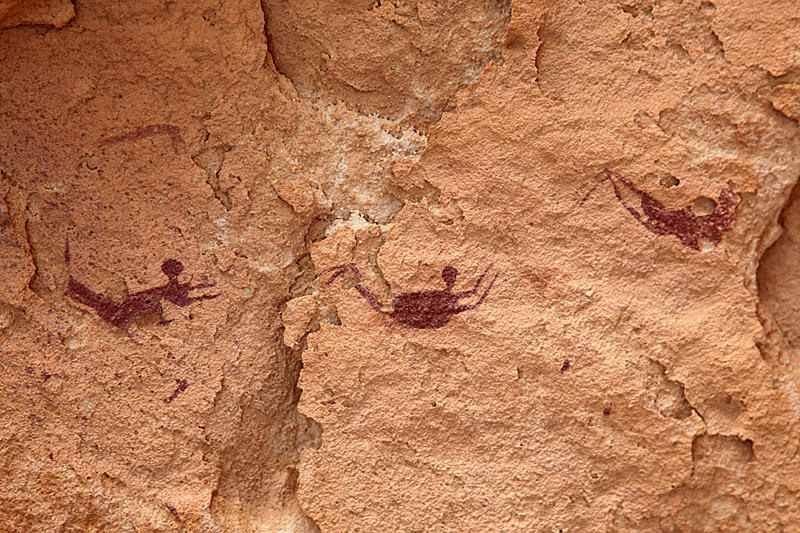
Hawaii, 50,000 years from now
The brand new island of Kama'ehuakanaloa steams in the morning sun. Lava courses down its flanks, spitting and frothing as the land finally stands free of the ocean.
In 2024, the top of Kama'ehuakanaloa sat 3,000m below the ocean's surface, occasionally lurching into seismic action with flurries of earthquakes. Thanks to a growth rate of 15cm every year -- 15 times as fast as the Himalaya -- in 50024 CE, it has claimed its place as the latest Hawaiian island.

Kama'ehuakanaloa might seem inhospitably volcanic, but pioneer species already call it home. Lichen, a symbiotic organism comprised of a fungus inhabited by algae or cyanobacteria, has crept over from the older, more established Hawaiian islands. Soon, crickets will take up residence on the new volcanic rock, subsisting off nutrients blown in on the salty sea wind. Ferns will follow, and then trees.
The floodgates open, and life rushes in.
Himalaya, 20 million years from now
The land once known as Nepal is gone. It is not merely that the nation has long since been lost to history, along with every other nation from the 21st century. Rather, the Indian subcontinent has crushed all the land that used to make up Nepal, subducting some under itself and pushing the rest up against Tibet.
Rockfall clatters down the slopes of what remains the world's highest mountain range. While the theoretical maximum height that a mountain with a typical base size can sustain is 45km, rockfall keeps the practical limit far beneath that. Still, the summit of Nanga Parbat, now the world's tallest mountain, juts thousands or perhaps tens of thousands of meters into the Death Zone. It dwarfs Makalu, the second-highest peak.
In 2024, Nanga Parbat sat at the position of ninth tallest mountain in the world. But a network of new rivers at its base eroded much of the landscape, allowing the rest of the rock to float higher on the mantle. Nanga Parbat climbed upwards at a steady rate of 7mm a year, over three times faster than Everest. According to simulations, another modified river system centered on Makalu will likely make it the world's second-tallest mountain.
Now, ice blankets everything above the tree line. In the stillness of the mountains, nothing lives. If humans are here, and if they climb mountains, they have no choice but to spend the entire climb on supplemental oxygen. Seracs collapse in omnipresent icefalls, avalanches shred the slopes, and rocks plummet downward as the foundations of each mountain fail to support its height. Any climber who makes it past these objective hazards to stand at the summit will be outfitted more like an astronaut than a 21st-century alpinist.
Perhaps humans still exist, and one makes it to the top of Makalu. As their breath whistles through their mask, they gaze westward over the land where Nepal used to be. Gone are Rolwaling Valley, Namche Bazaar, and Kathmandu. All have been crushed against the flanks of the Himalaya.

Eurafrica, 50 million years from now
Erosion is dragging down the Himalaya, but a new mega-range has taken its place. Forty million years ago, the northwestern Nubian plate split off from the eastern Somali plate, ripping Africa in two and causing the Red Sea to flood the land in between. Now Nubia has finally completed its journey across the Mediterranean, forcing water into the Atlantic and closing the gap with Europe. Italy, Greece, and southern France have buckled up into the air, rocketing the Alps as high as the Himalaya used to be.

The inhabitants of Eurafrica live beside an enlarged Atlantic Ocean, big enough to gather storms of the same force as the Pacific. Monsoons slam into the coast every wet season, shredding the forests that now cover what used to be regions of dry shrubland.
The mountains bloom.
Pangaea Proxima, 250 million years from now
The deserts at the center of the supercontinent broil in 60˚C winds.
A few reptiles lurk under the sand, but most of the world lies still. If any large animals live here, they most resemble the gorgons of the Permian: dinosaurish beasts with rat-like faces and large teeth. Even those tenacious creatures would depend on unpredictable seasonal flooding, with mudslides just as likely to bury them alive as bring them the water they need to live.

Life flourishes more along the northern and southern coasts, where the weather stays temperate year-round. But this is a world that has long forgotten the concept of glaciers. We have returned to a global greenhouse, where even the poles never drop below freezing. In the last greenhouse period, tropical forests blanketed Antarctica.
Now there's no land at either pole. According to the most dominant prediction of what the Earth now looks like, all the continents have collided into a new Pangaea. Massive volcanic activity has increased the carbon dioxide levels in the atmosphere to such an extent that, at most, only 25% of the continent is inhabitable to mammals. In these milder coastal regions, lush forests dominate. If mammals still exist, this is where they live.
Back in the central desert, something like a gorgon comes across a dying pool of water and lives for another day. Or it doesn't.
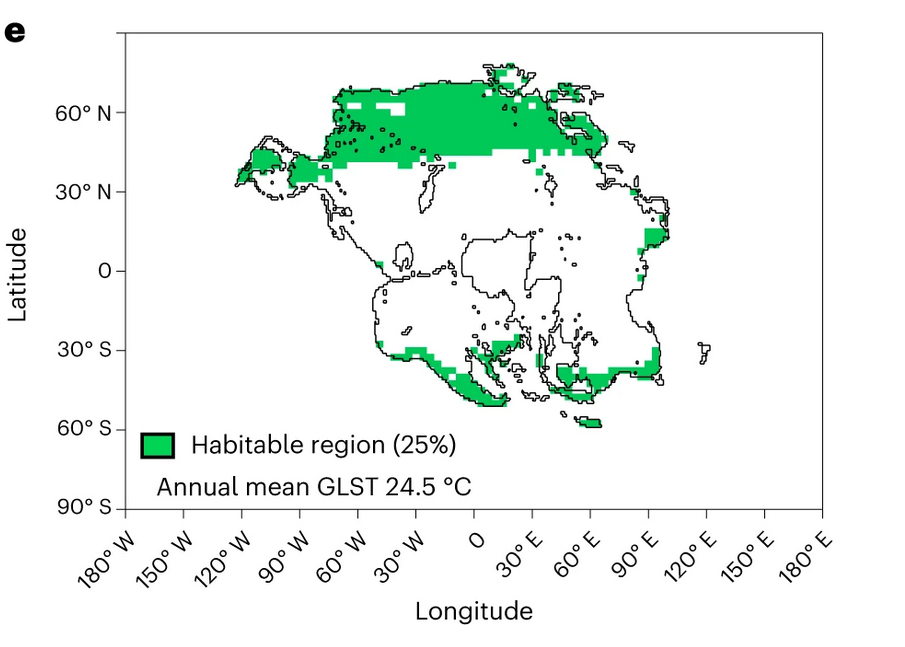
The dead forest, 500 million years from now
Being a tree is a cutthroat business. After the supercontinent of Pangaea Proxima ripped itself apart, ice rushed back into the world. Carbon dioxide levels dropped precipitously, starving plants. Only a few stragglers remain, the last of their kind.
Now grasses and shrubs dominate the arid land. The survivors process sunlight differently than trees, using a photosynthesis process called C4 that makes more efficient use of carbon dioxide. Without the leafy plants and trees that used to make up over 90% of flora, most large fauna have gone extinct.
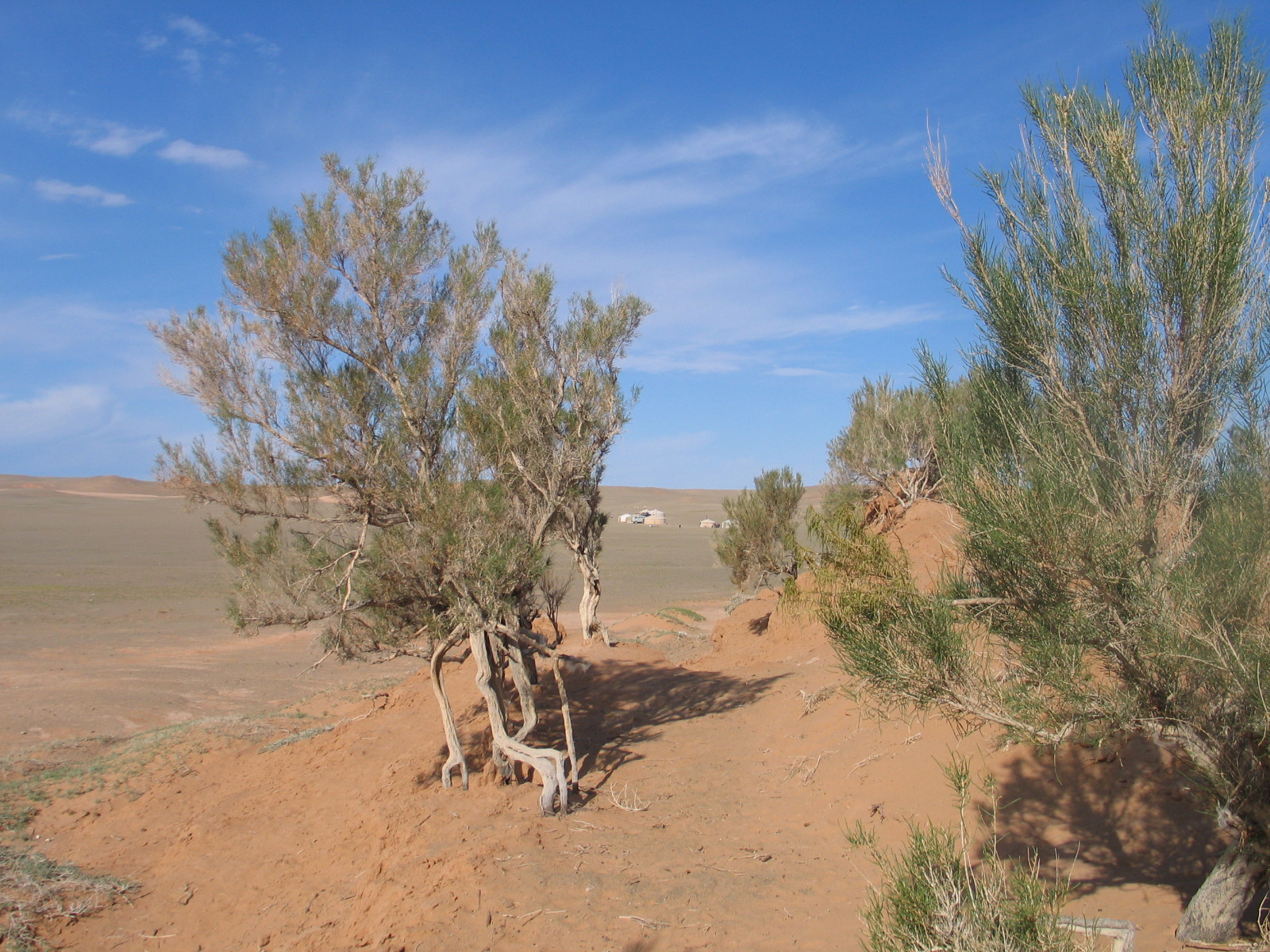
It's not just the carbon dioxide drop that has picked off species. The Sun shines brighter than ever as it edges toward leaving the Main Sequence, the period of time that describes the stable, long-term midlife of stars.
But even if the land is dying, the ocean still thrives. Seaweed drifts in the warm currents. Vertebrates and invertebrates scuttle over the seafloor. At the vents, sponge cities and bacteria reign supreme. Life is slowly returning to its origins.
The greenhouse, 1 billion years from now
The oceans are gone, and with them, plate tectonics and most multicellular life. Much of the water sank into the mantle, while the rest evaporated into the now-waterlogged atmosphere. Thick clouds blanket the world.
Despite the cloud cover, the temperature never drops below 45˚C. In its last sputters of middle age, the Sun radiates 10% more light than it did in the halcyon days of 2024. The Earth now resembles a heavily oxygenated, humid Venus.
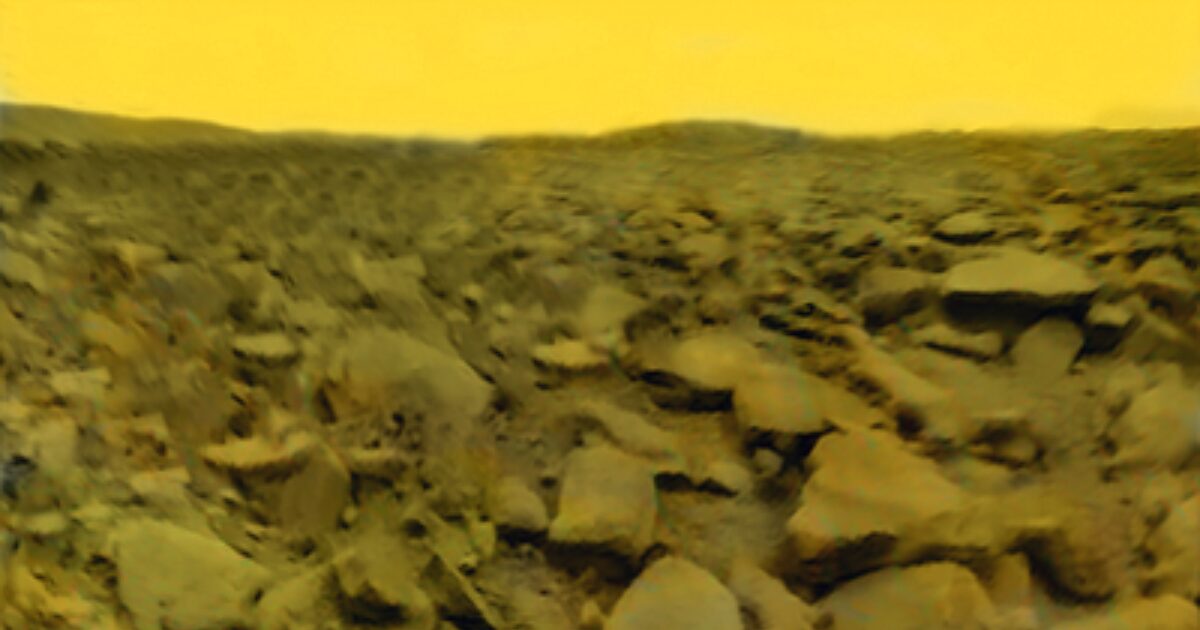
Still, life endures. Simple photosynthesizers clog scattered lakes at the Poles, turning their surfaces the emerald green of cyanobacteria and the amethyst of sulfur algae. They paint this dying world in technicolor.
The Earth, 2 billion years from now
All the algae is long gone, all the cyanobacteria in their bright blue and green splashes. Photosynthesis has not been possible for hundreds of millions of years. Now only a few single-celled organisms remain, clustered in the scant pools of water that remain on what used to be living mountains and now are merely dead ridges on a stagnant landscape.
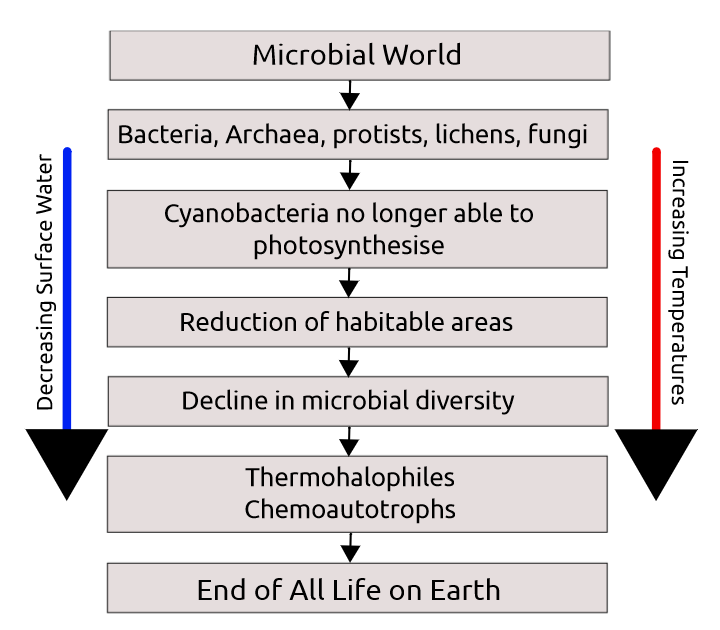
The temperature is that of a furnace. In the sky above, barely any water vapor, oxygen, or carbon dioxide remains. Still, for the little organisms that subsist off carbon dioxide and chemical reactions in the heated rock itself, that's enough.
But the temperature is increasing, and carbon dioxide is disappearing alongside the last liquid water. As it does, even the rock-eating chemoautotrophs are starving. It will take a long time for all of them to die off.
During the day, the Sun beats down. At night, the sky swarms with stars as the Andromeda Galaxy collides with the Milky Way. Nothing exists with eyes to see it, but it's beautiful.
Another chemoautotroph dies.
Fans of mountaineering likely know all about altitude sickness. They may even have experienced it — difficulty breathing, dizziness, nausea, dangerous fluid buildups in the lungs and brain, thickened blood, and a stressed heart. With time and patience, people can adapt somewhat to altitude. But it's long-term adaptations that concerned a team of scientists led by Cynthia Beall, an anthropologist at Case Western Reserve University in Cleveland, Ohio.
And by long-term, we mean really long-term.
In a paper published in The Proceedings of the National Academy of Sciences, Beall and her colleagues delved into the mechanisms that have allowed the Tibetan people to adapt to the ferocious altitudes of their homeland in the more than 10,000 years they've existed there.
To do so, they studied a population of over 400 Tibetan women who've lived their entire lives above 3,500m. Specifically, they measured their reproductive success (the number of live births, ranging from zero to 14, the women successfully carried out during their childbearing years).
Then they collected information on hemoglobin levels in the women's blood. Hemoglobin is the protein that allows red blood cells to transfer oxygen to tissues. Finally, they measured the oxygen levels that the women's hemoglobin could deliver.

More oxygen without thicker blood
The result? The women with the most successful pregnancies were those with average hemoglobin levels but better-than-average oxygen delivery by hemoglobin. This particular combination of traits maximizes tissue oxygenation without thickening the blood and adding stress to the heart — a godsend for high-altitude living.
"Previously, we knew that lower hemoglobin was beneficial," Beall told ScienceAlert. "Now we understand that an intermediate value has the highest benefit. We [also] knew that higher oxygen saturation of hemoglobin was beneficial. Now we understand that the higher the saturation, the more beneficial."
The study also revealed that the women with the most live births had larger-than-average left ventricles in their hearts. Their lungs were also more effective at oxygenating red blood cells.
The work is a fascinating window into natural selection and human evolution, unfolding practically in real time before our eyes. You can adapt a little to elevation in the short term, and being born and living your life at altitude also helps. But to truly thrive in the clouds, you need to be the end result of millennia of human adaptation.
"It is a beautiful example of how and why our species has so much biological variation," Beall said.
About 41,000 years ago, the Earth's magnetic field suddenly flipped. Positive became negative, and negative became positive. Using data from the European Space Agency, geoscientists have now created a soundscape of the cataclysmic event. The eerie, alien-like track resembles creaking wood and falling rocks in an echo chamber.
The Earth's core generates the magnetic field around our planet, forming a protective cocoon around us. It allows life to thrive on Earth in a way that is not possible on neighboring planets.
During what was called the Laschamp event, this magnetic shield weakened to just five percent of its current strength. As a result, ionizing radiation from the sun bombarded the Earth, and planetary chaos ensued. It triggered mass extinctions, electrical storms, solar winds, climate change, and even changes in ancient human behavior.
Geological evidence of the event first turned up in the French Massif Central, leaving signatures in the Laschamp lava flows. Elsewhere, levels of the beryllium-10 isotope skyrocketed. Preserved kauri trees in New Zealand show spikes of atmospheric radiocarbon.
Researchers believe that it took 250 years for the magnetic field to flip. It stayed that way for 400 years before reverting back to its current position. Four centuries seems long to us, but “in terms of geological time, that is very fast,” explained Norbert Nowaczyk of the German Research Center for Geosciences.
The Earth's magnetic field has flipped several times over the millennia. Researchers are not sure why it happens. There seems to be no pattern to how often this occurs.
The magnetic field itself is in near-constant motion. Since it was first precisely located by polar explorer Sir James Clark Ross in 1831, the Magnetic North Pole’s position has gradually drifted north-northwest by more than 1,000km, and its forward speed has increased from about 16km per year to about 55km per year, says NASA.
Projects such as the European Space Agency's Swarm mission use satellites to measure magnetic signals around the Earth. This would warn us of any imminent magnetic field flip. Researchers do not think this will happen again for thousands of years. Still, they are keeping an eye on an area known as the "South Atlantic Anomaly," a region where the magnetic field is weaker than anywhere else on Earth.
It's a bad month for any malicious asteroids out there. On Sept. 4, an observer at the Catalina Sky Survey spotted an asteroid bound for the Philippines eight hours before it disintegrated in the sky. Eight hours' notice would be enough to evacuate inhabitants in the case of a city-killer asteroid. People: one, asteroids: nil.
Then, on September 23, experimental physicists at Sandia National Laboratories in New Mexico showed that X-rays resulting from a nuclear blast could be enough to send even a planet-killing asteroid running in the other direction. To do so, they invented a new experimental technique. Now, scientists can test this kind of deflection without ever having to go to space.

The threat of large asteroids
There are currently no asteroids on a collision orbit that are big enough to alter the global climate, much less wipe out humanity. Still, it's always possible that an interstellar visitor such as 'Oumuamua could pick our tiny blue dot as its new home, much to our detriment.
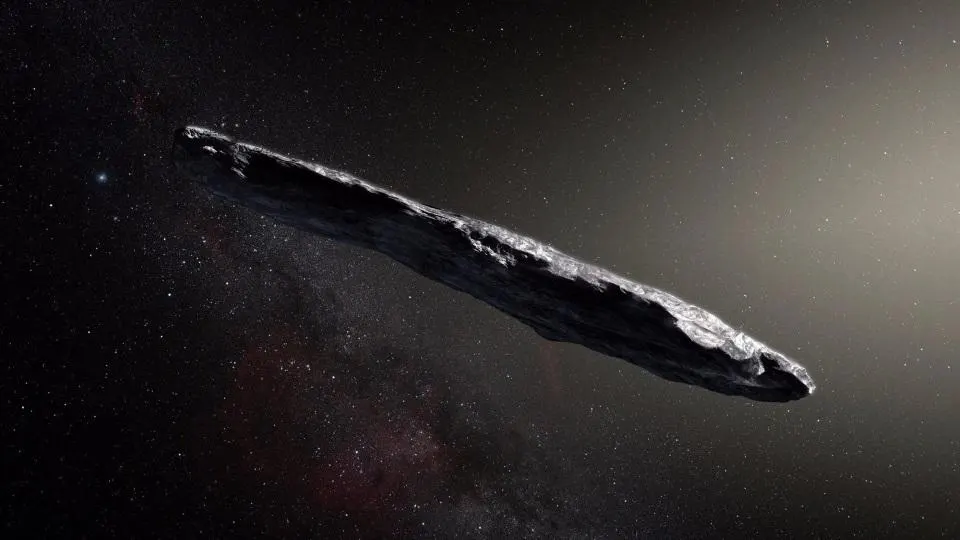
We know from the Double Asteroid Redirection Test that a rocket can deflect an asteroid from its path by hitting it at high velocity. But for some time, scientists have predicted that only a nuclear blast would be sufficient to deflect a kilometer-sized asteroid. Computer simulations agree that it will work. Figuring out how to test it in a lab has been a lot harder.
Nuclear blast deflection
Discussions of nuclear blast deflection tend to center on the shock wave from the explosion changing the orbit of an asteroid. Nathan Moore and his team at Sandia National Laboratories focused on a different tool in the nuclear explosion arsenal.
Nuclear blasts release large quantities of X-rays. These energetic photons dissociate (the process of breaking up a compound into simpler constituents) the surface of the asteroid itself, leaving behind a gas that expands in every direction, including toward the rest of the asteroid. The initial shock wave is comprised of lighter gases, but this slower explosion would be made up of heavy, metallic particles. If the initial shock wave is a swarm of flies hitting a car windshield at high speed, the secondary X-ray explosion is a wall of geese. They might move slower, but they're going to do a lot more.
But testing this concept in space is prohibitively expensive. Worse, if we wait until a hazardous asteroid is already heading toward us, we run the risk of fracturing it into still-dangerous pieces without deflecting it. That means we need to imitate outer space conditions in labs on Earth. But how can we create a target that's free to move without friction?
X-ray scissors and a machine called Z
Nestled in the foothills of Albuquerque, New Mexico sits a machine called Z. It is the most powerful electromagnetic pulse generator in the world. By firing it at argon gas, the Sandia team created a plasma in less than a millionth of a second, which released a bubble of X-rays at their asteroid sample.
When it came to mimicking the conditions of outer space, the team had to get creative. The tool they call "X-ray scissors" in their paper may conjure images of mind-bending microscopic technologies such as quantum optical scissors, but these scissors are refreshingly simple. Two pieces of minuscule metallic foil sit at the heart of the new experiment. From them, the team suspended their fake asteroid samples made of silica and quartz. When the X-rays hit the asteroid sample, they dissociate the foil as well. For just a shred of a second, the sample hangs suspended in space, unaffected by the drag of anything around it, pummeled by X-rays.
The team found that in that short time, the asteroid samples accelerated to about 70 meters per second. Through calculations, they showed that a stronger X-ray blast from a real nuclear explosion could deflect asteroids multiple kilometers across, the kind that wiped out the dinosaurs.
Best of all, the team's X-ray scissors will allow ground-based testing on all kinds of asteroid materials. If an asteroid suddenly heads our way, we'll have the technology and the practice to deflect it without shattering it.
Swamps and wetlands get a bad rap, and not without reason. They can be difficult to navigate, play home to various venomous and tooth-filled creatures, and often serve as breeding grounds for one of humanity's most vicious enemies — the humble mosquito.
The first English settlers in Virginia found this out the hard way. When the Virginia Company, under the leadership of John Smith, founded the first permanent English settlement in the New World in 1607, they landed in a swampy spot not far from present-day Virginia Beach. Realizing that the area wouldn't suit the colony's needs fairly quickly, Smith and company relocated inland to a (somewhat) dryer spot they dubbed Jamestown.
But swamps are important. They filter water, provide buffers to flooding and erosion, and serve an important ecological niche.
They can also be stunningly beautiful, sometimes in surprising ways. The wetland where Smith and his soon-to-be-struggling colony first touched North American soil is now called First Landing. It's an unassuming little state park within the urban boundaries of Virginia Beach.
But a few times a year, something astonishing happens when the light is just right. The tannin-filled water lights up with a stunning display of rainbow striations.

"Magical" is probably the best word for it.
A chance viewing
Photographer Katherine Scott is lucky enough to have seen this natural wonder. In December 2018, Scott was hiking in First Landing with her camera. She spent the bulk of her day photographing the park's flora and fauna before turning around and heading for her car.
"As I turned off Bald Cypress [trail], I stopped short. The cypress swamp that just seconds before had been its usual dark, murky self was magically, suddenly transformed by sunlight," Scott wrote in a blog post on First Landing's website.

"There it was. Instead of old black water, a new rainbow of color. Across the still expanse of the swamp, reds, oranges, yellows, greens, blues, and purples were spread smoothly. The calm, colorful water was punctuated by cypress knees and long shadows, which somehow only enhanced the overall scene," she continued.
Thanks, cypress trees!
It takes a combination of factors to create a rainbow swamp.
Have you ever been walking across a concrete parking lot late in the afternoon, stepped over a puddle, and stopped to marvel at the rainbow sheen sparkling across the top of the water?
Those colors are created by a thin film of oil floating on the puddle's surface and refracting the sunlight.
The same phenomenon is at play at First Landing and in various wetlands across the American South.

The keystone flora in these wetlands is the cypress tree, a plant that is spectacularly well-adapted to soggy environments. Cypress trees can grow right up out of the water thanks to modified root structures called "knees" that they send up above the murky surface. Cypress trees also produce an oil that saturates their wood, bark, and needles.
Cypress trees are abundant in southern swamps. As evergreens, they produce needles year-round. As the needles age and fall into the water, the oils leach out and coat the swamp's surface.
But if that's all it took, every swamp in the American South would be a rainbow swamp. According to Jeff Ripple, who formerly led swamp walks in Florida, there's some microbiology at play as well.
"The rainbow sheens found as a thin film on top of pooled water in swamps and marshes are the result of natural oils released by decaying vegetation or the biological processes of anaerobic bacteria reducing iron in soil," the naturalist told the BBC.
Finally, it takes unusually quiet weather conditions to produce the effect.
"Movement by sheet flow, current, or wind disturbance would destroy the fragile rainbow film," Ripple said.
A rare occurrence
And so, unlike natural wonders that rely on geological processes, rainbow swamps are unpredictable and deliciously fleeting. Because of the angle of sunlight needed to create the rainbow effect, late fall and early winter are the best times to see them. But even then, it's a toss-up.
Retired engineer Michael Hussey owns a swampy patch outside of Tallahassee, Florida, and monitors the waters every year, hoping to catch a glimpse.

Still, he's only witnessed the phenomenon a few times in almost half a century.
"I have seen this occur about ten times in the 40 years I have lived here," he told the BBC. "It's beautiful to see."
So, what's the best way to see a rainbow swamp? You've got to spend a lot of time in the swampland of the American South at the right time of year, cross your fingers, and hope for the best.
Might we recommend a multi-month expedition along the 2,400km Florida Trail?
Underwater surveys picked up mysterious "bio-twang" sounds from the Mariana Trench in 2014. A new study reveals where the sci-fi-esque noises are coming from.
The Mariana Trench lies in the Pacific Ocean, it is the deepest ocean trench on the planet. Stretching 2,400km, and at 10,935m deep, it is the focus of much deep-sea research.
Grumbling and metallic pings
The alien-like noises were first detected during an acoustic survey in 2014. The sounds last between 2.5 and 3.5 seconds and can be split into two distinct parts. The first is a deep grumbling noise, the second a series of high-pitched metallic pings.
"I think it sounds like the original ‘ping’ on the Starship Enterprise from Star Trek," study co-author Lauren Harrell told Popular Science.
Researchers were baffled. It took two years before someone suggested that the noises might be the calls of a large baleen whale, such as a humpback or blue whale.
"It's very distinct, with all these crazy parts. The low-frequency moaning part is typical of baleen whales, and it's that kind of twangy sound that makes it unique. We don't find many new baleen whale calls," marine bioacoustician, Sharon Nieukirk commented at the time. It was not a whale call researchers had heard before.
This year, the National Oceanic and Atmospheric Administration (NOAA) reopened the case. It turns out that researchers in 2016 were close. The noises are coming from baleen whales, specifically the Bryde’s whale.
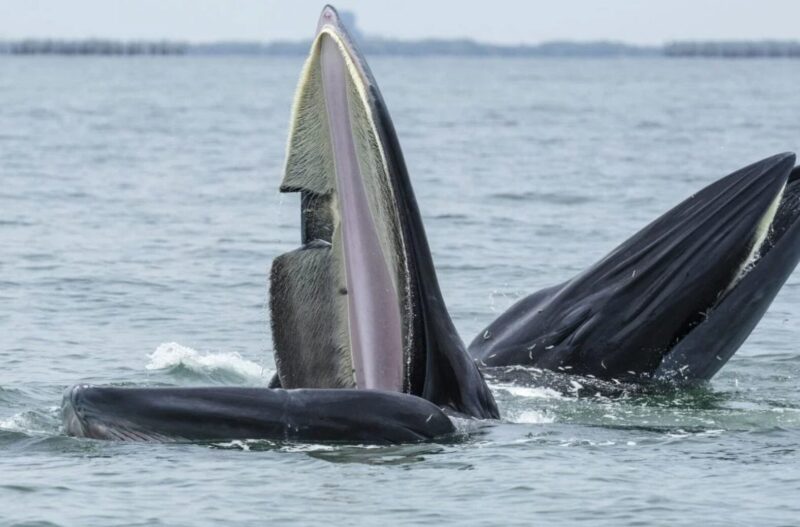
Whale song
Researchers spotted 10 Bryde's whales swimming near the Mariana Islands, west of the famous trench. Nine of the ten were recorded making the distinctive bio-twang noise.
"Once, it's a coincidence. Twice is happenstance. Nine times, it's definitely a Bryde's whale," lead author Ann Allen told Scientific American.
Despite the nine recorded calls, researchers wanted to make doubly sure they were correct. Using a new AI identification system the team trawled through 200,000 hours of ocean recordings from monitoring stations in the Mariana Archipelago.
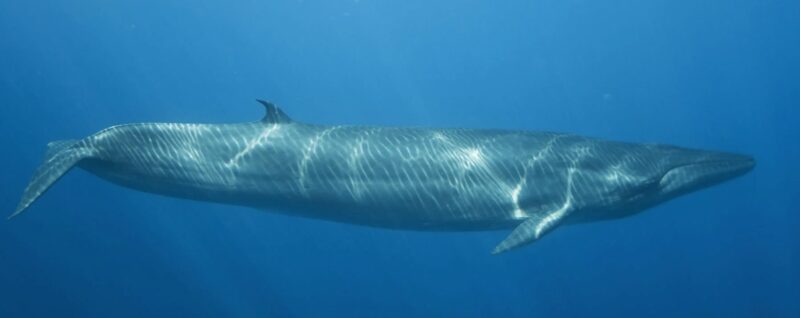
The AI tool sped through the recordings and turned them into images known as spectrograms. A machine learning algorithm could then differentiate between the various noises and pinpoint those that matched the bio-twang.
The study proved that these noises come from the Bryde’s whales. The noises are only heard in the northwest Pacific, showing that it is a particular population of whales. What the sounds mean remains a mystery.
"It's possible that they use the bio-twang as a contact call, a sort of 'Marco Polo' of the ocean. But we need more information before we can say for sure," Allen told Popular Science.
The Chihuahuan Desert is a sparse but stunning ecosystem straddling the border between Northern Mexico, Southern New Mexico, and West Texas. High in elevation and low in humidity, the desert plays home to spiky ocotillo plants, blinding dust storms, and fragrant green chili farms.
In the cool evenings, coyotes, antelope, and ringtails play out the timeless drama of desert survival. Kangaroo rats scamper beneath the creosote bushes, licking dew off the leaves and hoping not to be ambushed by rattlesnakes. The sunsets are spectacular.
But the wonders of the landscape don't stop at the surface. Far underground, another awe-inspiring treasure awaits.
A quarter-of-a-century ago, two brothers drilling a ventilation shaft for the Naica Mine in Chihuahua, Mexico, stumbled across something fantastic. The miners were working 300m underground when they broke into a basketball-court-sized cavern filled to the brim with the largest crystal formations they'd ever seen.
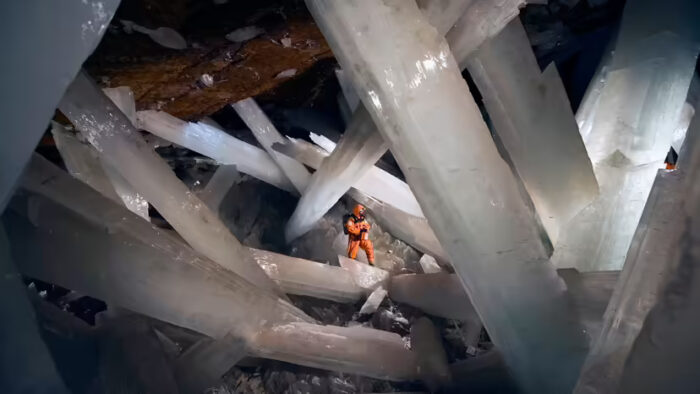
What their lights illuminated would come to be called "The Cave of Crystals," and it's as deadly as it is beautiful.
11m crystals galore
As the brothers shone the first light into the cavern, they saw a tangled maze of huge selenite crystals that almost defy words. The largest is 11m long with an estimated weight of five tons, but all of them are huge. The crystals are a milky, translucent white. Their sheer scope and maze-like formation — combined with manmade light — create an otherworldly effect that tends to leave observers temporarily speechless.
"There is no other place on the planet where the mineral world reveals itself in such beauty," Juan Manuel García-Ruiz, a geologist at the University of Granada, told National Geographic in 2007.
García-Ruiz was part of a team intent on discovering how the natural wonder formed. To do so, he studied tiny pockets of water trapped inside the crystals. What he and others uncovered involves magma, as so many of the planet's best spots do.
Roughly 4km below the Cave of Crystals is a large pool of magma that radiates a constant heat. At some point in the distant past, the cave was flooded with water rich in a mineral called anhydrite. For a million years, the magma kept the water at a constant temperature of 58°C, allowing the anhydrite to dissolve into gypsum. Gypsum likes turning into selenite crystals, and so, firmly in their sweet spot, they did just that.
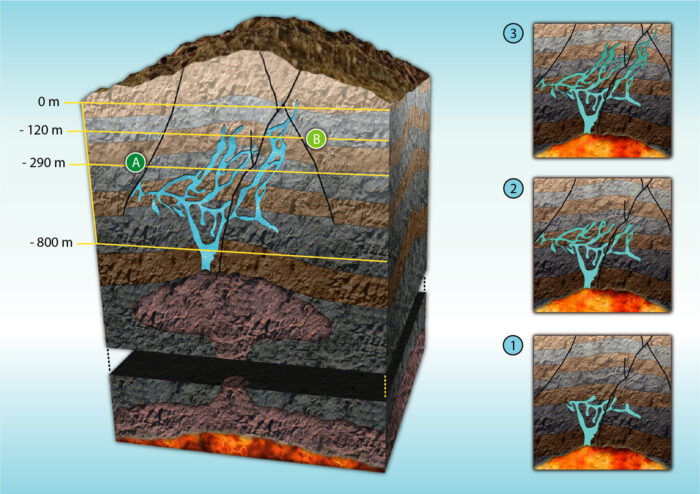
Eventually, the water drained out of the cavern (thanks to water pumps elsewhere in the mine), leaving behind a maze of crystals.
Beautiful death
The Cave of Crystals comprises at least four chambers: the Cave of Crystals, the Queen's Eye Cave, the Candles Cave, and the Ice Palace. The qualifier "at least" is there because 25 years after its discovery, the cavern system has yet to be fully explored.
That's because while the caves are friendly to crystal formation, they aren't necessarily friendly to human survival.
Temperatures inside the caverns can get up to 58°C, near record-setting temperatures in Death Valley. But as the old saw goes, it's not the heat that gets you, it's the humidity. In the Cave of Crystals, humidity can reach a whopping 90 to 100 percent.
Those conditions will kill you, and it doesn't take long.
So, when the first scientific explorations commenced, they required a little engineering first. A team led by cave mineral specialist Paolo Forti, of the University of Bologna, developed special refrigerated cave exploration suits before venturing forth.
The team started with standard cave exploration overalls, then added a thick tubing layer connected to a backpack. The backpack held 20kg of water and ice, which was then pumped through the tubing. Add a refrigerated respiration system, and you're all set to explore the Cave of Crystals. For a few minutes.
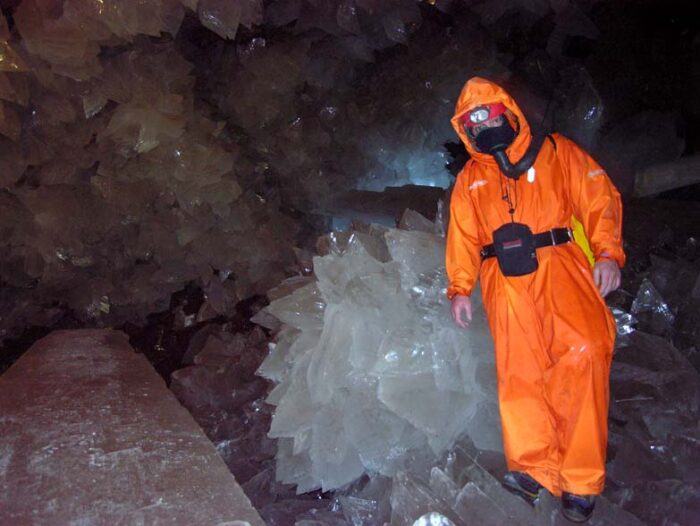
The system, though sophisticated, only keeps you cool for about thirty minutes at a time.
Another hurdle the team had to jump was the crystals themselves. Take a glance at photos from the Cave of Crystals and you'll see just how physically demanding it must be to navigate them. Exploration indicates more chambers, but that would mean destroying some of the crystals blocking the (prospective) openings, something no one involved is willing to do.
A window closes — for the best?
Operations ceased in the Naica Mine in 2015. With the pumps turned off, the caves reflooded, halting further scientific exploration.
But the discoveries made in the brief 15-year window were significant. Ancient pollen experts, geochemists, geologists, and hydrogeologists all had a chance to study the stupendous formations.
Interestingly enough, biologists also had a field day. They hoped that as the crystals formed, they trapped DNA from ancient bacteria swimming around in that million-year-old hot water. At first, they came up dry, but in 2017, speleologist and extremophile expert Penelope Boston from the New Mexico Institute of Mining and Technology announced a discovery. She had discovered ancient bacteria embedded in a few of the crystal samples taken before the caves reflooded.
The bacteria are unique and don't resemble anything currently known to science.
For now, the caves will remain closed to human exploration, though that might change if operations in the mine resume. In the meantime, while those of a scientific bent might mourn the loss of the knowledge hidden in the crystals, we can at least take solace that the Cave of Crystals has returned to the same state we found it in — a rare thing to be able to say.
The Earth: a ringed planet, much like Saturn, surrounded by a hula hoop of asteroids. The summit of Mount Everest: a tropical, vibrant paradise replete with frolicking shellfish and warm waters encouraging plentiful life.
At least, that's how it was 465 million years ago in the middle of a period in Earth's history called the Ordovician. Then, the rocks that now make up the top of Everest sat at the bottom of a shallow sea.
Five hundred million years ago at the dawn of the Ordovician, vertebrates had just developed. By the time it drew to a close around 440 million years ago, plants had crept out of the ocean and spread across land for the first time, blanketing the world in green.
The Earth's rings are a new addition to this picture, proposed in Earth and Planetary Science Letters by paleo-geologists from the University of Monash in Australia.
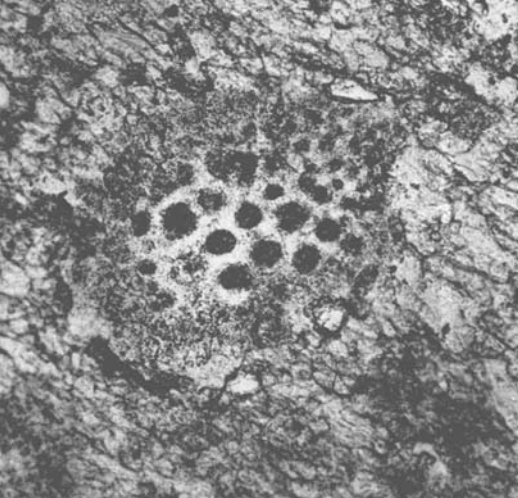
Meteor rain that lasted 40 million years

Somewhere in the middle of the Ordovician Period, meteors pounded the surface of the young Earth at a rate unprecedented since the Solar System's formation four billion years before.
It's hard to overstate how dramatic the Ordovician meteor event would have been if anything lived long enough to notice the change. Nothing did. Geologically short events are long enough for living things to evolve, go extinct, and still have time left over. A hypothetically immortal trilobite, however, would have noticed the average number of meteors hitting the warm waters of the Paleo-Tethys Ocean increasing by 100 or even 1,000 times, for 40 million years or so.
We know this because meteorites are rich in minerals like olivine. Olivine occurs far more in asteroids than on Earth. We find astonishing amounts of these minerals, and even some surviving impact craters, in rock from the middle of the Ordovician.
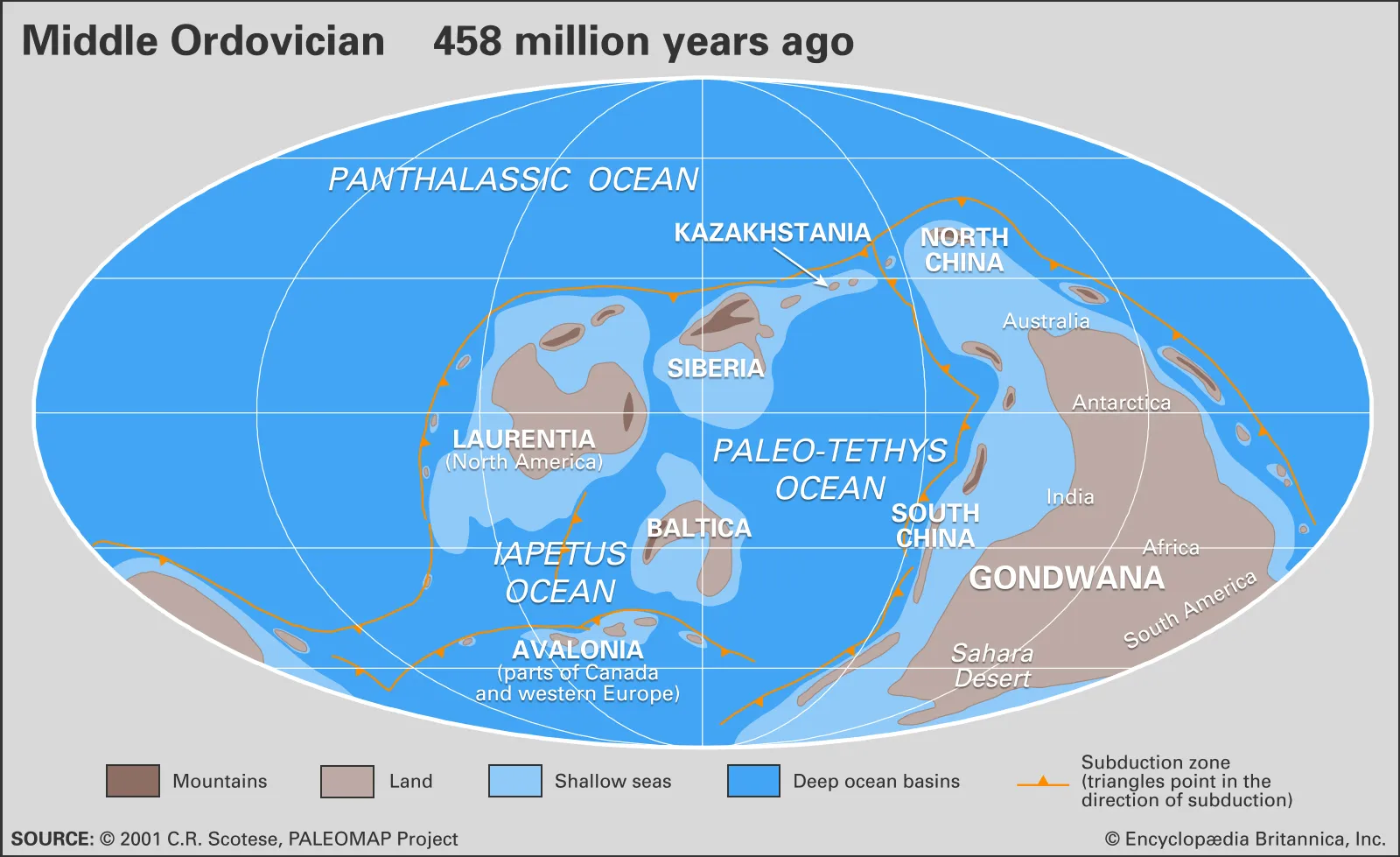
A new picture of the paleo-sky
In their new paper, the University of Monash team worked out what the latitudes of the 21 impact craters still visible from the Ordovician meteor event would have been 465 million years ago. They found that not one veered from the equator by more than 30°. Something must have forced meteors to fall around the equator.

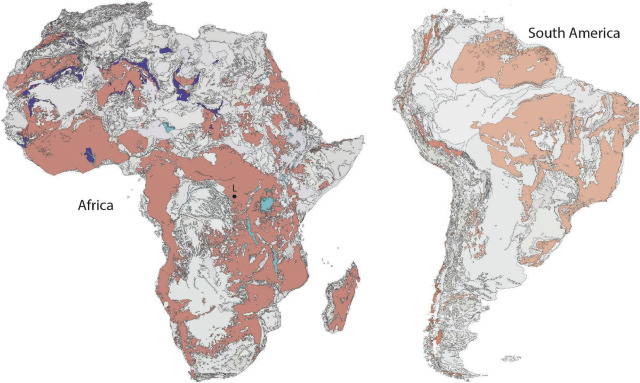
The team calculated the probability that meteors from the Asteroid Belt would randomly fall in this region and found that it was one in 400 million. Instead, they propose that a massive object on its way from the Asteroid Belt passed into the Earth's zone of influence. The Earth's gravity then tore it apart and bound the remnants in a tight orbit, forming a ring like the ones observed on all the outer planets, including Saturn.
With a ring of asteroids circling the Earth at its equator, it would only have been a matter of time before they all fell to the ground. A matter of 40 million years.
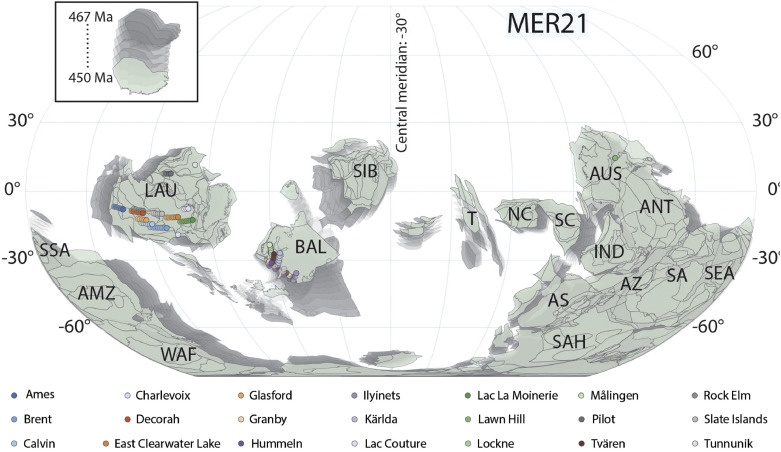
The icehouse world
In the late Ordovician, winter crept in. This wasn't a seasonal winter, but a winter no creature would outlive: the onset of an icehouse world.
The Earth goes through cycles of hot and cold. Hot periods, when the earth is known as a greenhouse world, boast luscious jungles at the North and South poles. The cold icehouse periods feature poles capped in ice sheets. We've been in an icehouse period for the last 34 million years, and we aren't due to leave it for millions of years more. That timeline drove climatologists to investigate why our ice caps are melting.
For most of the Ordovician, plants thrived in Antarctica. That changed when the temperature dropped by 8°C and ice crept over the poles. Winters got colder and summers hotter. And yet there was more than ten times as much carbon dioxide in the atmosphere as there is today, puzzling paleo-climatologists. Carbon dioxide retains heat. So how did the temperature in the southern hemisphere drop so suddenly?
The team from the University of Monash propose that the Earth's rings shaded the southern hemisphere from the Sun, while redirecting more sunlight toward the northern hemisphere. As the debris in the ring finally fell to the ground or escaped the Earth's gravity, the normal influx of sunlight returned and the poles turned green once more.
The ring was gone, and the Ordovician ended.
From stuffing pigeons into missiles to discovering that animals can breathe through their anuses, the 2024 Ig Nobel Prize awards have no shortage of headline-grabbing studies.
The ignoble Nobel prize
The Ig Nobel Prize started in 1991 and aims to "honor achievements that first make people laugh, and then make them think." Though it is a riff on the Nobel Prize, the "ignoble" prize does recognize genuine achievements, though without the life-changing million-dollar reward. Instead, winners are given a one-trillion Zimbabwean dollar banknote, worth less than one U.S. dollar.
This year there are 10 studies recognized in 10 categories.
A team of Japanese scientists won the Ig Nobel Prize in physiology for a study that showed that mice, rats, and pigs could absorb oxygen into the bloodstream via the rectum. At first blush, this might not sound like a particularly useful discovery, however, researchers hope that "enteral ventilation" could help treat human patients with respiratory failure. The team is now running a phase one trial with human volunteers.

The Peace Prize went to the late BF Skinner, a U.S. psychologist. His study explored placing live pigeons in missiles to guide them to their targets.
"This is the history of a crackpot idea, born on the wrong side of the tracks intellectually speaking, but eventually vindicated in a sort of middle-class respectability. It is the story of a proposal to use living organisms to guide missiles," Skinner wrote by way of introduction to his article Pigeons in a Pelican.
Can we trust reports of extreme old age?
Saul Newman at the University of Oxford won the Demography Prize for his study looking into claims of extreme old age. Newman demonstrated that many claims of extreme old age in humans come with a host of suspect data points.
"Relative poverty and short lifespan constitute unexpected predictors of centenarian [100 years] and supercentenarian [110 years] status and support a primary role of fraud and error in generating remarkable human age records," the study concludes. "Only 18% of ‘exhaustively’ validated supercentenarians have a birth certificate, falling to zero percent in the USA."
The Medicine Award went to a mixed Swiss/German/Belgian team for their study that involved a (rather terrifying) twist on the placebo effect. Researchers found that medicine that causes side effects can be more effective than medicine that does not.
The Chemistry award went to a Dutch team that separated drunk worms from their sober brethren using chromatography (separating a mixture into its components) and a maze. The study aims to increase our understanding of polymer dynamics by analyzing differences in wriggle activity.
"The sad conclusion is that the drunk worms get home very late," Woutersen said as he accepted the award.
Plant vision and the swimming abilities of dead trout
American Jacob White and German Felipe Yamashita shared the Botany Award for their potential discovery of "plant vision." The duo found that a South American plant can mimic the leaves of plastic plants it is placed next to.
Physics went to James Liao from the University of Florida for an off-the-wall-sounding study that investigated the swimming abilities of a dead trout.
"The musculoskeletal system [of trout] is phenomenally well matched to the environment. We know this because a dead fish exhibits unnervingly similar Karman gait kinematics [an undulatory swimming motion] to a live fish, with the exception that it cannot put on the brakes. In a remarkable example of passive thrust production," the study explained.

Winning coin flips and scaring cows with cats
Fifty researchers shared the Probability Prize for their study on the good old coin flip. After over 350,000 coin flips, their study concluded that coins are marginally more likely to land the same way up as they started.
Finally, Fordyce Ely and William Petersen won the Biology Award posthumously for their investigation into dairy milk production. They decided to scare cows using a cat and exploding paper bags to see what would happen to the cow's milk. Perhaps unsurprisingly, cows harassed by a cat on their back and subject to exploding bags produced less milk.
Three tiny glass beads, from a sample of 3,000 taken from the Moon, have revealed evidence of recent volcanic activity. Previous scientific estimates suggested volcanic activity ended more than 2 billion years ago, but a new study suggests far, far more recent eruptions. Volcanoes on our lunar satellite were still spewing lava while dinosaurs walked the Earth.
Valuable cargo
The samples, picked up by the Chinese Chang'e 5 mission in 2020, are the first Moon rocks brought to Earth since the 1970s. Over the next four years, a team from the Institute of Geology and Geophysics at the Chinese Academy of Sciences in Beijing painstakingly analyzed the minute beads, each smaller than a pinhead. On Sept. 5, they published their findings.

They only identified three beads with a volcanic origin "based on their textures, chemical compositions, and sulfur isotopes." The remaining 2,997 were likely the result of meteorite impacts.
Though these aren't the first volcanic beads discovered on the Moon, they are certainly the most interesting. Previous samples date back billions of years, to the formation of lunar maria, enormous basaltic plains formed by lava flowing into craters. Meanwhile, "uranium-lead dating of the three volcanic glass beads [from 2020] shows that they formed 123 million, ±15 million, years ago," the report explains.
What was driving volcanic activity for so long?
However, existing models of the Moon's evolution suggest that its interior should have cooled beyond volcanism long before the formation of these glass beads.
As is often the case, researchers are left with more questions than answers. Perhaps the recently discovered Moon cave will help scientists understand what caused this surprisingly recent volcanic activity...
A tiny arthropod beats out all other creatures for the world’s fastest backflip. The minuscule globular springtail has a flip rate of 368 per second. They jump so fast they seem to vanish in front of your very eyes.
The tiny bug's jump lasts an average of 161 milliseconds. Blink and you'll miss it. The springtails use this maneuver to escape predators.
These hexapods –- six-legged arthropods –- are only a millimeter or two long. Springtails are not equipped to bite or sting any oncoming predators. They only have one option for escape, and that is to get out of the way really, really quickly.
Adrian Smith and Jacob Harrison set out to discover how the tiny acrobats jump so incredibly fast.
“When globular springtails jump, they don’t just leap up and down, they flip through the air," Smith explained. "It’s the closest you can get to a Sonic the Hedgehog jump in real life. So naturally I wanted to see how they do it.”
The little hexapods are not hard to come by. He collected the test subjects from his garden and started watching them.
The two researchers set up cameras to film the arthropods leaping into the air and completing their somersaults. A normal camera would not suffice: The springtails appear in one frame and then vanish. Capturing the full acrobatics display required a camera that shoots 40,000 frames per second.
They always somersault backwards
To get them to spring into the air, they shone a bright light on them or gently prodded them with the tip of a paintbrush. By analyzing the high-speed footage, they learned the biomechanics that allowed them to spin so rapidly in the air.
As the springtails launch themselves, an appendage from their underbelly hits the ground. Known as the furca, it pushes down hard, causing the springtails to jolt backwards into the air at around 1.5 meters per second.
Although they are only 1-2mm in size, they shoot 60mm into the air and spin between 14 to 29 times.
"They accelerate their bodies into a jump at about the same rate as a flea, but on top of that, they spin," says Smith. "No other animal on Earth does a backflip faster than a globular springtail.”
The fact they always jump backward suggests this talent is used to escape danger rather than for general movement.
Though they might beat Simone Biles for the number of backflips in a row, she still takes the gold for landing them. The springtails either landed fairly gracefully or crashed into the ground. There was no in-between.
About half the time, they use a sticky forked tube they can push out of their bodies to help them navigate their return to terra firma. Usually used for grooming, the tube acts as “a sort of anchor that pulls them to their feet so they can get on with their day,” Smith told Science News.
If they did not manage this in time, they simply crash-landed and bounced around, unhurt, until they came to a standstill.
Ice samples from the Guliya Glacier on the Tibetan Plateau contained over 1,700 never-before-seen viruses.
The discovery of new viruses often sends people into a panic. Could one of them cause a new pandemic? Thankfully, these bacteria-eating viruses do not pose a threat to humans or any other animals.
“Glaciers represent some of the cleanest environments on Earth," Lonnie Thompson, co-author of a new study, commented. "[We] routinely drink meltwater from these glaciers when we are drilling the ice cores."
An international team of scientists drilled ice cores from the Himalayan permafrost in 2015. Ground frozen for millennia has started to thaw, and all the historical information within them will soon be lost. So the race is on to collect as many samples as possible before these frozen time capsules melt away.
Collecting the ice cores is not easy. A 2015 expedition needed 60 people to gather the samples at the center of this study. First, they hiked to the arid Guliya plateau, 6,000m up. They then drilled 300m down into the ice and extracted the cores. They later cut these into one-meter-long sections.
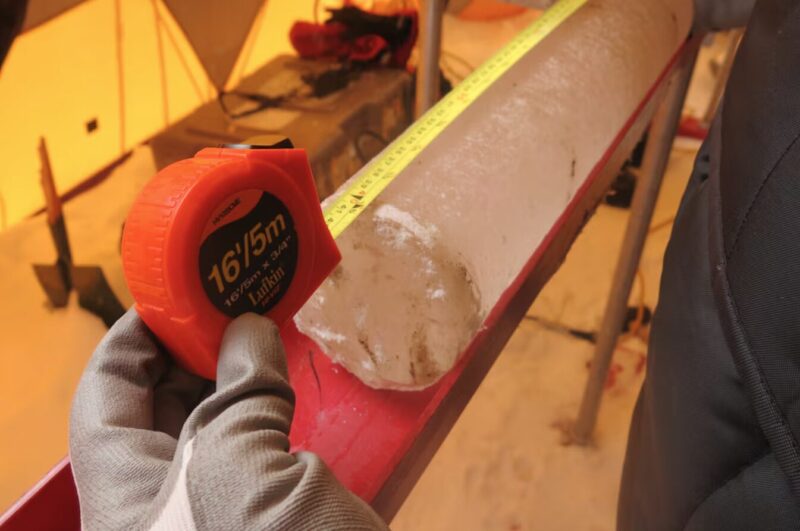
Ice carried by yak back
The hardest part is transporting the frozen cores after extraction. An entire herd of yaks initially carried the cores, which were then transferred onto refrigerated trucks and planes. For the whole journey from Tibet to Ohio, the cores had to stay frozen and free of contamination from modern-day viruses.
The team identified 50 times more viral information than from any previous glaciers. The 1,705 viruses belonged to nine separate time periods. All were bacteriophages -- viruses that only infect bacteria. They have shown researchers how viruses have evolved over 41,000 years. A staggering 97% of them were completely new to science.
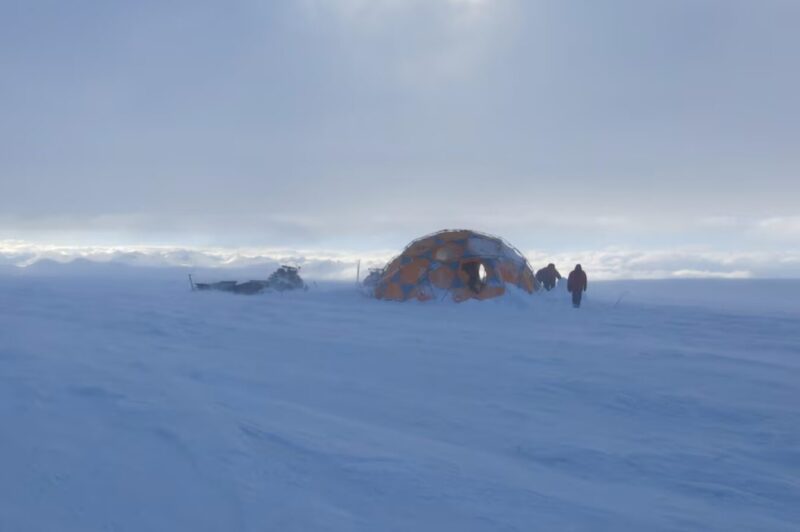
The study looks at how viruses evolve in a changing climate. The 41,000 years featured three major cold-to-warm cycles. The viruses that form during colder and warmer periods vary significantly.
One group evolved, for example, at the end of the last ice age, 11,500 years ago. This suggests there is a clear link between climatic change and virus evolution. The genetic signatures of some viruses overlap with those of known organisms across the globe.
“That means some of them were potentially transported from areas like the Middle East or even the Arctic,” said lead author ZhiPing Zhong.
At school, wildlife is pretty straightforward. Kids are told about lions, tigers, and bears (oh my!). But sometimes, the animal kingdom springs a surprise creature on us. Hybrids are unexpected mishmashes of two species. From the majestic liger, born of a lion and tiger union, to the enigmatic wholphin, a product of a dolphin and false killer whale pairing, these creatures challenge our understanding of nature.
Buffalypso
This odd and relatively unknown hybrid species originated in Trinidad and Tobago. It is a crossbreed between a species of swamp buffalo called a carabao and an Indian water buffalo. Locals created the buffalypso out of necessity. Buffalos, imported from India after the Second World War, were highly susceptible to local diseases, particularly tuberculosis, but also hoof and mouth disease and parasite-based illnesses.
After receiving expertise from abroad, veterinary scientist Stephen Bennet returned to Trinidad to develop a solution. He wanted to create an animal hardy enough to withstand the toughest climates and environmental stresses.
"The adaptability of these animals to tropical conditions would indicate that, with selective breeding and improved environmental conditions, these animals may easily find their way in the tropics," Bennet said.
He tested his hybrid with herds belonging to the Caroni Limited Sugar Company. Bennett and his researchers eventually found success. The world's first buffalypsos were physically tougher than your average water buffalo, had much more meat, produced high-quality milk, and were exported to several countries like the U.S., Italy, and Argentina.

However, the buffalypso experiment ended after a few decades. A lack of funding, proper management, research, food supplies, and vaccination protocols led to a sad decline in the animals. Though they were initially disease-resistant, they started to develop brucellosis, which caused a steady decrease in numbers. What was once a healthy herd of a few thousand is now around 1,000. They have also become a nuisance to rural populations; they run around unsupervised, trampling crops and scaring locals.
Wholphin
First identified by the scientific community in Tokyo's SeaWorld in the 1980s, the wholphin was the unexpected result of a union between a male "false killer whale" and a female bottlenose dolphin.
Smithsonian Magazine writer Carlyn Kranking believes that dolphins are more flexible in terms of who (and what species) they breed with than most species. This means there may be more dolphin hybrids in the wild.
The name is a little deceptive. A false killer whale is a type of dolphin, so technically, it is a dolphin hybrid. Researcher John Blanchard at Tokyo SeaWorld described the wholphin as: "darker than the other dolphins, and her nose looked like it was chopped off."
Wholphins typically resemble a dolphin with a thicker, stocky frame and interesting color patterns. They generally fall between the size of a bottlenose dolphin and a false killer whale. They are playful, social, and intelligent.

The wholphin in Tokyo SeaWorld died within 200 days. In Hawaii, a female wholphin survived to adulthood and gave birth to a few calves. All the calves died after a few months, except one, which had trouble nursing. The high mortality rate of the wholphin has prevented further studies.
Liger
The liger is the offspring of a male lion and a female tiger, while a tigon is a cross between a lioness and a male tiger. Ligers are larger and possess a lion's muscular stature and a tiger's large size. They can grow past 3.3 meters long and weigh up to 450kg, while tigons usually grow up to two meters long and weigh 320 to 360kg. Some records show that ligers can emerge in the wild.
Ligers are more susceptible to health problems than either parent species, suffering from obesity and organ issues.

Sightings of ligers date from at least the 17th century in India. One was presented to Queen Victoria when she was a young princess. They possess faint stripes of black, brown, or sandy color.
Though initially thought to be sterile, the Zoological Life Foundation now states that there is a 6% chance that ligers can bear healthy cubs. There are around 100 ligers in captivity today.
Pizzly and grolar bears
The pizzly bear and a grolar bear are hybrids from a polar bear and a grizzly bear. A pizzly comes from a male polar bear and a female grizzly, a grolar is from a female polar bear and a male grizzly. These hybridizations occur where the species ranges overlap, as in the Arctic regions of Canada and Alaska.
A hunter first observed a hybrid in 2006. He was traversing Banks Island in Canada's central High Arctic when he shot a bear. The bear was cream-colored with brown areas on its fur, hunchbacked like a grizzly, and had longer claws than a polar bear.
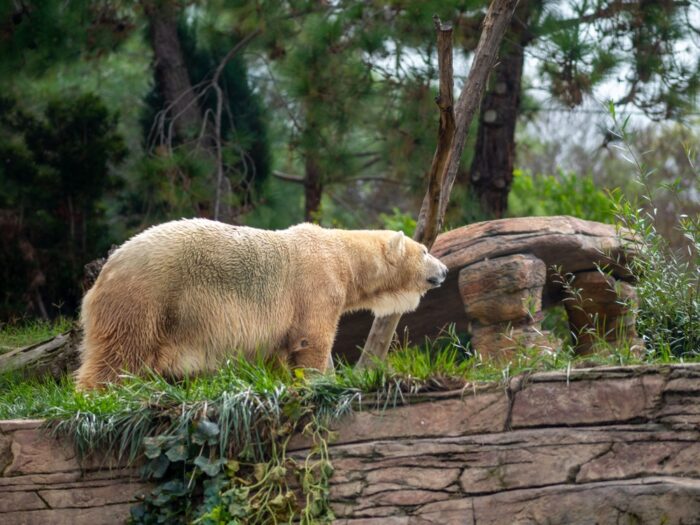
When the Wildlife Genetics International research team ran a DNA test, they found the bear had a polar bear mother and a grizzly father. More examples popped up in 2010, 2012, and 2014. Some researchers believe climate change is responsible for a surge in hybrids. Grizzly bears are roaming further north for food and polar bears are moving south. As a result, the two species are coming into contact more often.
Narluga
This hybrid is extremely rare. The narluga is a cross between a narwhal and a beluga. The narluga does not have a tusk (it's actually an extended tooth) but inherits the narwhal's grey and white skin. It has the tail of a narwhal and fins of a beluga. Scientists only know this from studying the skull of a narwhal-beluga hybrid found by an Inuit in the 1980s.
Sadly, there is no photographic evidence of this hybrid, only eyewitness testimony and physical remains.
Researchers have drilled a window into the layer of our Earth that is responsible for volcanic activity, crust formation, and earthquakes.
The mantle is incredibly difficult to study because it's so deeply buried beneath the Earth's crust, or outer skin. Now, scientists have drilled a 1,268m-deep core that reaches down into this elusive layer. It’s a scientific goldmine.
Although the mantle is a 2,900km layer of semi-solid rock, it lies at least six kilometers beneath the crust. This makes it nearly impossible to sample. But in 2023, a crack formed in the Earth's crust on the mid-Atlantic Ridge, giving access to the upper mantle.
A research ship collected the rock core from this fault in the seafloor. They had originally planned to drill 200m down and recover as much as possible. To their surprise, they could keep drilling downward easily. Although it wasn't easy to bring it back to the surface, they recovered almost three-quarters of the core sample.
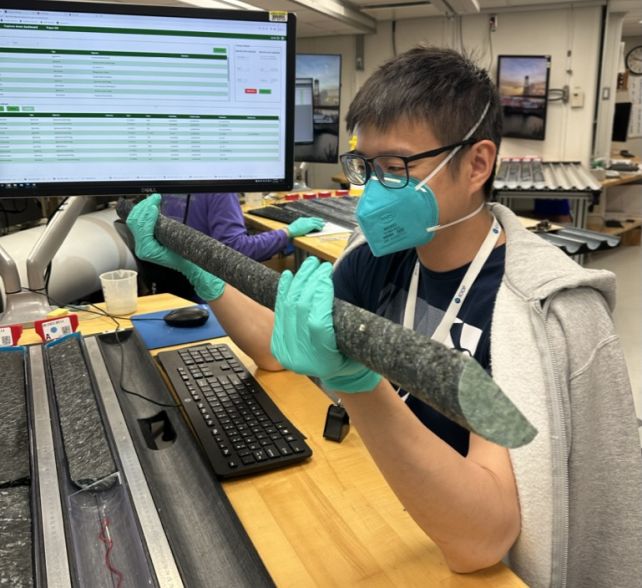
Unexpected results
Since then, an international team has been analyzing the composition of the mantle, especially its minerals. Harzburgite -- a variety of peridotite -- is the main rock within the core. This forms when the mantle partially melts.
The results surprised them. “There is a lot less pyroxene in the rocks, and the rocks have very high concentrations of magnesium, both of which result from much higher amounts of melting than what we would have predicted,” they said.
This helps explain how magma forms within the mantle and how volcanic eruptions occur.
"It tells us how the mantle melts and feeds volcanoes, particularly those on the ocean floor, which account for most of the volcanism on Earth,” said lead author of the study, Johan Lissenberg.
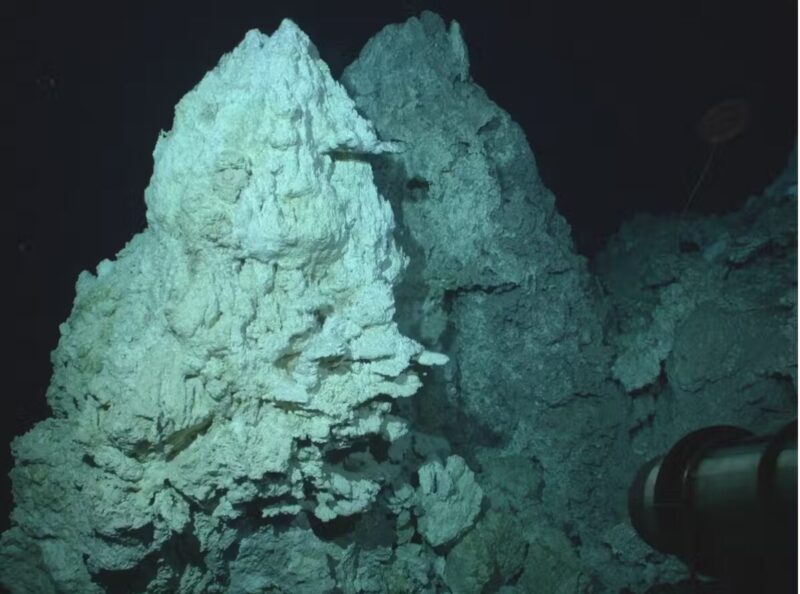
Lost City
The mantle core comes from an area of seafloor rich in hydrothermal vents known as the Lost City. Seawater seeps down into the mantle and heats up. As the seawater hits the minerals, the olivine and pyroxene within the periodite turn into serpentine minerals and produce hydrocarbons.
These methane, hydrogen, and carbon compounds release into the warm fluid, escaping from the hydrothermal vents. This fluid is crucial for the survival of microbial life.
Many scientists think hydrothermal vents may have been the starting place for life on Earth. Understanding the chemicals within the mantle could provide clues about how life began.
Scientists have known for some time that tree rings record the history of avalanches. Now a new method allows them to study the rings without killing the tree.
The impact of an avalanche is clear on the outside of the tree. It breaks off branches and scrapes bark. But it also affects inside the tree. The growth rings become slightly irregular and warped.
Often scientists have studied regions where avalanches are common, such as Alaska and the Rocky Mountains. Tree ring records of avalanches in the Eaglecrest ski area of Alaska, for example, date back to the 1800s. In the Rockies, tree rings show that widespread avalanches occur about every five years.
Until recently, researchers had to cut down the tree to obtain a full cross-section of its trunk. But a new study in Bulgaria used a different method. Rather than chop down the tree, the team used an increment borer to extract thick wood cores from the trunks of hundreds of pine trees. The samples were then dried, mounted in holders, and sanded so the rings were visible.
“It’s a very long process,” admitted co-author Nickolay Tsvetanov.

Researchers targeted the Bansko Ski resort in Bulgaria's Pirin Mountains. Here, skiers and snowboarders are venturing off-piste in ever greater numbers, so understanding avalanche history is increasingly important.
The results showed that avalanches have occurred in the area since at least the 1600s, with 20 large-scale avalanches since the 1800s. Though one of these matches an avalanche record from February 12, 1963, the other mega-slides were completely unknown.
“We don’t have written histories of these events. We can only rely on tree rings,” commented co-author Momchil Panayotov, a Bulgarian dendrochronologist.
Through the tree rings, the team could estimate how large the various slides were. This meant they could date the avalanches and see how climate affected their occurrence and size. They hope the results will help with avalanche safety around the popular resort and beyond.
Three different robotic explorers made planetary news last week. The discoveries of Perseverance, Curiosity, and Chang'e 5 are reshaping our understanding of conditions on Mars and the moon billions of years ago. From possible microbial signatures to extraterrestrial water records, here are the latest insights from outer space.
Possible Martian biosignatures
There's no debate over whether life exists off Earth. Without a doubt, it does. The question is: Does any life exist off Earth that we didn't put there?
While earthly microbial hitchhikers from probes gallivant around the moon, a white-striped rock on Mars might hold traces of true Martians -- now long dead. On Thursday, NASA announced that the Perseverance rover had discovered the rock in question in Neretva Vallis.
Nowadays, Neretva Vallis is a barren riverbed of dust and rocks. But three billion years ago, it poured water into a lake at the dry crater bed known as Jezero Crater. It's here that Perseverance found the strange rock. Somewhat confusingly, the NASA team named the rock itself Cheyava Falls, after the tallest waterfall in the Grand Canyon.
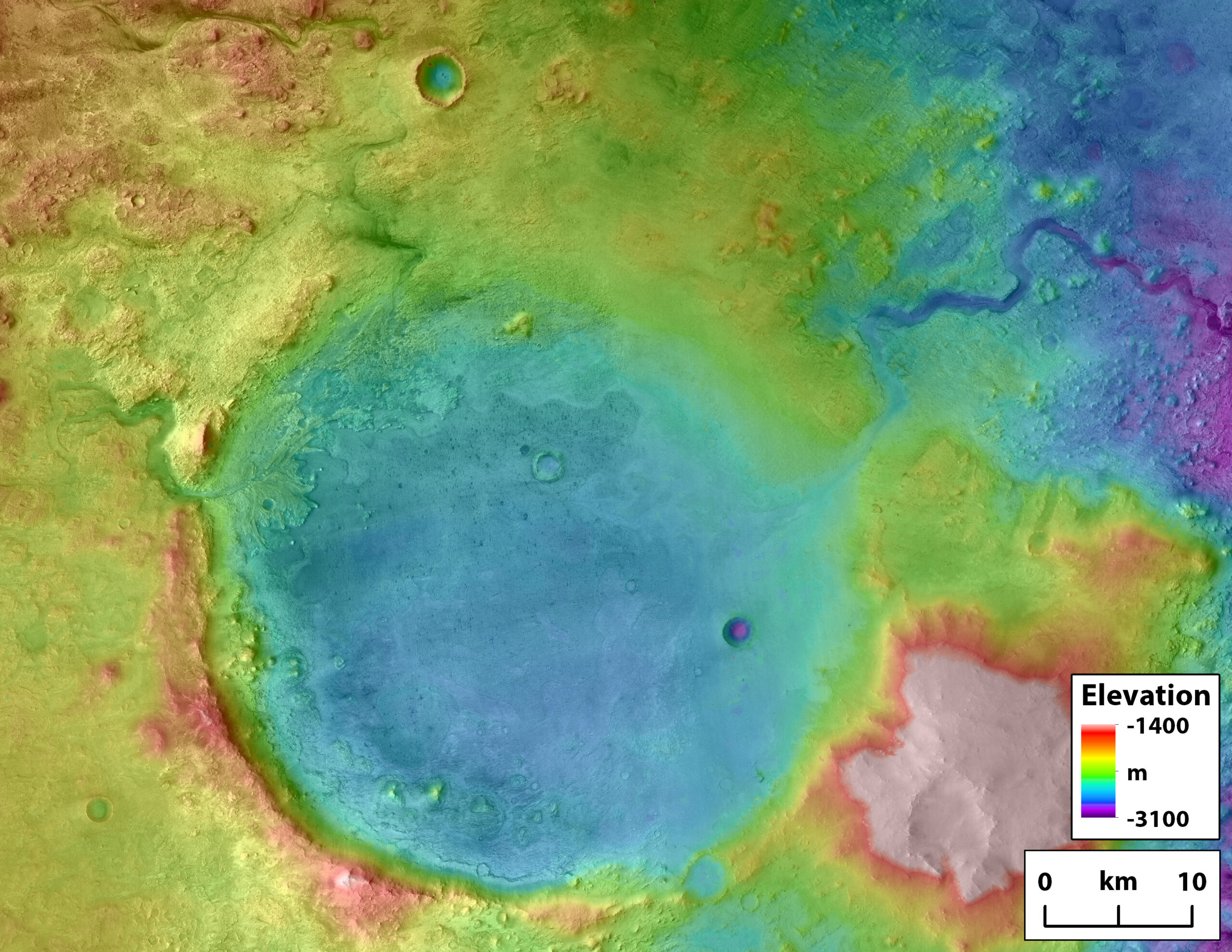
The chemistry of the rock suggests a perfect climate for ancient life. Streaks of calcium sulfate run over it, hinting that it used to be submerged in flowing water.
Organic compounds also dot the surface of the rock. These carbon-bearing molecules were vital to the formation of life on Earth. Astronomers have identified them in the earliest stages of star formation and in comets, but we rarely see them on Mars. Their presence in this rock adds another of life's building blocks to our picture of ancient Neretva Vallis.
Leopard spots
And then there are the "leopard spots." That's what the Perseverance team is calling the little white dots with black rings containing iron phosphate. The leopard spots might have formed through the reaction of hematite and organic compounds. On Earth, reactions like this fed emerging microbial life. Could the same have happened on Mars?
We won't know until we get Perseverance's sample of Cheyava Falls back to Earth, where scientists can examine it in a lab for subsurface microbial fossils. But Perseverance's sample return mission isn't a certainty. Beset by budget issues, its fate is up to the U.S. Congress. The House of Representatives just passed a draft budget for NASA that included $650 million to get Perseverance's samples back to Earth, but it's likely the Senate will counter with a lower suggestion. Knowledge of life on Mars may depend on terrestrial bureaucracy.
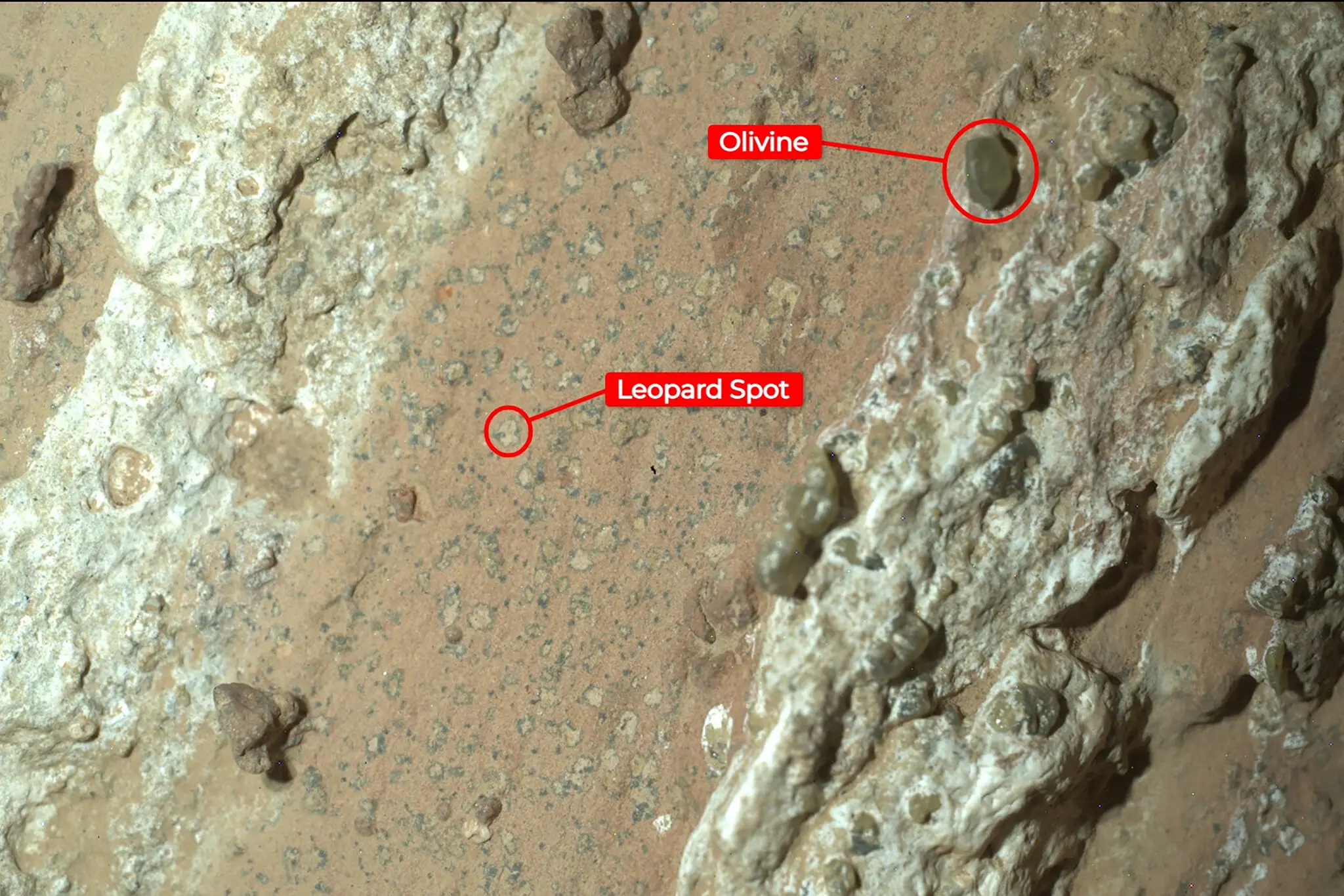
Pure sulfur on Mars
While Perseverance carefully maneuvered the channel leading to an ancient lake, its sibling Curiosity was almost 4,000km away in an old riverbed called Gediz Vallis. Unlike Neretva Vallis, the geological record in Gediz hints at a time when Mars' water was dwindling. Salty compounds line thin, meandering streambeds between sandy hills. Here, Curiosity lurched over an unobtrusive rock that cracked open to reveal crystals of pure yellowish sulfur. When the Curiosity team examined the surroundings, they realized the rover was sitting in a field full of sulfur geodes.
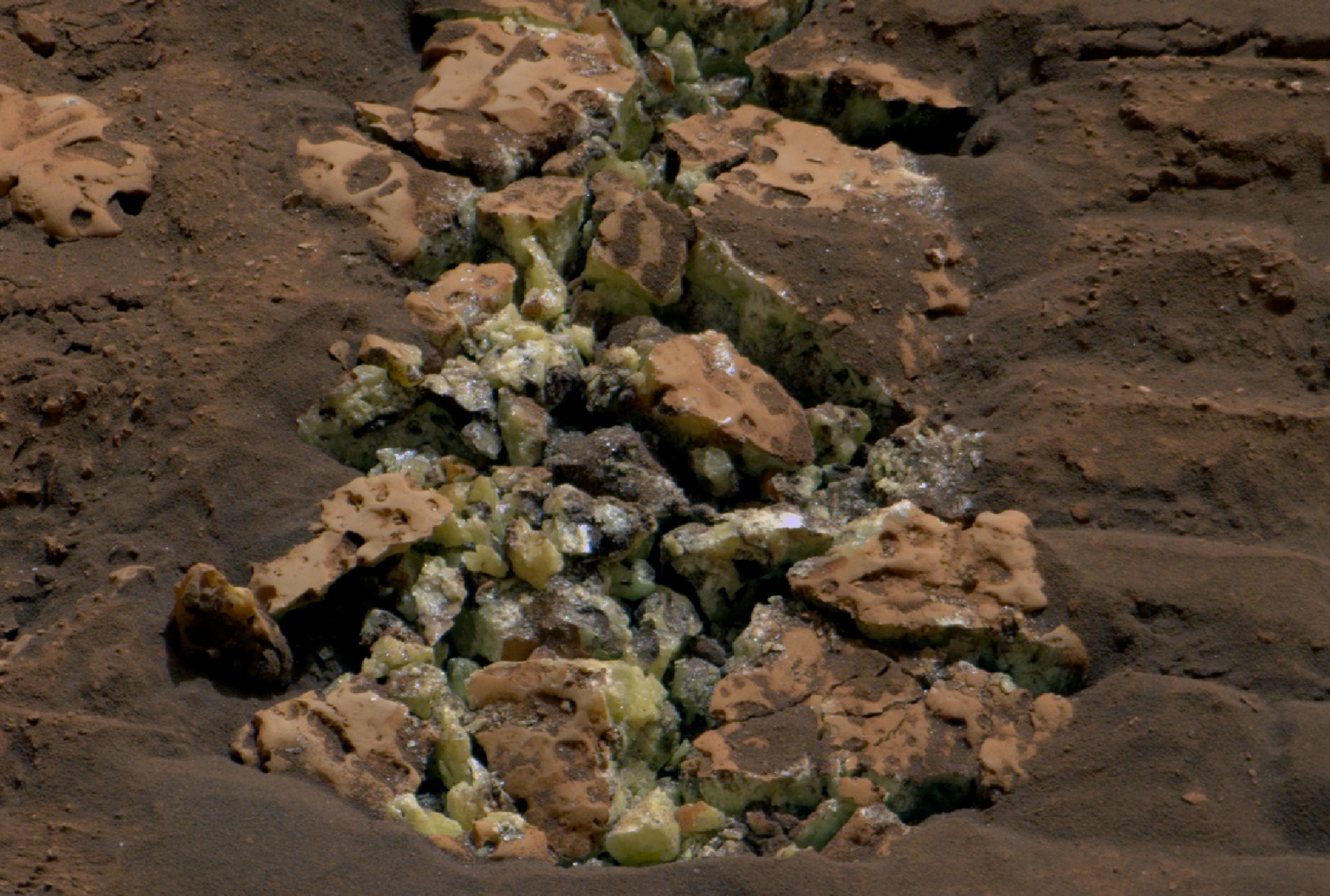
Curiosity was looking for sulfates, salty minerals containing sulfur, and other elements. Sulfates form when water evaporates. But these weren't diluted sulfates from Mars' dwindling streams. This was pure, crystalline sulfur -- and a lot of it. On Earth, most naturally occurring pure sulfur originates in structures called salt domes, which don't appear at all in this region of Mars. So how did it get there? We'll have to wait for more clues as Curiosity charts the history of the last water on Mars.
Chang'e 5 put lunar water on Earth for the first time
A month ago, we covered the China National Space Agency's (CNSA) retrieval of samples from the dark side of the Moon and what they might indicate about our solar system's history. While we're waiting for news from tests on the far-side samples, near-side samples from the CNSA's previous lunar probe, Chang'e 5, have a story to tell. A team just announced that Chang'e 5's near-side samples contain novograblenovite, a volcanic mineral that is 41% water by weight.

No previous lunar samples had water molecules in them. The Apollo 11 samples contained hydroxide (an oxygen atom bonded with a hydrogen ion), a byproduct of water molecules breaking apart. That, along with remote observations of water ice at the poles, confirmed that the moon is not devoid of water like we long thought. But we've never before been able to examine lunar water in labs on Earth.
Water isn't all the samples showed. The minerals were rich in ammonium, which may have formed when lava on the surface reacted with water, hydrogen chloride, and ammonia gas. Taken together, these findings suggest a steamy magma ocean on the early moon, replete with water in different states.
A changing picture
For many decades, observations of nearby planetary bodies painted a bleak picture of our corner of the solar system. Not only did Earthlings appear to be alone in the present, but the conditions on our moon and neighboring planets seemed antithetical even to past extraterrestrial life.
That picture is changing. It started with the 1972 Mariner mission, which showed dry riverbeds on the surface of Mars. The more our abilities improve in aeronautics and remote sensing, the more we're learning about the time over three billion years ago when Mars looked a lot more like a young Earth.
The moon, long thought to be utterly dry, also tells a more complicated story the better we get at listening. Water and ammonia vapor may have been prevalent, interacting with a magma ocean and leaving traces all over the moon's surface. With low oxygen and high volcanic activity, this picture of the moon takes us back even further to the first 500 million years of the Earth's history.
The Earth may still be alone. But at least it hasn't always been special.
Let's cut straight to the bad news: you can't hike to the James Webb Space Telescope. The air's a bit too thin, and the temperature doesn't bear mentioning. But while astronomy's flashiest telescopes orbit the Earth, many on the ground are far more accessible than you might think. We've curated a list of observatories to visit that combine stunning natural landscapes with cutting-edge science.
A note: many observatories not on this list feature striking high-altitude vistas. However, observatory boards are understandably reluctant to promote tourism for telescopes that sit at the same altitude as Everest Base Camp. Interested in trekking up to the Atacama Large Millimeter Array in Chile or the Institut de radioastronomie millimétrique in Spain? We salute you, but you'd have to jump through a lot of hoops.
5. Five-Hundred-Meter Aperture Spherical Telescope (Guizhou, China)

China's radio astronomy community may be young, but it's thriving. The construction of the world's largest telescope cemented China's place in time-domain astronomy -- a sub-field focused on detecting and analyzing high-speed events in the sky. These range from supernovae to the mysterious extragalactic signals known as Fast Radio Bursts.
The Five-hundred-meter Aperture Spherical Telescope, or FAST, rests in a natural sinkhole in mountainous Guizhou province in southwestern China. Unlike most telescopes, it isn't steerable. It looks at the same portion of the sky every day. But its massive collecting area maximizes the light it receives from distant sources, allowing it to probe deep into the universe.
Located a 34-minute drive from China's "astronomy town" of Kedu in Pingtang County, FAST offers all the telescope-based tourism you could want. There's a planetarium, a room where visitors can simulate changing the active surface of the dish to compensate for the atmosphere, and a viewing platform for the dish itself. The only convenient approach to FAST is by car, but many tourists online complain about the 700+ steps to the mountaintop viewing platform -- cementing its place on this list. The weather is temperate and rainy year-round.
4. Palomar Observatory (California, U.S.A.)
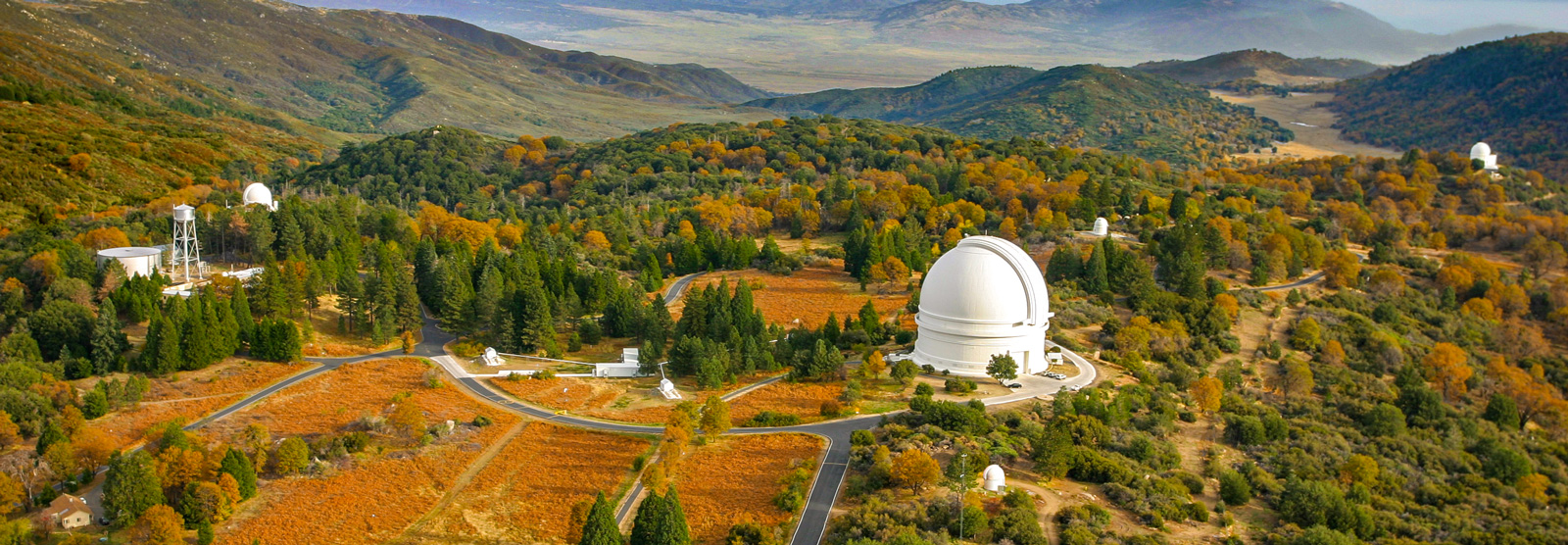
Most powerful, ground-based telescopes observe at radio wavelengths. Radio waves permeate the Earth's atmosphere far more easily than more energetic electromagnetic waves such as infrared or optical.
Palomar Observatory is one of two on this list that observe in the optical and infrared, rather than the radio. Its 200-inch telescope was a marvel of engineering when Caltech founder Gregory Hale built it in the 1930s and 1940s. It finally saw "first light" -- astronomers' term for a telescope's first view of the sky -- in 1949. Astronomers still use the Hale 200" for research.
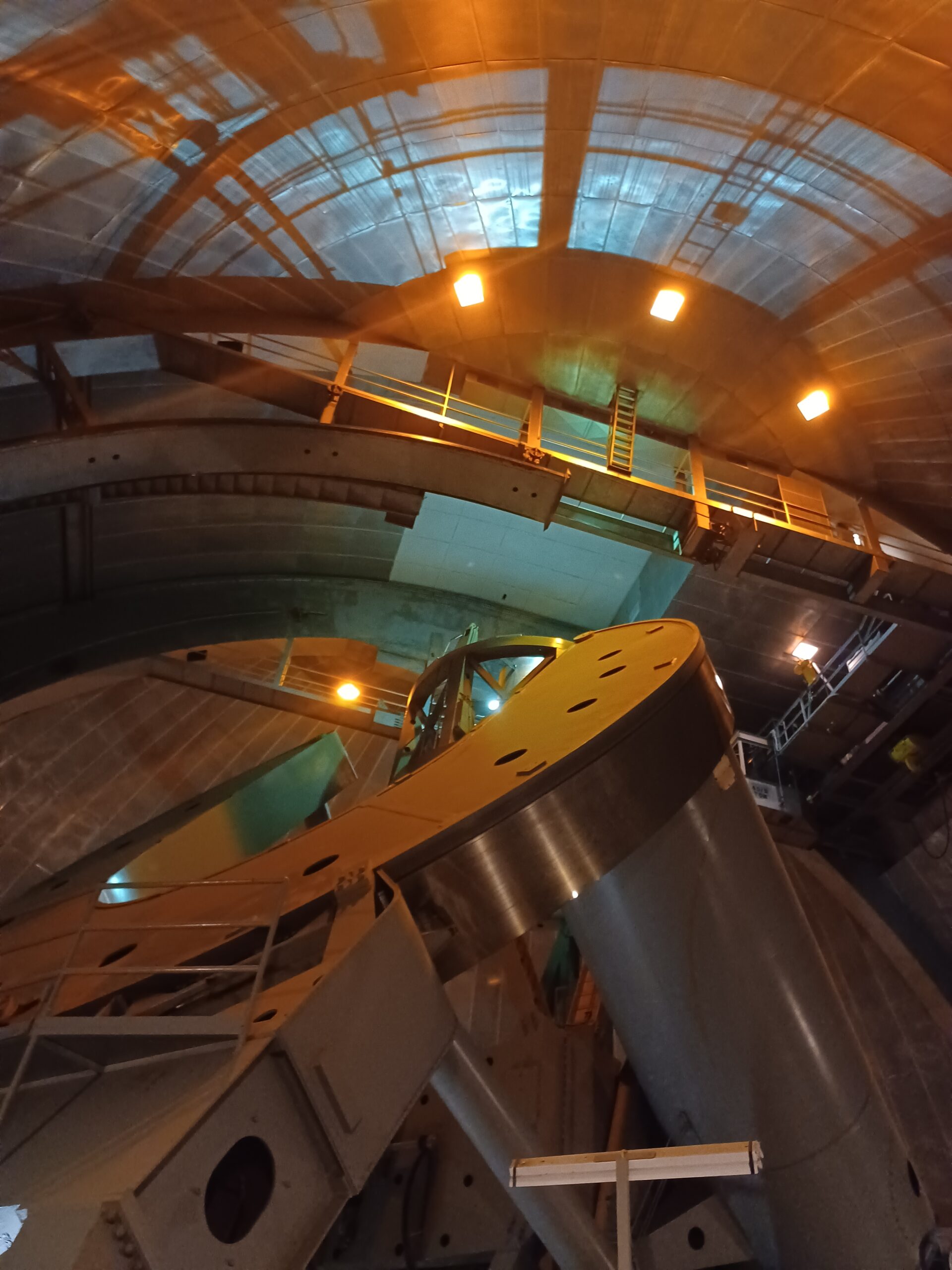
But Palomar isn't on this list just for its foundational place in American astronomy or its charming outreach center. A nine-kilometer trail curls up the mountain through thick forest and culminates at the observatory. The grounds are open to the public, but we also highly recommend taking a tour through the dome and its catwalk, which overlooks the Peninsular Ranges of Southern California.
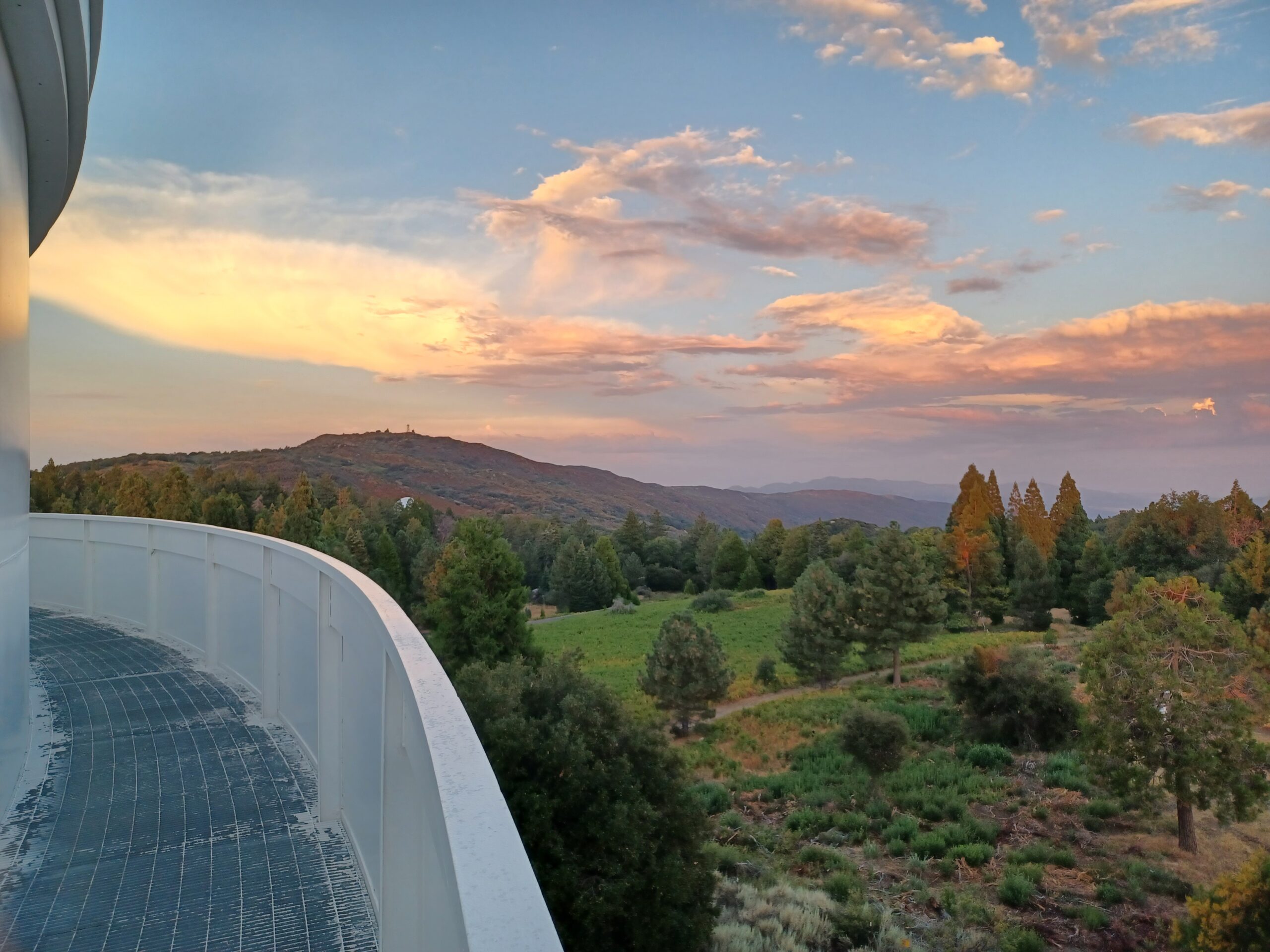
3. Parkes Observatory (New South Wales, Australia)
She's a film star. She's a key player in the 1969 Moon landing. She's in the middle of a sheep paddock. Who is she? None other than the 64-meter Murriyang Telescope at Parkes Observatory.
Because of its superior sensitivity, Murriyang relayed most of the Moon landing footage live to a waiting world. The operators continued to point the dish at the Moon through fierce winds that could have toppled the entire telescope. The 2000 Australian comedy-drama The Dish chronicles the escapades of the operators and their NASA liaison.
Located in rolling farmland right next to Goobang National Park, Parkes Observatory offers both scientific excitement and a route of approach via miles of bush trails. Goobang National Park also has camping sites within hiking distance of the observatory. Make sure to pay attention to heat forecasts, though, and bring lots of water.

2. Apache Point/Sunspot Solar Observatory (New Mexico, U.S.)
Apache Point Observatory might not be the most powerful telescope out there, but without it, key scientific initiatives would crumble. Perched in the Sacramento Mountains of eastern New Mexico, Apache Point allows self-tours of the grounds. Its neighbor, the unique Sunspot Solar Observatory, boasts a gift shop, a visitor center, and a museum.
Trails run up and down the mountain, linking every telescope with scenic lookouts and smooth running paths. For the most ambitious, a 56km double-track path runs from the nearby city of Cloudcroft all the way up to the observatory. Elk, mountain lions, and bears are common. Bring bear spray and lots of water. Fortunately, the altitude spares the mountain from the worst of the summer heat.

1. Green Bank Observatory (West Virginia, U.S.A.)
Nestled in the Monongahela National Forest without Wi-Fi or cell service, surrounded by fire towers and overlook points, Green Bank Observatory claims first place on this list. Green Bank hosts a staggering variety of radio telescopes, including the largest steerable telescope in the world.
The National Radio Quiet Zone protects the dishes from radio frequency interference -- and dramatically shapes daily life in the region. The only phones are landlines, and the only internet is Ethernet. Microwaves on site are kept in iron cages to avoid incidents like the peryton detections of the 2010s, when mysterious signals called "perytons" all turned out to be microwaves in observatory breakrooms.
But if you're not a radio-noisy electronic device, you can go just about anywhere at Green Bank Observatory. Visitors can walk the five-kilometer loop from the visitors' center to the 100m dish without any guide or permit. Dogs are welcome. The only fences in place are to stop viewers from standing in the shadow of the dish in case it collapses -- again.
Half a dozen trails circle the observatory itself, and yearly trail-running events start or end at the telescope. Countless more paths and camping sites pepper the massive Monongahela National Forest. And if you're all hiked out by the end of it, we recommend a nice ride on the historic Cass Scenic Railroad.
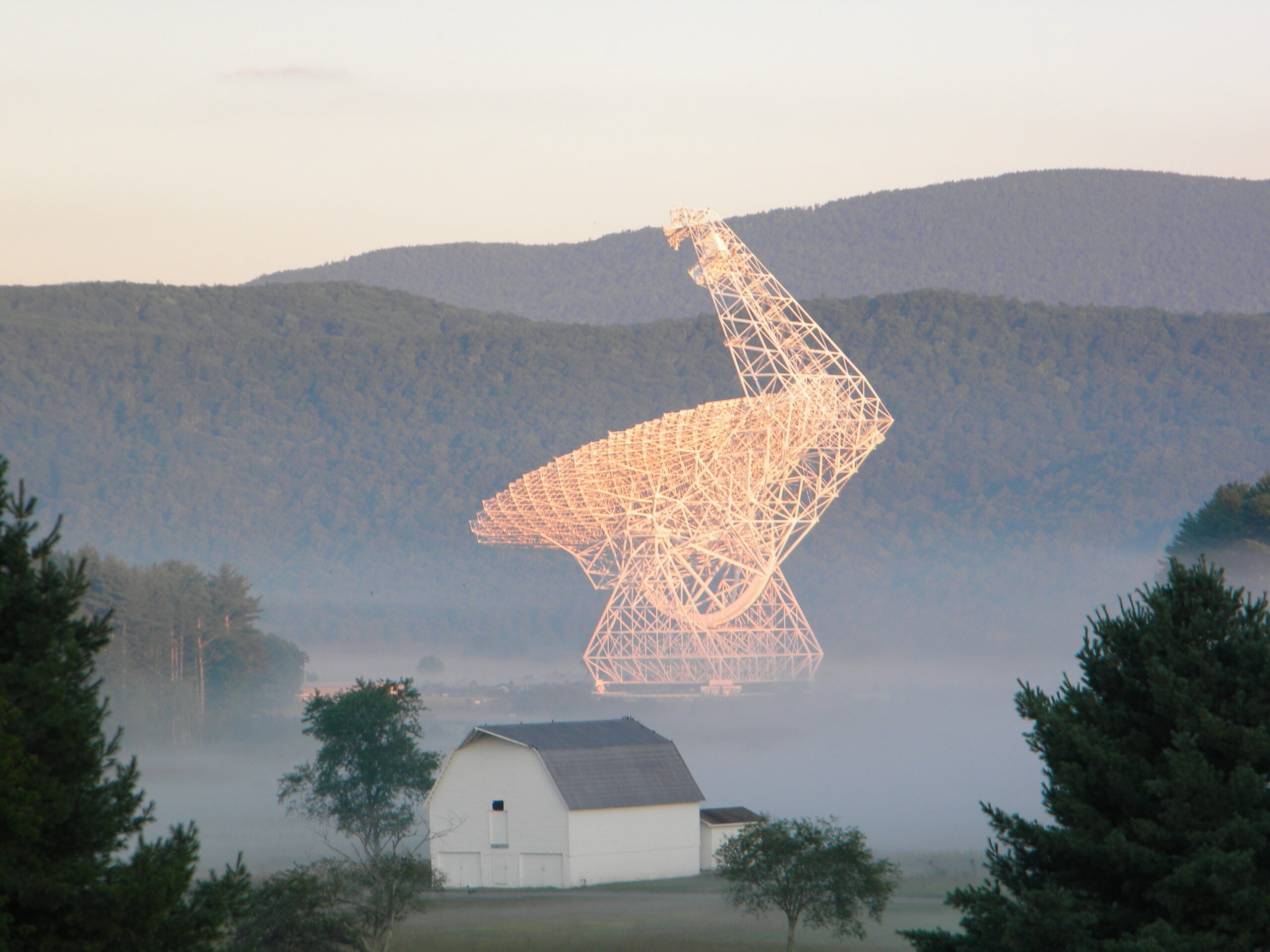
"But what about ____?"
Reasons for exclusion from this list vary dramatically. Some observatories require intense background checks for visitors. Some, like the beautiful Kitt Peak National Observatory, are worth the visit but approachable only by car. In contrast, a 19km trail leads up to Keck Observatory on 4,000m Mauna Kea in Hawaii, but we wouldn't recommend visiting it due to ongoing tensions between the local community and the observatory over telescope development on sacred land.
Some of the most striking high-altitude observatories, like those on the Atacama Plateau in Chile and in the Sierra Nevada mountains of Spain, welcome visitors but discourage approaches on foot due to altitude-related health concerns.
When we asked staff at several high-altitude observatories about hiking up to the telescopes, they were baffled. What kind of person, they questioned, would possibly want to ascend a mountain on foot?
Fireflies. Lightning bugs. Whatever you call the little beetles, they're a beautiful evening spectacle — illuminating the dusky woodlands with a spectral and fleeting glow all their own.
Over 2,000 species of fireflies light up the world, but they are particularly prevalent in the dense forests of North America, which 170 varieties call home. And once per year, for a few weeks in late May and early June, one particular species does something special. While most North American species of fireflies flash individually, the males of the Photinus carolinus firefly have a different approach.
They synchronize, bringing stunning bursts of simultaneous yellow-gold light to the air above the forest floor of one of the oldest mountain ranges in the world.

Photinus carolinus is a firefly native to the southeastern and mid-Atlantic regions of the United States. Their population in the Great Smoky Mountains, a range that straddles the U.S. states of Tennesee and North Carolina, is particularly dense. It was here, in the southern Appalachian Mountains, that the glaciers stopped advancing at the end of the last Ice Age.
Stayed after the glaciers retreated
As the glaciers retreated, many of the species the oncoming walls of ice had pushed southwards stayed put. The result is an incredibly biodiverse area boasting one of the continent's most varied blends of plant, animal, and fungal species.
P. carolinus is one such species.
While it's certain that the Cherokee people who lived in the rich, green landscape for thousands of years knew about the synchronous displays — as did the white settlers who displaced them — the interesting evolutionary tactic wasn't described by science until the 1990s.
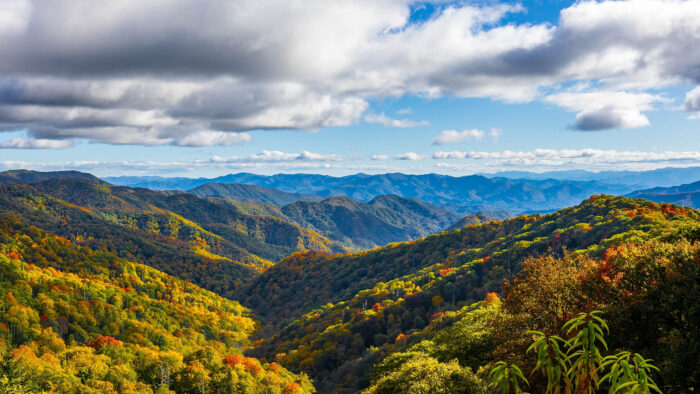
That's when a citizen naturalist named Lynn Frierson Faust read a science news magazine article claiming that synchronous fireflies didn't exist in the western hemisphere. (Some species synchronize in Asia.)
“Growing up in east Tennessee, we called them lightning bugs. They're just part of summer,” Faust told NPR. “I thought, ‘Ours are synchronous – who do I tell this to?’”
After writing letters to biologists and other researchers, word got out to the scientific community at large. Having studied P. carolinus for 30 years, scientists now believe they know why the little beetles arrange their nightly light show the way they do. But as for the how? Like the best parts of our world, that's still a mystery waiting for an answer.
Standing out from the crowd
The Smoky Mountain population of P. carolinus spends one to two years in the larval stage, feeding on the many worms and snails that slime their way through the wet forest floor of the temperate rainforest. Then, they grow wings and emerge to mate.
So far, P. carolinus is no different than the thousands of other lightning bug species around the world. They also share their cousins' method of illumination — bioluminescence.
According to the National Park Service, "fireflies combine the chemical luciferin and oxygen with the enzyme luciferase in their lanterns (part of their abdomens) to make light." The result is a reaction that's nearly 100% light, with nearly nothing wasted as heat.
"In contrast," the NPS continues, "the energy produced by an incandescent light bulb is approximately 10% light and 90% heat." Male fireflies buzz around while flashing, while females hover in one place and flash in response.

For fireflies, the mating window is short
The mating window is short — so short that many don't even stop to eat once they emerge — only one to two weeks. And a ticking clock isn't the only thing they have to contend with.
The problem is light pollution, but not in the way you may be thinking. There are 18 other species of fireflies in the park, and a good deal of them are blinking at the same time. Some of them are even predatory and use their blinks to lure in competing species for a tasty snack.
If you are a single person trying to stand out on the world's many dating apps, you might find yourself sympathizing with the conundrum.
So P. carolinus evolved a novel solution. The males synchronize their flashes, all the better to catch the attention of females who might otherwise be confused by light displays from males of different species.
The display is spectacular — five to eight flashes followed by an eight-second pause, then five to eight flashes. As dusk falls, the flashes start out randomly, but as more and more males join in, the pattern syncs, and the show truly begins.
It's a strategy that only benefits some of the thousands of P. carolinus males who emerge every spring. But some is better than none, and from a species perspective, it's worked so far.
Unanswered questions
While the lens of evolution provides a plausible explanation for the behavior, biologists still aren't entirely clear on how lightning bugs like P. carolinus synchronize their flashes. But the fact that the display starts out randomly and then synchronizes over time might provide an answer.
Orit Peleg, a biophysicist and computer scientist at the University of Colorado in Boulder, told NPR that she believes the trigger is visual, not biochemical or auditory.
“We can actually trigger that communication with an artificial LED light,” she said.
Even more intriguing, research has indicated that different parts of a P. carolinus swarm can initiate synchronicity on different evenings — basically, there aren't specific male members of the group in charge of creating the display.
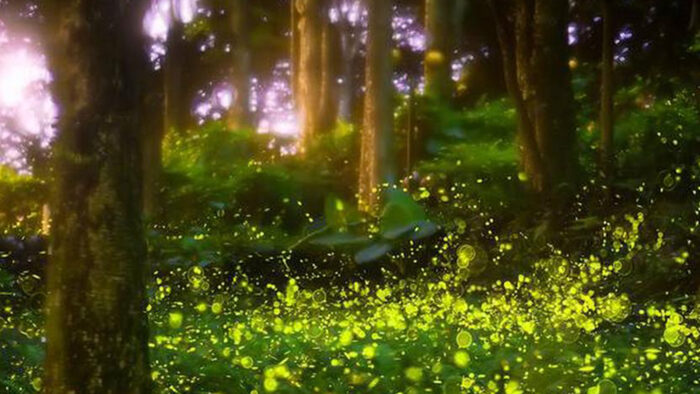
Luckily for you and me, there's no need to understand precisely how this particular natural wonder works in order to enjoy it. And you don't even have to live in Western North Carolina or East Tennessee to see the display. P. carolinus' range extends northward to Pennsylvania, although the beetles prefer the elevations and climate in the Great Smoky Mountains. And another synchronous species, Photuris frontalis, calls South Carolina's Congaree National Park home.
Controlling visitors
To help preserve human impact on the unique species, managers at Great Smoky Mountain National Park and Congaree National Park have instituted a lottery system to help manage visitor traffic during the few precious weeks when the fireflies' display is active. But if you don't make the cut and happen to live in the Southeastern United States, you may still catch a glimpse.
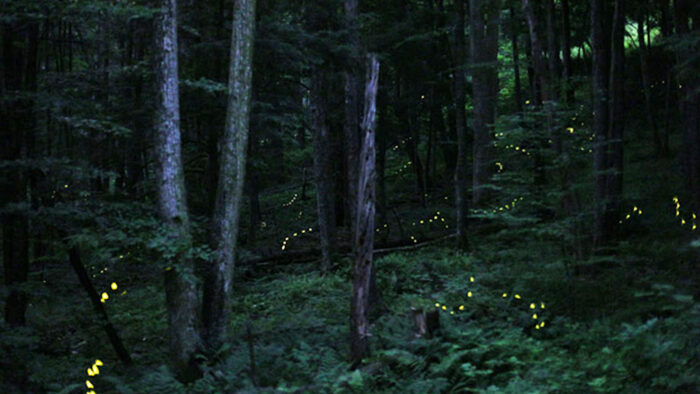
To maximize your chances, avoid treating your lawn with pesticides, leave some "wild spaces" in your yard, and eliminate outdoor lighting. Then kick back and enjoy the show. You may not see P. carolinus or P. frontalis doing their luminous dance, but you still have a good chance of catching one of the other 170 species of firefly that call North America home.
The displays usually only last 20 minutes or so, and you have to be in the right place at the right time. But sometimes, the fleeting nature of a natural wonder is what makes it all the more special.
Scientists have discovered a species of moss that lives in in Antarctica and the Mojave Desert but is so tough and resilient that it could grow on Mars.
Scientists tested samples of Syntichia caninervis in a series of hostile conditions. The moss survived storage in -80°C freezers for over three years, was submerged in liquid nitrogen at a frosty -196°C for weeks, and exposed to the level of gamma radiation experienced on Mars. It survived with flying colors, even though its normal habitat, while challenging, was hardly so extreme.
At this point, the researchers put it into an ecosystem that mimicked that of Mars. Atmospheric pressure, UV radiation, and low oxygen all mirrored those on the Red Planet. Almost all the moss, 98% of it, survived and revived when returned to a more hospitable environment.
“Our study shows that the environmental resilience of Syntrichia caninervis is superior to that of some of the highly stress-tolerant microorganisms,” the researchers wrote in their study.
The ability of the moss to survive stressful conditions is not altogether shocking. Mosses are thought to be the first complex organism to colonize Earth. Our primitive planet would have forced the moss to adapt to radically changing temperatures, extreme UV radiation, and drought. It seems this species retained such abilities through millions of years of evolution.
When it experiences extreme stress, the plant enters “selective metabolic dormancy.” This means that it stores the crucial nutrients and other substances it needs to recover.
This discovery could help make Mars suitable for human habitation. There are two obvious steps to a successful Martian colony: getting there without injury and surviving after landing. This means that humans have to cultivate their own food.
Syntichia caninervis could be the starting point. The moss would enhance the water-holding ability and structural stability of the soil. It would also increase the soil's nutritional value through nitrogen and carbon fixation. This humus could make growing crops possible.
“Although there is still a long way to go...we demonstrated the great potential of S. caninervis as a pioneer plant for Mars,” said the researchers.
The next step is sending samples to the moon and Mars to see if the moss can survive real-world testing.
About 2,500 years ago, a huge earthquake hit the Indian subcontinent, forcing the Ganges River to change course. The 2,575km river flows through northern India and Bangladesh to the Bay of Bengal. Within days or weeks of that cataclysm, its exact route changed to a new channel about 45km away. It happened near the delta, about 200km from the Bay of Bengal.

A different course change
Rivers often change course from repeated flooding or sediment build-up over the years. It often happens in deltas, but never before from earthquakes.
Typically, sediments pile up. As the river bed rises, the water changes direction. It is not a quick process. But occasionally, you get a rapid shift in the course of a river, called an avulsion, within days or weeks.
What happened to the Ganges was a uniquely large avulsion. "I don't think we have ever seen such a big one anywhere," said study co-author Michael Steckler.
The previously undocumented quake was 7.5 to 8 on the Richter scale. It was so powerful that even though it was centered 180km away, it rerouted a sizeable section of the main channel.
Liz Chamberlain, the study's lead author, and her colleagues were studying satellite images of the Ganges when they noticed a two-kilometer-wide crescent shape 45km from the river. On closer inspection, the crescent was a depression in the land, extending for 100km and almost parallel to the current river. The team believes it was the original main channel of the Ganges.
Though the old channel is no longer a river, it still regularly floods. On the flank of the old channel, the researchers saw vertical stripes of light-colored sand known as seismites. Violent shaking from earthquakes pressurized deep layers of sand and forced them up through the mud, like sand volcanoes, creating 40cm-wide stripes.

Another coming?
The old riverbed has many of these stripes, suggesting they were all created at the same time. Analysis of the sediments confirms they are 2,500 years old.
There is no record of an earthquake in the area at this time.
Such a quake could happen again. Recent studies show that a massive, hidden fault beneath the Ganges Delta could trigger a megaquake that would impact 140 million people.

Ten thousand years ago, as the Pleistocene ended and the Holocene began, sea levels rose and trapped a small group of woolly mammoths — possibly as few as eight — on Wrangel Island off the Siberian coast.
What happened next is what science calls a "bottleneck event." It's when a species faces a combination of a tiny population and external factors like environmental pressures, disease, or hunting. Meanwhile, the genetic variation thought to be necessary for a species to recover drops below a minimal threshold.
Many scientists believe that such bottlenecks spell the end of a species — an increasing concern given the planet's accelerating biodiversity loss.
But, as a new paper in the journal Cell demonstrates, the Wrangel Island mammoths might provide some hope for modern species.
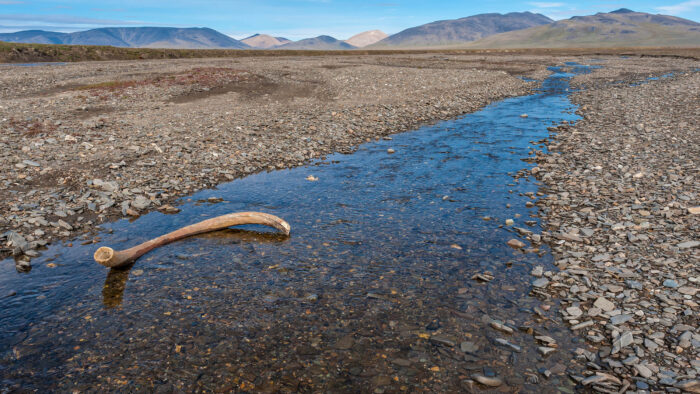
How? Well, although the Wrangel Island herd eventually died off, they made it another 6,000 years on their desolate island, eventually reaching a population of 200 to 300.
Four thousand years ago isn't all that long ago in the vast scale of history. It's remotely possible that the last Wrangel Island mammoth took its final breath as the capstone of the Great Pyramid of Giza was lowered into place. The point is that woolly mammoths were around for a long time.
More importantly, genetic research conducted by the paper's authors indicates that it was an unrelated disaster — likely something related to a changing climate, disease, or both — that ultimately spelled doom for the Wrangel mammoths, not inbreeding.
Bottlenecks, genes, and mammoths through the centuries
To reach their conclusions, the scientists studied genetic information from 21 woolly mammoths, including 14 post-bottleneck individuals from Wrangel Island. The data spans some 50,000 years — especially valuable given how difficult it is to study long-term changes in modern endangered species.
It turns out that the genetic changes weren't powerful enough to cause a population meltdown, i.e. mutations that prevented the mammoths from breeding or caused them to die out. In fact, something of the opposite may have occurred.

"Rather than accumulating high-impact mutations, the Wrangel Island population underwent a gradual purging of such mutations," they note in the paper.
"As a consequence, the last surviving mammoths on Wrangel Island had fewer high-impact mutations compared with the ancestral mainland population," the scientists continued.
Hope with a side serving of caution
In addition to offering a new toolset to scientists monitoring genetic diversity in contemporary endangered species, the paper serves as both hope and warning for the Earth's current biodiversity.
On the hope side, the Wrangel Island mammoths seem to prove that recovery from a bottleneck is possible (they share this story with cheetahs, which also bounced back from a bottleneck around the same time).
On the other hand, the Wrangel Island herd did eventually succumb to some kind of disaster. Researchers point out that it's possible the original bottleneck event — and the limited genetic variation that followed — may have still contributed to the herd's eventual extinction, especially if disease was involved.
On Tuesday, a strange bell-shaped casket floated gently down onto the plains of Inner Mongolia. It came from outer space and carried rocks from the far side of the Moon.

The China National Space Administration successfully retrieved the payload, which their lunar probe Chang'e 6, named after the Chinese moon goddess, sent back to Earth in a return module.
The success of their five previous Chang'e probes highlights the progression of the Chinese Lunar Exploration Program from orbital satellites to sample return missions in just 13 years. But Chang'e 6 broke new ground. This is the first time in history that humans have collected rocks from the Moon's "dark" side.
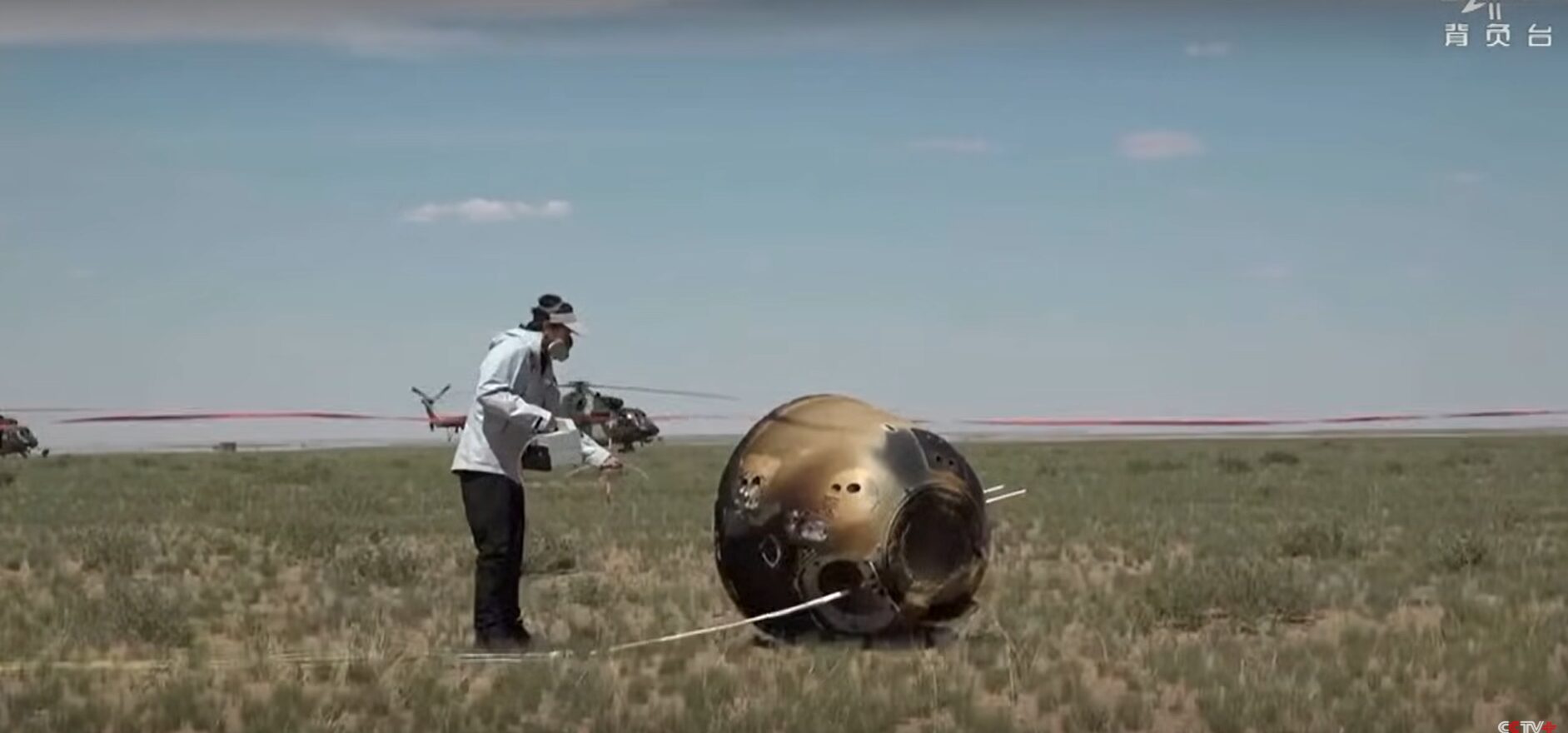
What actually is the "dark" side of the Moon?
The Moon doesn't orbit the Earth like the Earth orbits the Sun. Relative to the Sun, the Earth spins around its own axis every 24 hours, giving rise to day and night. But only one side of the Moon ever faces the Earth. The phases of the Moon depend on how much of the near side is exposed to sunlight.
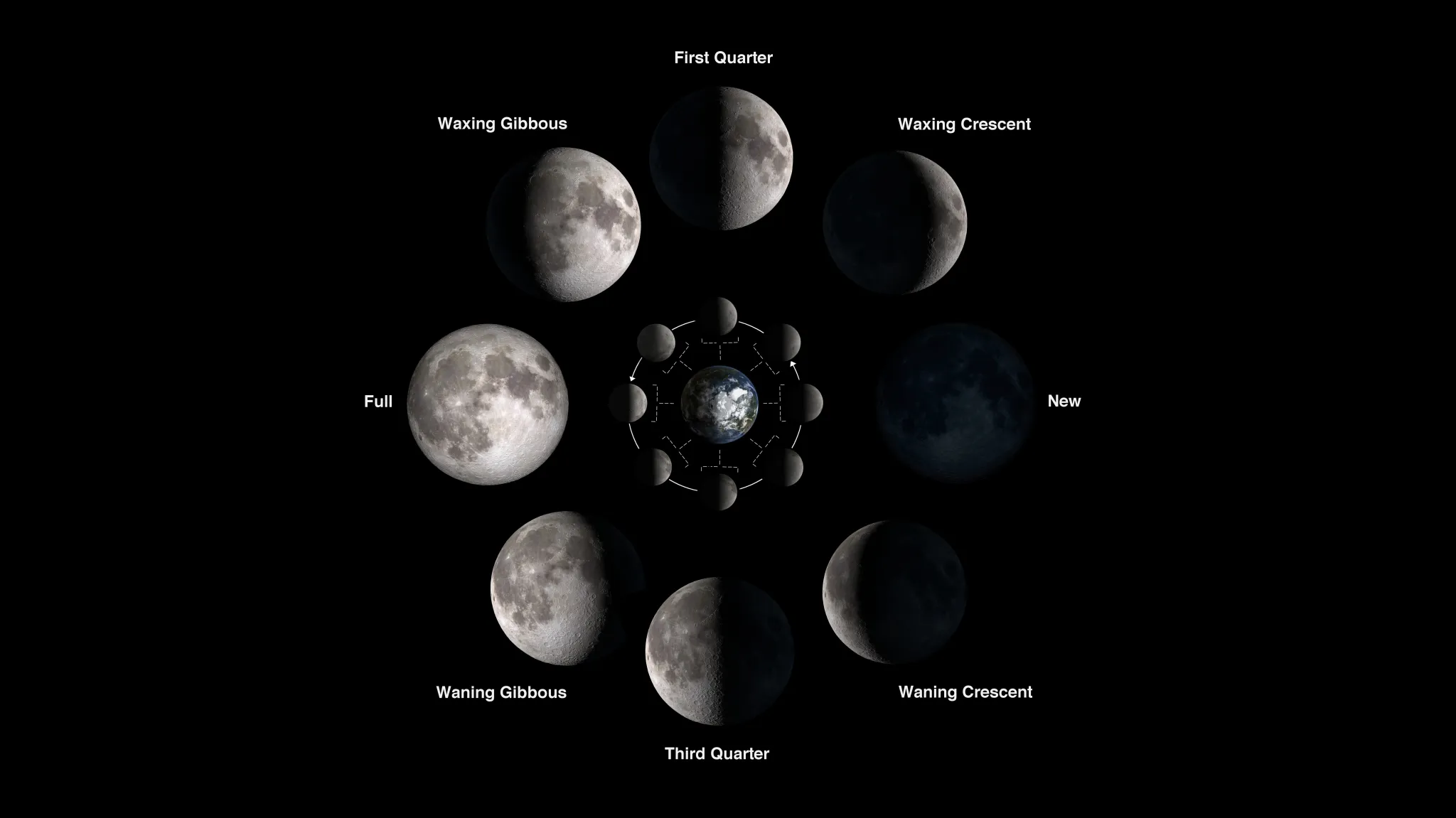
We never see the far side. This doesn't mean it's actually dark -- it gets about as much sunlight as the near side. But other processes create stark differences between the two sides.
Astronomers call orbits like the Moon's, where one side of an orbiting body always faces the center, "tidally locked." Tidal locking affects different parts of the locked object differently. For instance, since one side of the Moon is always closer to the Earth, it experiences a higher gravitational pull than the far side. This distortion stretches and chafes the mantle, or semi-molten middle layer. The frictional heat produced increases seismological and volcanic activity.

The tidal deformation of the Moon has caused the near side to be more volcanically active, with a thinner crust, and composed of different elements than the far side. The near side also received substantial radiation from the young, hot Earth during its formation, before both bodies cooled by hundreds of degrees. Because of this, the near side may have solidified much later than the far side.
How did the surface of the far side form?
The Moon is the best-studied extraterrestrial body in our universe, and planetary scientists know a lot about its far side. But even the best remote observations can't compare to physical data. When the Apollo missions retrieved rock samples from the near side, geochemical analysis cast into doubt the long-held model of crust formation via the solidification of a magma ocean. Rather, the wildly varying ages of certain rocks suggested a more chaotic process.
Exactly what that process was continues to be a matter for debate. In April, researchers at the University of Arizona found that most of the original magma ocean may have sunk below the surface early in the Moon's formation history. This magma then erupted on the near side in volcanic flows. But how old is the far side crust, and how did it form? The Chang'e 6 samples may reveal this history.
An ancient impact crater
The far side is interesting for another reason: the largest asteroid ever to hit the Moon slammed into it over four billion years ago. It left a massive impact crater called the South Pole-Aitken Basin. Despite this massive shock, volcanic activity was minimal. Unlike the volcanic, magma-scarred craters on the near side, the South Pole-Aitken basin preserves a near-perfect record of the initial impact.
Geological simulations suggest that because the near side of the Moon was hotter, asteroids sank deeper into the molten crust than on the solid far side, leaving less of a scar. That could be why the far side is littered with asteroid craters, even though both sides are equally susceptible to impacts. Since Chang'e 6 collected samples in the South Pole-Aitken Basin itself, analysis may confirm the sinking asteroid theory -- or hint at something else.
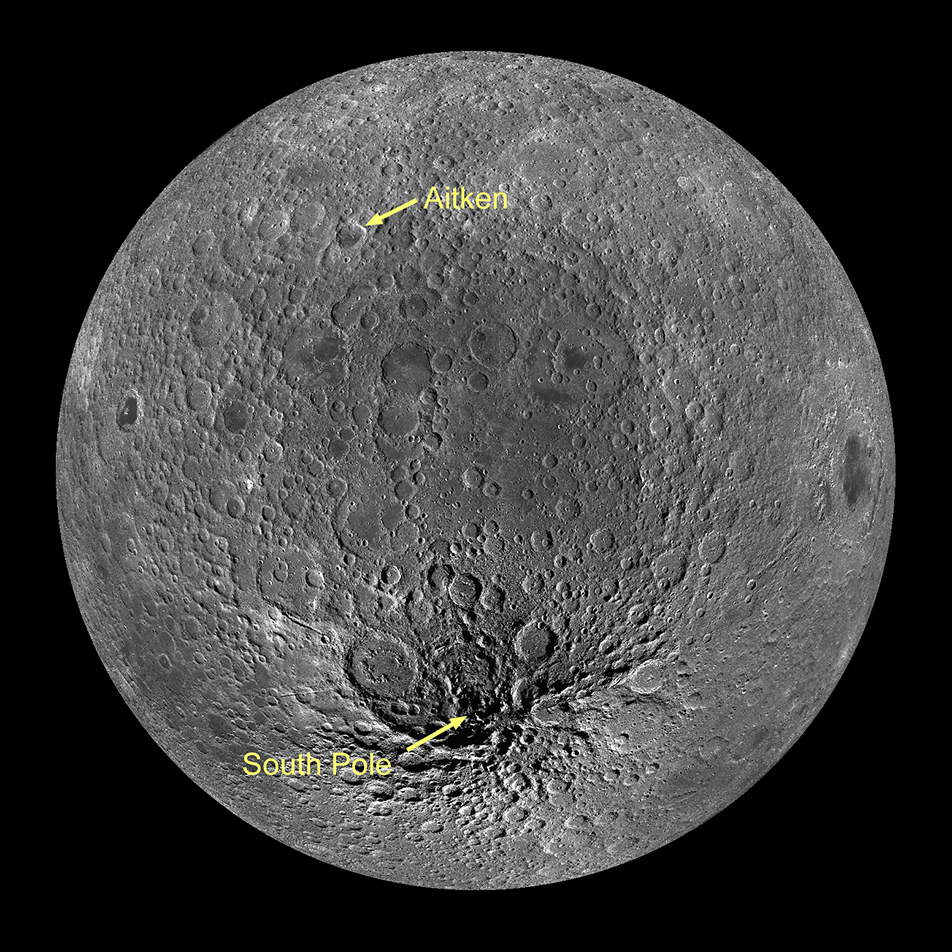
The Moon tells the Earth's history
The geology of the far side not only expands the story of the Moon's formation but also offers clues about the conditions in the early Solar System and the Earth of 4 to 4.5 billion years ago.
The Moon probably formed when a protoplanet called Theia collided with the young Earth at tremendous speeds. Although Theia sank and merged with the Earth's core, the impact shot debris from the surface of both Theia and the Earth into orbit. Over time, the debris coalesced into one body, the Moon, in the same way that the Earth formed from the material around the nascent Sun.

The highly active surface of the Earth and the effects of an oxygen-rich atmosphere have obscured the traces of its early history. Only a few massive craters remain to hint at asteroid impacts. The current crust is much younger than the Earth itself.
But we know from lunar observations that despite the scant geological record, asteroids constantly bombarded the young Earth, throwing debris into orbit and dredging up magma from deep in the mantle. Before the formation of an atmosphere, cosmic rays drenched the surface in ionizing radiation hundreds of times as intense as what we experience today. And the whole planet was so hot it could melt rock from tens of thousands of kilometers away.
Whatever Chang'e 6 reveals about the Moon, it will tell us something about our own home as well.
For the first time, scientists have recorded insects crossing an entire ocean. A flock of painted lady butterflies have flown 6,800 non-stop kilometers across the Atlantic.
In 2013, entomologist Gerard Talavera was on a beach in French Guiana when he saw something bizarre -- butterflies with a distinctive orange, black, and white pattern. These painted lady butterflies live in many places around the world, but not in South America.
Talavera was baffled. Painted ladies are indeed marathon migraters, flying up to 14,500km from Europe to sub-Saharan Africa. But along the way, they stop several times. To get from Europe to South America, these individuals had to cross the Atlantic Ocean in a single journey.
For years, Talavera has tried to determine if that was possible. If so, it would be the first known transoceanic flight completed by an insect.
It is notoriously hard to track insect migrations. You cannot tag them like you can with other animals. The first job was figuring out where the butterflies came from. Genome sequencing of the butterflies shows that they were very closely related to the populations in Europe and Western Africa.

Scientific detective work
Next, the team began sequencing DNA from the pollen grains stuck to the butterflies. The two plant species they identified were native to tropical Africa. Lastly, they analyzed hydrogen and strontium isotopes on the insect's wings. These pointed to Western Europe. Together, the clues suggested that they hatched in Europe or Africa.
It is the first time that a single study has used this combination of scientific detective work. “The technique should fundamentally transform our understanding of insect migration,” said study co-author Clement Bataille.
Regardless of their starting point, the butterflies flew a staggering distance, at least 6,800km. But their journey could have been even longer, starting in Europe and passing through three continents, potentially surpassing 7,000km.
"An extraordinary feat for such a small insect,” said Bataille.
But how could the little butterflies fly such a long way without stopping? The team combed through data such as wind patterns to better understand the conditions at the time of the crossing.
The crossing likely took five to eight days, feasible only in almost perfect wind conditions. Without the wind pushing them along, they would use up their energy too quickly to complete the flight.
“We estimate that without wind, the butterflies could have flown a maximum of 780km," said co-author Eric Toro-Delgado.
Luckily for the butterflies, the Saharan air layer blows dust from Africa to the Americas. This helped carry them over the ocean. A combination of minimal flying effort and a boost from the winds made it possible for the butterflies to land in South America.
"This discovery opens new perspectives on the capabilities of insects," comments lead author Talavera. "It is possible that we are underestimating the frequency and impact of these movements."
Some Harvard researchers are considering the possibility that aliens might be living among us undetected. These reports are based on a theoretical paper that is "in press" in the journal Philosophy and Cosmology.
The paper addresses the increasing interest in unidentified aerial phenomena (UAP). In 2017, footage of three U.S. military encounters with UAP was released, drawing global attention to the topic. This led the Department of Defense to confirm the footage's authenticity and establish the All-domain Anomaly Resolution Office (AARO).
Since then, the AARO has investigated over 800 cases, with a small percentage unexplained. Their findings suggest that some UAP exhibit characteristics that cannot be attributed to the U.S. or other nations.
According to the Harvard researchers, explanations for UAP generally fall into two broad categories: human-made technology or advanced extraterrestrial civilizations. However, they also explore a lesser-known theory, the Ultra-terrestrial Hypothesis. This suggests that UAP might be linked to intelligent beings concealed on Earth, possibly in underground environments or nearby locations like the moon. This theory includes the Cryptoterrestrial Hypothesis, which proposes that these beings might live among us disguised as humans.
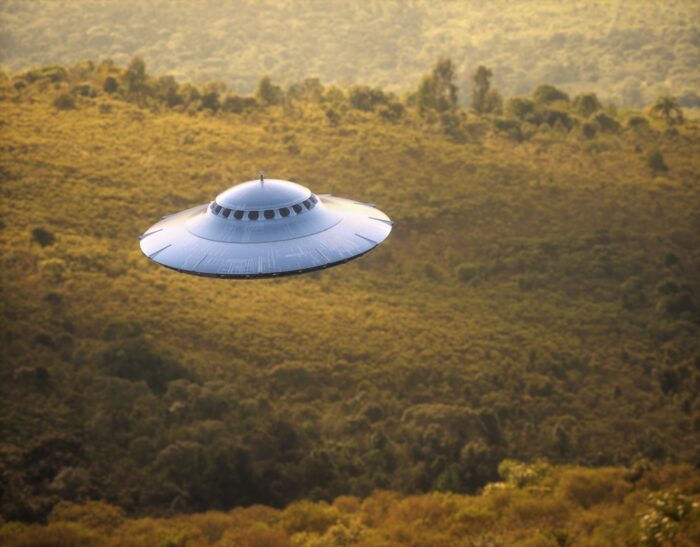
The Cryptoterrestrial Hypothesis
The Harvard team discusses four possibilities for cryptoterrestrial beings. One theory posits that an advanced ancient human civilization might have survived catastrophic events, such as floods, and continues to exist secretly. Another suggests that a non-human society, evolving from intelligent dinosaurs or ape-like hominids, could dwell underground.
A third theory proposes that aliens might have traveled from the moon or other places and hidden themselves among us. Lastly, the "magical cryptoterrestrials" theory describes beings like "earthbound angels" with magical relationships with humans, akin to folklore creatures like fairies and elves, though this idea is often dismissed due to its perceived oddity.
The authors clarify that this paper is a speculative thought piece reflecting their own interests and ideas. They emphasize that they believe their suggestions to be highly unlikely but stress that they still merit future scientific investigation.
It should be noted that the lead author, Dr. Tim Lomas, also sits on the editorial board of Philosophy and Cosmology and has recently published a similar theoretical paper in the journal. Lomas is a psychologist with a background in well-being research, raising questions about how much credence this paper may garner among the wider scientific community.
While these ideas may seem implausible and are likely to face skepticism from many, the authors argue that the mysterious nature of some UAP incidents warrants serious consideration. The Harvard team calls for an open-minded approach, emphasizing the importance of exploring all possible explanations.
They don’t make them like they used to — at all.
It can take natural diamonds over three billion years to grow, but researchers in a South Korean lab have successfully fabricated the precious stones in just 15 minutes.
The equipment they used didn’t rely on time-tested requirements for lab-grown diamonds like higher atmospheric pressure or starter stones, so the breakthrough could change the game.
In nature, diamonds form in geologic crucibles where pressure can be 50,000 times higher than at sea level. Temperatures soar to over 1,500˚C. If the precious stones ever make it through the 2,900km-thick mantle to the crust, they can only be had through arduous, extractive mining. The process can take anywhere from 1 to 3.3 billion years, from formation to extraction.
Of course, there’s an incentive to speed up the process. Seventeen percent of all diamonds on the global market are lab-grown, CNN reported, and the industry has expanded from $1 billion in 2016 to over $12 billion in 2022.

Labs synthesize diamonds by (roughly) reproducing the same natural conditions in which the stones form. Technicians place a small starter (or seed) diamond in a chamber, then crank up the heat and pressure. They introduce liquid metal, such as iron, with carbon dissolved inside. The carbon separates from the metal under the intense forces, then gathers around the seed diamond to begin forming.
It’s called high-pressure and high-temperature (HPHT) and it produces about 99% of all lab-grown diamonds. But it comes with limitations. It’s a challenge to maintain the extreme heat and pressure, and it can take weeks to form an average diamond as big as a wooden match head.
And even with other fabrication methods, like chemical vapor deposition, you still need a seed diamond to start.
Not anymore. Rodney Ruoff, a physical chemist at the Institute for Basic Science in South Korea, helped pioneer a new lab technique for growing diamonds in minutes with homemade equipment.
Published April 24 in the journal Nature, the team’s findings describe a nine-liter chamber loaded with the element gallium. Once you flip the switch, it’s ready in 15 minutes. It can produce diamonds 15 minutes after that.
Rouff’s team tested several metal and gas cocktails inside the chamber on a hunt for efficiency. They determined gallium, an obscure metal that liquefies at just 30˚C, was a good catalyst. Unrelated research showed it could create methane as a byproduct, then cause graphene to form from the gas, according to LiveScience.
The rapid feedback loop then helped them determine that a gallium-nickel-iron-silicon mixture provided the best results.
They’re not sure yet, but the researchers think the silicon acts as a seed for crystallization. Carbon deposits onto it from catalytically-produced methane gas.
The technique uses a lower temperature (only 1,025˚C) than HPHT or any other known way to grow diamonds and requires no added atmospheric pressure.
Its one limitation — it can only produce tiny stones. Rouff’s team only managed to coax diamonds hundreds of thousands of times smaller than HPHT examples.

Diamond miners are safe for now. The new stones are too small for jewelry or any other commercial purpose. But that may not always be the case. Rouff began his research over a decade ago, and his outside-the-box thinking solved a problem that could now create rapid progress.
“Growth of diamond in liquid metal at moderate temperature and 1 atm pressure opens many possibilities,” the study said.
There's something spooky happening way out in the desert, on the outskirts of a dusty West Texas town known as Marfa. Since the late 1800s, folks have noticed strange lights flickering on the horizon — lights that can't easily be rationalized as campfires, lanterns, car headlights, reflected moonlight, or any other simple explanation.
The truth probably lies in complex atmospheric phenomena, but that hasn't stopped the town of Marfa (population: just shy of 2,000 souls) from embracing the weirdness. As a former resident of West Texas, trust this journalist when he tells you this — out there in the high desert, you'll take any entertainment you can get your hands on.

The Marfa Lights: early accounts
The Marfa Lights present as glowing orbs, sometimes slightly colored, that twinkle, split, move, merge, and then vanish altogether. They manifest at night between Marfa and Paisano Passes in the valley below West Texas' low and umber Chinati Mountains.
According to the Texas State Historical Association, the first known accounts of the Marfa Lights spring from a young cowpoke named Robert Reed Ellison. The cowboy was working cattle through Paisano Pass when he caught a glimpse of the lights. He went to investigate, thinking they might be Apache campfires. Neither Ellison nor local settlers found traces of a campfire, however.
The Apache people were famously crafty desert travelers, so if the legend stopped there, we could just assume Ellison and his friends weren't astute enough to discover the campfires. But accounts of the lights continued popping up.
No good explanation
Local couple Joe and Sally Humphreys also noticed the lights in 1885, again with no good explanation for their cause.
And people have been seeing them ever since. During World War 1, locals worried the lights might be signals foretelling a possible German invasion up through Mexico. During World War II, trainee pilots from a nearby Air Force base scouted the passes from the air, searching for a source in vain.
Of course, in the grand Texan tradition, it can be hard to separate the truth from tall tales. Mrs. W. T. Giddings, a Marfa local, grew up observing the lights. Her father claimed the phenomena saved his life when they led him to the shelter of a cave during a rare West Texas blizzard.
Likely? Probably not. But it makes a good story — once which Marfa has capitalized on in recent years. It won't surprise any student of American culture to know that Marfa has a yearly festival celebrating the lights, one that attracts lovers of mystery from all over the globe.
A surprising resurrection
Marfa sprang up as a water stop along the railroad in the 1880s. Once steam locomotives went the way of the dinosaurs, the town went into decline. But in the 1970s, a minimalist art scene surprisingly took hold, and now the dusty little settlement attracts modern art lovers from all over the world.
One of the more bizarre installations is a freestanding building designed to look like a Prada store, sitting one scant mile outside of town.

A thriving cultural scene is all well and good, but it's Marfa's original attraction — those flickering lights — that still has a hold on the imagination of a certain type of road-tripping American. In 2002, the town built a Marfa Lights viewing area on the side of the highway, complete with the type of low, red illumination normally seen in dark sky parks.

Possible explanations
The easiest way to explain the Marfa Lights (other than Apache campfires) is as headlights from passing vehicles traveling on a nearby highway. In 2004, students from the University of Texas at Dallas spent four days observing the lights and proved that the phenomena they witnessed were indeed the result of passing cars.
In 2008, another group from the University of Texas captured the lights using spectroscopic instrumentation over a 20-night period and reached the same conclusion.
But 20 nights in the desert is a tiny slice of the Lights' hundred-plus-year history. And the trouble with this explanation is that it doesn't account for the fact that the Marfa Lights were first observed long before cars made it to that part of West Texas.
Internet debunker Brian Dunning thinks he has an answer that reconciles the issue. In a podcast published in 2007, Dunning points out that there aren't any primary written sources confirming the early accounts of Ellison and others — just the second-hand stories of Ellison's descendants from a period that post-dates automobiles.
The lights' strange behavior is unsatisfying, but it probably boils down to the same science that explains fairy lights around the world: atmospheric distortion.
Dunning posits that headlights from cars are being distorted by an effect known as a "superior mirage," where temperature differences in layers of the atmosphere caused by Marfa's climate and elevation (1,427m) can make images appear to hover above the horizon.
The lack of primary historical evidence combined with a modern understanding of physics and weather science is enough explanation for most skeptics.
Room for wonder
But other minds, just as bright, offer different takes — and uncertainty. Retired aerospace engineer James Bunnell told the Houston Chronicle he thinks the Lights result from piezoelectric charges produced by minerals just under the desert surface.
Meanwhile, Texas State University engineering professor Karl Stephen told the paper that he was unable to explain the phenomenon.
"It may be geological activity that creates electrical activity, but it's all speculation at this point," Stephan said. "There are no proven facts."
That's good news for those who appreciate sweet, chocolatey chunks of mystery liberally sprinkled into the pancake batter of our hard science.
So, if you ever happen to be traveling through West Texas, consider a detour to Marfa to get some eyeballs on the Lights. You won't regret it — particularly as it's virtually the only thing to do for hundreds of miles in any direction.
If you think it's rough out there for single folks, consider the case of E. woodii. Scientists have only ever discovered one example of the plant species — a male eking out a lonely existence in South Africa's Ngoye Forest, in 1895.
That specimen was quickly moved to a botanical garden, where botanists have managed to propagate it over the last century. But now researchers using modern tools are scouring the forest for a potential mate. Think of it as Tinder for, well, tinder.

“This plant is, as far as we know, extinct in the wild. I was very inspired by the story of the E. woodii, it mirrors a classic tale of unrequited love. I’m hopeful there is a female out there somewhere, after all, there must have been at one time," said Dr. Laura Cinti, a research fellow at the University of Southampton’s Winchester School of Art, in a statement.
Cinti is leading a team of scientists using drones and artificial intelligence (AI) to scour the dense 4,000-hectare Ngoye Forest for a possible mate for the plant.
"It would be amazing to bring this plant so close to extinction back through natural reproduction," she continued.
A long, lonely, lonely, lonely, lonely, time
E. woodii is a cycad, the oldest seed-bearing type of plant still living on the planet today. Cycads first arrived on the scene 300 million years ago, meaning they've survived the extinction event that killed the dinosaurs, the Industrial Revolution, and the 1980s, among other planetary calamities.
All cycads are rare. In fact, they are the most endangered organisms on Earth, and are kept in cages in botanical gardens so that thieves don't sell them on the black market. But E. woodii is rare even by cycad standards.
And after drones took tens of thousands of multispectral images in 2022 without turning up another example of the species, Cinti and her team turned to AI to help shorten the search.
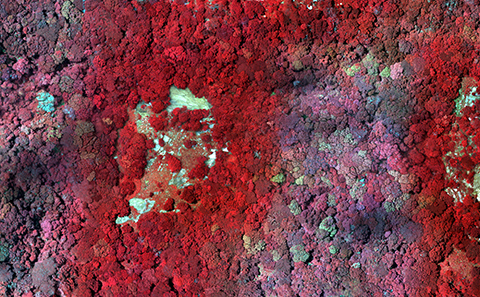
“With the AI, we are using an image recognition algorithm in order to recognize plants by shape,” she said “We generated images of plants and put them in different ecological settings to train the model to recognize them.”
And if that doesn't work? The team has a plan B — change E. woodii's sex.
“There have been reports of sex change in other cycad species due to sudden environmental changes such as temperature, so we are hopeful we can induce sex change in the E. woodii too," Cinti explained.
Good luck, E. woodii. We're all — ahem — rooting for you.
Undergrads from the Massachusetts Institute of Technology (MIT) have discovered three of the oldest stars in the universe. All of them sit within the "halo" of the Milky Way. That's the circle of stars beyond our galaxy's main, visible section.
The unlikely discovery stemmed from an undergraduate class in 2022. The students had signed up for the Observational Stellar Archaeology course. They learned various techniques used to study ancient stars, then received a homework assignment: Apply these techniques to stars that had never been analyzed.
They identified the three stars that are the basis of the newly published study. Many of the undergraduates are listed as co-authors.
“This class immediately put us at the frontier of research in astrophysics,” said Hillary Andales, co-author and one of the students.
Astrophysicist Anna Frebel led the study and gave the students the data that she herself had collected using the Magellan-Clay Telescope at Chile's Las Campanas Observatory. The group began looking for stars with low amounts of strontium and barium.
Rare elements
These two elements were not abundant after the Big Bang. At that time, the universe consisted mainly of hydrogen and helium. The spectra of the stars revealed which of them had low levels of strontium and barium.
Research based on a classroom exercise in MIT Physics course 8.S30 (Observational Stellar Archaeology) led to the discovery of three of the universe’s oldest stars. https://t.co/1P2TLz2smc pic.twitter.com/LLT8pWsvSp
— Massachusetts Institute of Technology (MIT) (@MIT) May 14, 2024
The three stars in the study were discovered in 2013, but no one had analyzed their spectra. All three held very low amounts of strontium, barium, and iron, and came into existence between 12 and 13 billion years ago. The universe is considered 13.7 billion years old.
All of the stars are Small Accreted Stellar System stars (SASS). This means they were once part of their own galaxies, but the Milky Way has now absorbed these older, smaller entities.
The other clue that these stars were both ancient and from other galaxies was their movement. In general, most stars in the main disk of a galaxy move in the same direction. These three were going the wrong way. This suggests that their old galaxies were absorbed into the Milky Way at different angles, and the stars have continued on their original trajectories.
Wrong way, gang
“The only way you can have stars going the wrong way from the rest of the gang is if you threw them in the wrong way,” said Frebel.
Frebel is certain that there are more ancient, undiscovered stars in that region of space.
“These oldest stars should definitely be there, given what we know of galaxy formation," she said in a statement. "They are part of our cosmic family tree. And we now have a new way to find them.”
Does the smell of human blood really whip sharks into a feeding frenzy? And if so, how much blood does it take?
These are the questions that plagued Mark Rober. You may know Rober from his viral squirrel obstacle course videos. But don't let the YouTuber's affable nature and click-friendly content fool you.

The formally trained mechanical engineer spent the better part of a decade at NASA's Jet Propulsion Laboratory working on the Curiosity Rover, then jumped ship to Apple for a few years as a mechanical engineer on a product design team.
So the man knows his business. And with the help of the Discovery Channel, he set about designing and implementing a scientifically rigorous experiment to test what the movies would have us believe.

The experiment (part one)
First, Rober designed and built four surfboard-mounted pumps and filled them with four liquids: cow's blood, urine, fish oil, and seawater (as a control). The pumps squirted two liters of each liquid into shark-infested waters over the course of an hour while cameras rolled and the crew looked on.

Forty-five minutes in, it seemed the sharks were more interested in the fish oil than anything else, and that only slightly. But with 15 minutes left in the experiment, the sharks started following the diffused blood to the surfboard.
By the end of the hour, 41 sharks had visited the blood board, with only two visiting the fish oil board and zero visiting the sea water and urine boards.

The results are interesting because it took a lot of blood in the water to attract the sharks (after all, losing two liters of blood will kill you, no matter what the sharks do). And the lack of interest in the urine board appears to put the common surfer lore of "don't pee in your wetsuit because it will attract sharks" to rest.

But Rober wasn't satisfied with one aspect of his experiment: the cow's blood. What he really wanted to test was how the sharks would respond to human blood.
The experiment (part two)
Availing himself freely of the Discovery Channel's massive budget, Rober made some calls and had a phlebotomist transferred out to the team's boat, where members of the ship's crew gamely offered up their vital bodily fluids.
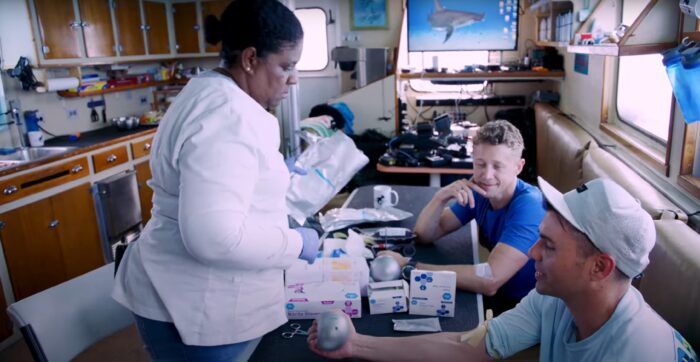
Then Rober ran the experiment again, changing the parameters to include three boards — a seawater control board, a board pumping blood slowly (one drop a minute), and a board pumping blood quickly (one drop every four seconds).
What happened next? You'll have to watch the short video (15 minutes) to find out, but you might be surprised by the results. Rober certainly was!
The jararaca is one of South America's most venomous snakes, so you probably want to avoid stepping on one at all costs. Unless you're Joao Miguel Alves-Nunes, a biologist at Brazil's Butantan Institute. In which case, your approach to studying jararacas' biting behavior is to step on them (gently) 40,000 times.
"The best way to do this research is to put snakes and a human together. In this case, the human was me," the bold researcher told Science. "We put the snakes inside a ring on the floor of our lab until they got used to it, then I stepped in wearing special protective boots.
"I stepped close to the snake and also lightly on top of it. But I didn’t put my whole weight on my foot, so I did not hurt the snakes. I tested 116 animals and stepped 30 times on every animal, totaling 40,480 steps."

Bite only when stepped on?
Alves-Nunes wanted to test the common assumption that jararacas only bite when stepped on, a bit of local wisdom that eventually proved false. The scientist eventually found that many of the animals bit when he got close to them and that the snakes became more aggressive in warmer temperatures.
He also discovered that smaller specimens, especially younger females, were more likely to bite. Finally, snakes were also more likely to be aggressive during the day. Alves-Nunes published his research in the journal Scientific Reports.
The scientist's protective equipment consisted of sturdy, knee-high leather boots reinforced with protective foam. During the 40,000 tests, not a single jararaca bite penetrated. Unfortunately, a side test involving a rattlesnake bite yielded different results — the snake's powerful chomp made it through the boot.

He's allergic both to venom and antivenom
As Alves-Nunes tells it, the Butantan Institute is a leader in snake bite treatments, and he was immediately well cared for. But in a case of cosmically bad luck for a scientist who works with deadly snakes, Alves-Nunes discovered he was allergic to both rattlesnake venom and the antivenom used to treat his wound. He had to take a 15-day medical leave.
Still, the researcher was undaunted. After reinforcing his boots, he was back in the ring with jararacas.
"The hard part is that after my accident, some people started to see me as reckless. And that is not true," insisted Alves-Nunes.
"I ran these experiments with a solid scientific base, followed the same protocol thousands of times, and had only one accident. And from that accident, a research question was born: I am now comparing the bite strength of rattlesnakes and jararacas and how resistant different materials and shoes are to them."
Every now and then for the last 50 years, an enormous hole opens up in the Antarctic sea ice. And by enormous, we mean truly enormous — the feature in question was twice the size of Wales last time it appeared in 2016 and 2017. But despite its gigantic nature, scientists have long been stumped regarding how, exactly, the thing forms.
The phenomenon, known as the Maud Rise polynya, occurs over the Antarctic winter and was first observed by scientists in 1973. A polynya is just a fancy word for an area of open water surrounded by sea ice. Animals in both the Arctic and Antarctic use them as feeding grounds.
They are fairly common in coastal areas, but far out to sea like the Maud Rise polynya — that's much rarer. That unique location, combined with the Maud Rise polynya's gigantic size, have puzzled scientists for over five decades.
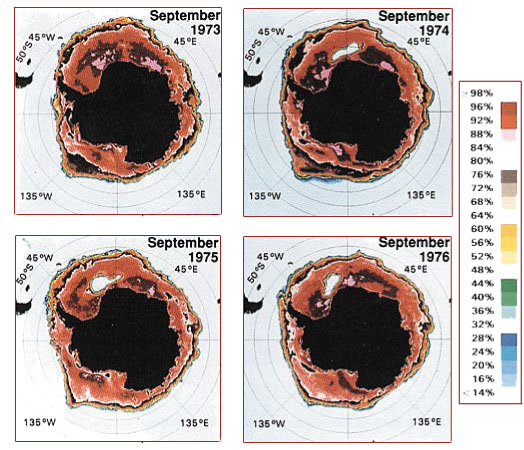
Now, a team comprising scientists from the University of Southampton, the University of Gothenburg, and the University of California San Diego, thinks it has cracked the puzzle.
The solution? A combination of conditions specific to the Maud Rise polynya's unique location.
A little help from our friends
In 2016 and 17, a current circulating through the Weddell Sea, where the polynya formed, gained strength. That led to an updraft of warm, salty water.
"This upwelling helps to explain how the sea ice might melt. But as sea ice melts, this leads to a freshening of the surface water, which should in turn put a stop to the mixing," Fabien Roquet, a Professor in Physical Oceanography at the University of Gothenburg, noted in a press release. “So, another process must be happening for the polynya to persist. There must be an additional input of salt from somewhere.”
To find the missing link in the chain, the team turned to a combination of remote sensors, computational models, and — this journalist's all-time favorite data collection method — marine mammals wearing sensor hats.
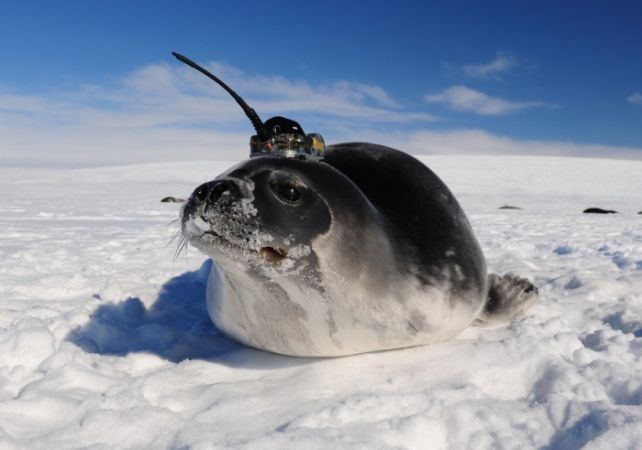
With help from computers and our blubbery friends with their adorable little chapeaus, the team discovered that a process called "Ekman transport" was moving water into the area at a 90-degree angle to the direction of the wind, providing the additional salt needed.
Missing ingredient found
“Ekman transport was the essential missing ingredient necessary to increase the balance of salt and sustain the mixing of salt and heat towards the surface water,” co-author Professor Alberto Naveira Garabato, University of Southampton, said.
All this is pretty cool until you remember that melting Antarctic ice is not necessarily what the world needs at the moment.
"The imprint of polynyas can remain in the water for multiple years after they’ve formed. They can change how water moves around and how currents carry heat toward the continent," said Professor Sarah Gille, a co-author of the paper from the University of California San Diego. "The dense waters that form here can spread across the global ocean."
“For the first time since observations began in the 1970s, there’s a negative trend in sea ice in the Southern Ocean, which began around 2016. Before then it had remained somewhat stable," she continued.
Since that's a bit of a downer, we'll leave you with another photo of an elephant seal wearing a sensor hat. You know. For science.
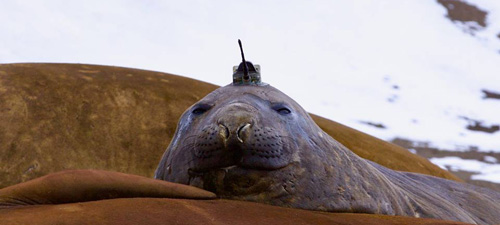
It turns out that Mount Erebus spews a fortune in gold across Antarctica — $2.1 million worth of it per year, according to reports.
You’d struggle to pan it out of the Antarctic snow, though. Tiny particles of the volcanized gold disperse from Erebus up to 1,000 kilometers across Ross Island. And tiny means tiny: at around 60 microns, the gold flecks are much smaller than the thickness of a human hair.
Still, Erebus disgorges 80 grams of the precious metal every day — scattering $6,000 into the frozen landscape.
It’s one oddity that helps place Erebus among the planet’s most distinct volcanoes. The formation, sharing the name with the Greek god of darkness, bursts from the Ross Sea to a smoldering 3,794m peak. Its active caldera features a bubbling, fluctuating lava lake that has erupted constantly since 1972.
Its riches are likely unextractable. And its labyrinthine gas vents may help researchers understand life on other planets.
View this post on Instagram
Fountain of gold — and 'lava bombs'
Philip Kyle, Professor Emeritus at the New Mexico Institute of Mining and Technology, has logged more time on Mount Erebus than anyone on Earth. Kyle’s 50+ expeditions to the world’s southernmost volcano have helped produce totemic research. On one effort to access the inner crater for sampling, an explosive eruption launched lava bombs several hundred meters skyward and likely cost him a “walnut-sized” piece of his brain.
But Kyle persisted to become a de facto Erebus ambassador. He explained to BBC Earth Science how the lake exists as a conduit to the volcano’s sub-tectonic guts.
“Erebus is a living volcano because it breathes. By looking at the lava lake, we’re actually looking inside the volcano. It’s like having a window in your chest so you could see your heart,” Kyle described.
Veins of exposed magma on the surface can reach 1,000˚C. But cooler areas can harbor gold particles, which travel upward from deep subterranean deposits in many volcanic events. Most other volcanoes melt these particles during eruptions — but Erebus is different.
Frigid air could explain why. Only seven other volcanoes on Earth support lava lakes. The coldest one is Mount Michael, an 843m outcrop in the South Sandwich Islands. The South Sandwiches can be cold, but not like Erebus. Nearby McMurdo station — only a few meters above sea level — can reach -50˚C.
It’s thought that when the bracing Antarctic air skims the scorching surface of Erebus’ lava lake, the conditions for solid gold materialize.
View this post on Instagram
Keys to the cosmos
Erebus’ perpetual off-gassing doesn’t just disperse precious metals. It also creates networks of ice caves, which provide access into its catacomb-like vents.
Fumarolic ice towers, which form when volcanic gases freeze solid at the surface, indicate entry points.
“When you just go there for the first time, you don’t realize that virtually under every ice tower is a big ice cave system,” Kyle said in the BBC video, adding that “literally hundreds” of the structures exist on Erebus.
Far-fetched enterprises to mine gold from lava lakes date to early colonial efforts. Friar Blas del Castillo earned mixed credit as an early volcanologist for his attempt to extract silver and gold from Nicaragua’s Masaya Volcano in the 16th century. Castillo famously descended into the caldera inside a basket with dubious prospecting tools: a hammer, a flask of wine, and a wooden cross. (The work was misguided — the caldera yielded no trace of precious metals.)
Even if it were feasible to collect the gold microparticles from the expansive Mount Erebus plain, the haul would be contraband in about two-thirds of the world. The Antarctic Treaty prohibits “any activity relating to mineral resources other than scientific research.”
But Erebus’ value could still be astronomical — literally. Its gas vents harbor microbial communities unknown anywhere else on Earth. Temperatures can vary up to 60˚C just 10 cm away from the vent surfaces. The life forms that flourish in this outlandish ecosystem could teach us what thrives in the final frontier.
View this post on Instagram
“Erebus is such an extreme environment — this could provide insight into the possibility of life on a place like Mars,” Kyle said. “There’s lots of new technology, so it’s time for the young studs to come along and do something new and interesting.”
We know a lot about the origins of the universe and how biology works in our little corner of it. But one thing we still don't know for sure is how life originated on good old Terra Firma in the first place. Solid theories abound, but one that resurfaces time and again is panspermia — the idea that life hitched a ride here via space rocks from somewhere else entirely.
Panspermia isn't universally embraced by the people who study such things, but it's also not entirely discounted. The latest foray into the world of how, exactly, Earth went from a barren rock to the planet that produced Beyoncé is a paper recently released by astronomers Harrison B. Smith and Lana Sinapayen.
In the as-yet-un-peer-reviewed paper, the scientists propose a new method of data analysis that could help us determine if life is bouncing around from planet to planet out there in the wide universe. By extension, it might shed a little light on our own origins.
So, how do Smith and Sinapayen approach the problem? By tackling an inherent issue in the search for extraterrestrial life — how do we even know what we're looking for?
Alien life may not breathe oxygen or use carbon
"A fundamental goal of astrobiology is to detect life outside of Earth," the two astronomers write in the paper's abstract. "This proves to be an exceptional challenge outside of our solar system, where strong assumptions must be made about how life would manifest and interact with its planet. Such assumptions are required because of the lack of a consensus theory of living systems."
Translation? Other life out there needn't look like hairless apes downloading meditation apps onto their smartphones. It needn't be oxygen-breathing, symmetrical, or divided into vertebrates and invertebrates.
It needn't even be carbon-based! Because we have no idea what other life might look like, we have no idea what to look for. Smith and Sinapayen indirectly argue that this includes searching for warm, rocky planets with shallow oceans.

The search for Earth doubles
But, the pair explains, if meteors were carrying the seeds of life from one planet to another, you could theoretically expect similar changes wrought by that life on all the planets it touches.
For instance, if Earth gets whacked by one of the many, many asteroids that have the potential to do so without us ever seeing it coming, you could reasonably expect some of the resulting debris to carry microbes from our planet out into the solar system and beyond. If those rocks found the right kind of planets, over millions and billions of years, we might expect those planets to look somewhat like Earth — a higher-than-average amount of oxygen in the atmosphere, for instance.
So Smith and Singapayen are proposing a new statistical model that compares traits of planets that are far enough away from each other that they shouldn't be similar but close enough that panspermia could theoretically have occurred. Should the model turn up any similarities, those planetary groupings could have come about from life hitching a ride on some rocky spaceship.
It's an elegant idea because it embraces our lack of understanding rather than treating it as a hindrance.
But like all the best science, such ideas need an ever-expanding data set to work. Luckily, our ability to peer into the cosmos keeps getting better and better.
When scientists discovered the asteroid Kamo'oalewa in 2016, they almost immediately suspected it might have once been a part of the Moon. It's a sound theory — many of Kamo'oalewa's properties (its density, coloration, and orbit, among others) all pointed to an origin closer to home than many known asteroids. But proving it? Well, that's another issue entirely.
But now astronomer Yifei Jiao, leading a team from Tsinghua University in China, thinks he's found a way. In a paper recently published in the journal Nature, Jiao and his colleagues have identified the Giordano Bruno, located on the far side of the moon, as the probable origin of the 40-to-100-meter diameter quasi-satellite.
In the astronomical version of assembling a jigsaw puzzle, the researchers used "numerical simulations to demonstrate that Kamo'oalewa’s physical and orbital properties are compatible with a fragment from a crater larger than 10–20 km formed on the Moon in the last few million years," according to the paper's abstract.
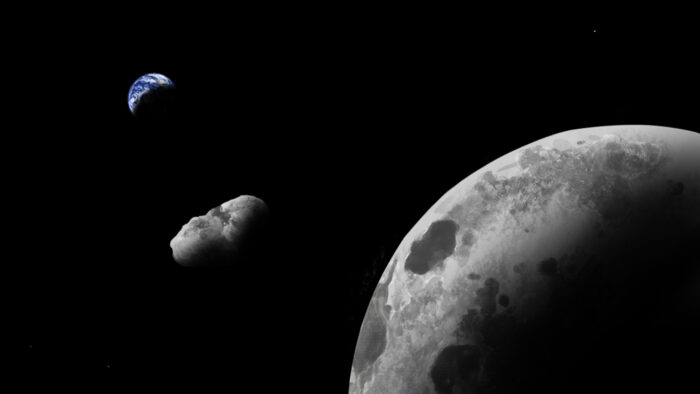
Second Moon
Their most likely suspect is Giordano Bruno. The logic they used to reach that conclusion is fairly straightforward. Scientists know that Kamo'oalewa -- sometimes known as our "second Moon" -- is less than 100 million years old because near-Earth asteroids like the one in question don't tend to stick around our neck of the woods very long. They also haven't observed any debris that would have formed when Kamo'oalewa was gouged out of the Moon, meaning the asteroid is older than 10 million years.
So they searched for a Moon crater that matched those ages and was large enough to have once held 100 meters of solid stone. Although there were tens of options, Giordano Bruno was the best match.
A final piece of evidence is the probable composition of the crater walls, which (scientists think) matches Kamo'oalewa's composition. Combining all the above, Jiao and his team concluded that "Giordano Bruno is the only possible source crater satisfying the criterion."
The best part about all this is that the scientific community and science-loving readers don't have to wait long to get a final confirmation. Scientists already have meteorites on Earth that came from the Giordano Bruno crater. And the Chinese space agency plans to launch the Tianwen-2 next year, an unmanned mission to collect a sample from Kamo'oalewa and drop it back on Earth. Comparing the two samples will be relatively easy.
In an experiment out of The Terminator, scientists released a hoard of 20 cyborg cockroaches into a sandy artificial desert. Each live insect wore a tiny computer backpack that could control and steer them across the terrain.
Each backpack consisted of a battery, mini-computer, and an antenna. The antenna allowed the scientists to communicate with the Madagascar hissing roaches and prompted them to move as a swarm.
The high-tech backpacks attached to the cerci (sensory organs) of the insects. The electrodes applied a current to the left or right cercus. The cockroach then turned in that direction.
This has been done before with insects, but the problem has always been getting them to move as a group, since most insects vary in their reactions to the input.

Tour guides as models
In overcoming this, the scientists were inspired by human tour guides and the groups that trail behind them. They assigned one of the 20 insects as leader. The others then received a swarm command in which the leader was the target to follow. Only the leader received the final destination, and the rest just followed along behind.
The group successfully made it across the hilly sand and around obstacles. The researchers used a combination of the roaches' own behaviors and navigation instructions from the computer. Using live cockroaches is essential: the computer can control the direction they move, but not the movement of their limbs. It would be incredibly hard to mimic this mechanically.
So while the scientists directed the bugs, the roaches themselves scrambled over the obstacles. When a cockroach accidentally rolled over onto its back, the rest of the insects in the group helped get it back on its feet.
Hirotaka Sato, who worked on the study, told New Scientist that they hope the cockroaches could become bio-robots. These cyborg roaches have many potential uses, including search missions after natural disasters.
The idea would be to carry a group of live cyborg cockroaches to a chosen site inside a larger robot and then release them. They would be able to return to the larger robot to recharge the equipment and feed.
“This research contributes to the domain of swarm robotics and showcases the potential of integrating biological organisms with robotics,” the scientists explained.
In the career of an astronomer, it’s hard to overstate the scale of a recent find by a team at Chile’s Very Large Telescope (VLT).
Pasquale Panuzzo, a research engineer and lead author of the team’s recently released work, certainly didn’t.
“It’s a real unicorn. This is the kind of discovery you make once in your research life,” Panuzzo said in a statement by the European Southern Observatory. “So far, black holes this big have only ever been detected in distant galaxies.”
How big is the Milky Way’s newest known black hole? About 33 times the size of the sun — about 50% bigger than the previous galactic record-holder.
Largest black hole of its kind
Gaia-BH3 is the largest black hole of its kind — one formed from a supernova — in our galaxy. Only Sagittarius A, the gravity vacuum the Milky Way rotates around, is bigger. But unlike Gaia-BH3, it didn't come from a stellar explosion.
An extensive European Space Agency team led by Panuzzo submitted its findings to the journal Astronomy & Astrophysics earlier this month. They detail the colossal structure, which they’ve never properly seen through the VLT or other instruments, but can infer to exist based on the movement of a lone star known to be its companion.
The astronomers said more finds like Gaia-BH3 could await. The black hole orbits a location relatively near Earth, at only 2,000 light years away. Because the companion star’s activity triggered the discovery, the door to others like it is wide open.
The Milky Way hosts around 50 confirmed or suspected black holes. But there could be thousands or millions more, based on how many stars have likely died in the galaxy’s 13.6-billion-year history.
More discoveries to come
The next wave of data from Gaia, the space telescope mapping the Milky Way, could reveal more black holes like Gaia-BH3. It’s slated for early 2025 at the earliest, which partly explains why the current team decided to release its discovery early.
“We took the exceptional step of publishing this paper based on preliminary data ahead of the forthcoming Gaia release because of the unique nature of the discovery,” co-author Elisabetta Caffau said. Now, other astronomers can get a jump start on any opportunities to find similar new black holes.

Titanic as it is in our galaxy, Gaia-BH3 is a blip on the universal radar of black hole size. One supermassive black hole currently careening through space is as big as 20 million suns.
Most people associate circadian rhythms and internal clocks with humans and animals, but plants have them too. And a new study reveals that warming temperatures are disrupting the internal clocks of trees.
The study focused on lenga beech trees, specifically Nothofagus pumilio saplings, which are native to the Andes. Higher temperatures greatly impact the 24 genes that regulate their circadian clock.
Their expression and the amount of proteins these genes code for fluctuate throughout the day. The trees’ circadian clocks adjust their processes to the environmental cycles overt the days and months. In unfamiliarly warm temperatures, these circadian oscillations fall into confusion.
Thermal niche
As the climate changes, the trees' photosynthesis and ability to grow in spring and go dormant in winter struggle because of the affected genes. The accuracy of a tree's internal clock depends on staying under the upper temperature of that individual species' "thermal niche." This upper temperature can even impact a seedling's ability to adapt to change.

The team compared the lenga beech saplings to those of another Nothofagus species, the Nothofagus obliqua. The species are essentially cousins in the tree world. They both grow in Patagonia but at different temperatures and altitudes. N.obliqua naturally grows in warmer temperatures.
In the study, researchers grew the saplings of both species in the same conditions, temperatures more akin to what N.obliqua normally grows in. Only the N.pumilio failed to maintain its normal circadian rhythm.
Even after training the N.pumilo to reset its internal clock in the lab by controlling light cycles, the saplings still struggled. They had lower survival and growth rates than their heat-loving cousins.
Very little is known about the circadian clocks within plants and what processes they regulate. However, the study does show that higher temperatures affect tree growth. If the world climate continues to increase, then the N.pumilio and the Patagonian forest in which it grows are at risk.
Plant physiologist Maria Eriksson, who was not part of the study, told New Scientist that other plants have shown similar effects. For example, changing the temperature has caused chestnut and aspen trees to go dormant out of season. A plant's circadian clock triggers dormancy.
If you project the study onto a larger scale, it suggests that as global temperatures rise, the compositions of forests worldwide could change drastically.
This year, a rare cicada event will take place for the first time in 221 years. Two huge broods of periodical cicadas will burst from the ground at the same time, flooding parts of the U.S. with trillions of the chunky insects. The last time this happened was when Thomas Jefferson was president.
One group of the periodical cicadas, known as brood XIX, emerge from the ground every 13 years. The second group, brood XIII, does this every 17 years. For each brood, this is the length of their juvenile period. The nymphs (juveniles) live underground, feeding on tree root sap. They surface when they reach adulthood for a giant mating event.
While cicadas live in many places around the world, these are annual cicadas. Large and green, they buzz loudly from the treetops on hot summer days. But periodical cicadas only occur in North America. They are smaller, with black bodies and big red eyes.

'Cicada-geddon'
Cicada expert John Cooley calls the rare event "cicada-geddon," because of the plague-like number of insects that suddenly appear. They will emerge at the end of April and mate over the next several weeks. It will be a noisy affair; their buzzing can hit 110 decibels. "Periodical cicadas don't do subtle,” Cooley told Sky News.
The next dual emergence won’t reoccur until 2245.
Most people will not notice the super-abundance. Though the periodical cicadas will emerge across 17 states, both broods overlap only in a few parts of Illinois. Mainly, the 13-year cicada will surface in the southeastern U.S. and its 17-year cousin in the Midwest.
Many have questioned whether the double appearance could lead to interbreeding. Chris Simon, an ecologist with the Periodical Cicada Project, told Live Science, "There will not be a new brood or cycle. Even if the broods were to interbreed, any offspring would be indistinguishable from cicadas that were not hybrids.”
Speaking about the rare occurrence, entomologist Catherine Dana told The Guardian, “I’ve been looking forward to this for many years...This is a natural wonder of the world. You just don’t see this biomass of terrestrial life anywhere else.”
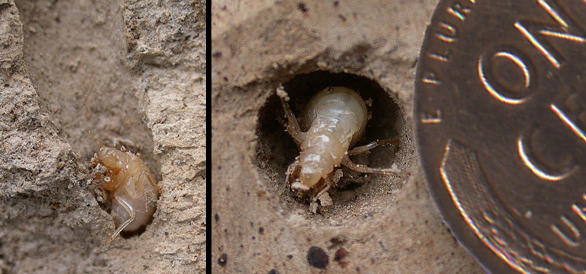
Scientists are unsure why the cicadas have evolved such long juvenile lifecycles underground. The most popular theory is that being out of view for so long before emerging en masse for a giant mating event gives a better chance of survival against predators.
The insects construct exit tunnels up to the surface and clamber out in batches. After shedding their exoskeletons, they climb into trees to mate.
The males make loud shrieking noises to attract a partner. Eventually, the females lay their eggs in the trees. After a few hectic weeks, the adults die and things go quiet again.
About six weeks later, the eggs hatch, although most people won't notice that, since the hatchlings are tiny and inconspicuous, explained Cooley.
The cicadas emerge when the soil temperature reaches 17˚C, and researchers wonder whether the warming climate will eventually affect their cycle.
Is Vostok Island a black hole in the Pacific Ocean? No, but for some migratory birds, it might as well be — there is no escape.
One Redditor instigated a partial internet breakage when he posted a Google Earth screenshot of the island in 2021. The 22-hectare speck, which is part of the property of Kiribati, appears on Google Maps as virtually black.
But it’s not an underworld portal or a secret military base. The black appearance has been widely reported as an optical illusion, caused by Vostok’s dense forest when photographed from low orbit.
View this post on Instagram
Still, the uninhabited outcrop isn’t your everyday coral dot in the south Pacific. That’s because it’s home to a certain type of forest that can fatally trap birds like a huge, sticky net.
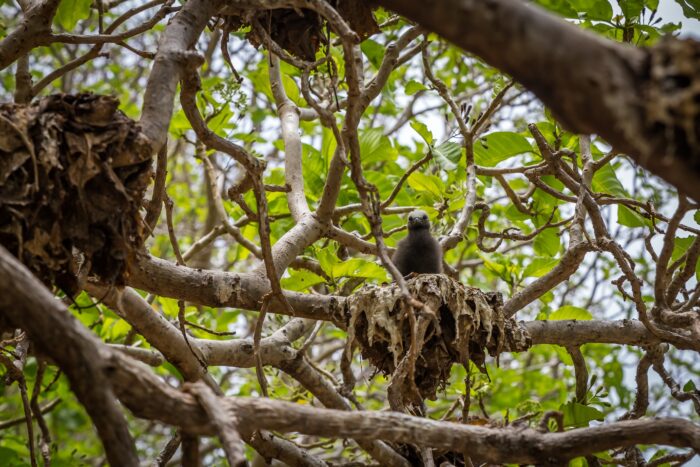
The pisonia tree grows in close copses at heights up to 30 meters. According to JSTOR, it’s not uncommon for groves of pisonias to outcompete everything else trying to grow around and under it.

None of this would be a particular problem for tree-dwelling birds if pisonias didn’t also produce long, velcro-like seeds that secrete a gooey membrane.
For nesting colonies of seabirds like white terns, lesser noddies, and red-footed boobies, outcomes can be grim. If even a few pisonia seeds stick to a bird, they can ground it. Restricted from flight, the bird can starve to death. Birds can even get “mummified” in the canopy if they run into an especially thick spot.
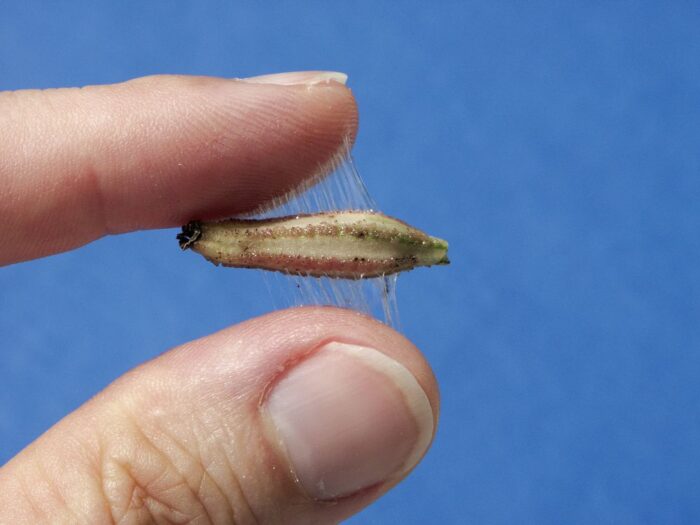
Researchers look at the grisly situation as a zero-sum evolutionary game. The pisonias need to spread to other islands to expand their range. The birds need somewhere to nest. Birds don’t eat pisonia seeds, and seeds attached to carcasses in studies didn’t germinate any better than normally-planted ones.
At the same time, the trees apparently don’t kill the birds at a high enough rate to trigger an adaptation.
Vostok Island may not be a black hole — but it certainly is a standoff.
There are a lot of fairytales about the Moon, and they’re all pretty far-fetched. There’s a man up there, possibly marooned by god as a punishment for gathering sticks on the Sabbath. It’s made of cheese; it’s hollow; it’s a spacecraft. Humans never set foot on it.
And so on. The latest lunar theory sounds as wacky as any other — but according to the planetary scientists who developed it, it’s more than plausible.
The Moon once turned inside out, according to a model from Weigang Liang and Adrien Broquet of the University of Arizona’s Lunar and Planetary Sciences Lab. It happened when a giant primordial ocean of magma crystallized and sank below the surface, trading places with the upwelling mantle.

Mantle flip-flop
It’s called lunar mantle overturn, and it’s been under study for decades. Researchers first noticed discrepancies on the lunar surface: deposits of certain metals and dense volcanic rocks in unexpected places.
Until now, Liang and Broquet pointed out, nobody has produced physical evidence that links the surface conditions to the lunar flip-flop.
“Despite abundant geochemical evidence, there has been a lack of physical evidence on the nature of the overturn,” their study, published in Nature Geoscience, reads.
The Moon’s near side today is a hardened soup of metallic and volcanic deposits of various densities. There’s the KREEP Terrane, which contains potassium, rare earth elements, and phosphorus. These overlap with the lunar maria — the visible dark blotches on the satellite.
Early astronomers mistook these for actual seas. (Mare is Latin for "sea.") They're darker because of their iron content, thanks to the presence of a mineral called ilmenite, a titanium-iron mix.
The subterranean materials -- olivine, orthopyroxene and clinopyroxene -- are less dense. Why didn’t the ilmenite just sink into the mantle and become bedrock for these lighter-weight materials?
A 'critical record' preserved
Liang and Broquet suggested that dense ilmenite formed a layer between the crust and mantle as the liquid magma ocean of the young Moon cooled and crystallized, according to ScienceAlert.

The ilmenite may have resurfaced later through reheating. This and a giant impact could have affected the Moon’s gravity and relayered its composition so that the mantle sat on top.
Liang and Broquet’s models of lunar mantle overturn indicated gravitational anomalies. They used readings from two NASA spacecraft that have extensively mapped the lunar surface to compare the models with reality.
The models matched what these spacecraft observed. It confirms the lunar mantle's overturn and dates it to at least 4.22 billion years ago.
“The lunar gravity field preserves a critical record of the overturn of the lunar mantle that has been widely postulated to be one of the defining events in early lunar history, but the details have until now remained unknown,” the researchers concluded.
Even the Earth has its rare spots where the mantle -- the thick middle layer below the thin but familiar crust -- has percolated to the surface, such as on Macquarie Island in Tasmania and the Tablelands in Canada's Gros Morne National Park. However, these areas are small compared to the mantle's significant presence on the Moon due to that ancient flip-flop.
Parasitologists in China have discovered one of the world’s earliest tapeworm fossils, and might have their hands on the only fossilized tapeworm remains that aren't traces from another animal.
The resin-entrapped worm represents one of the oldest families of parasites still alive today and dates to the Cretaceous Period, 100 million years ago.
The Chinese Academy of Sciences team found the sample in Kachin amber, native to the Hukawng Valley in northern Myanmar. The worm appears to have taken root in the intestines of a prehistoric shark or ray, then become dislodged after the host turned into a dinosaur dinner.
The specimen not only looks like a breakthrough in parasite evolutionary study — it’s also stunningly complete. Microstructures like hooked tentacles the animal used for latching onto and feeding on hosts are still intact.
A rare find
It’s rare to find detailed fossils of flatworms or tapeworms because, well, their bodies are very soft. Wang Bo, the study's lead researcher, explained the significance.
"The fossil record of tapeworms is extremely sparse due to their soft tissues,” Wang told Phys.org, “which greatly hampers our understanding of their early evolution.
Wang went on to verify that his team "reported the first body fossil of a tapeworm."
With such a tidy discovery, there’s one big step left for the researchers to take — plan to start a Jurassic Park.
Theoretically, genetic engineers could extract the DNA of the fossilized worm’s hosts. Most tapeworms need two or more hosts to complete a full life cycle, so there’s even a possibility of a two-for-one special.
The results of such conjectural engineering could be a real grab-bag, though. Tapeworms infect all major groups of vertebrates, including humans and livestock.
But the research team doesn’t seem concerned about whether it could give the Anthropocene its first T-Rex, or just another crocodile, shark, or ray — also alive during the Cretaceous. Instead, its authors are focused on what they can learn from the finding itself.
"Our results show that amber can preserve the internal structure of helminths such as tapeworms on geologic time scales," Wang told Phys.org. It “highlights the importance of amber research in paleoparasitology.”
In medieval London, horses acted as the vehicular currency of daily life — and thoroughbreds were like pricey exotics.
From the mythical steeds of King Arthur to real, fancy imports like King John’s 100 Flemish stallions, selectively bred horses paced the market. These prized animals came into the possession of knights and nobles for jousting, parading, or purely as status symbols.
But how, and from where? Details remained murky until a recent study, published in the journal Science Advances, keyed in on several 14th- to 16th-century animals’ teeth.
Researchers from the University of Exeter led the work, which focused on a group of horses discovered by accident during construction in the City of Westminster. Found in the 1990s, the site constituted a Tudor cemetery for exotic animals. It was a promising find from the get-go — Westminster was one of the most prolific jousting locations in medieval England, famously hosting King Henry VIII’s 1511 tournament.

Elite horse-trading
In all, over 70 horses emerged from the site. The recent research examined 22 molars from 15 of them. The team first drilled dental cores from the teeth, then analyzed enamel strontium, oxygen, and carbon isotopes to learn more about the horses’ early lives. With clues about the medieval thoroughbred trade as a target, they sought information about each horse’s birthplace, diet, and mobility.
“Our results provide direct and unprecedented evidence for a variety of horse...trading practices in the Middle Ages and highlight the importance of international trade in high-quality horses for medieval London elites,” the study said.
They found evidence consistent with animals raised on royal stud farms (descendants of which still exist). At these stables, trainers reared young horses for two to three years before either training them for a life on the property or selling them to the highest bidder.
The team found the horses from all over Europe: Scandinavia, the Bohemian Highlands, the Alps, and Scotland, rather than famous hotspots like Andalusia or the Arabian peninsula. The researchers correlated various isotopes in the specimens’ teeth with compounds found in drinking water around Europe.
“Representatives for the King and other medieval London elites were scouring horse trading markets across Europe seeking out the best quality horses they could find and bringing them to London,” Dr. Alex Pryor, the study’s lead author, told SciTechDaily. “It’s quite possible that the horses were ridden in the jousting contests we know were held in Westminster, close to where the horses were buried.”

Royal steeds?
Bit wear patterns on the teeth provided insights into the animals’ day-to-day lives and probable capacities. The evidence suggested heavy training with curb bits — a leverage-based piece of kit commonly used on elite horses. Additionally, two of the mares’ molars suggested riding under saddle and, possibly, breeding.
Skeletal analysis showed the steeds were roughly all the same size. Each was big for its day, at about 15 hands (1.6 meters) tall at the shoulder. And fusions in thoracic and lumbar vertebrae were consistent with lives of heavy work and riding.
Taken together, the data indicates elite animals owned by elite individuals — and possibly the royal family itself.
The familiar black-capped chickadee spends its winters digging up food stockpiles.
That’s no small task. Somehow, each chickadee can scan its territory (up to 25 square kilometers) with a brain the size of a raisin, and reliably remember where to find its vital stashes of nuts and seeds.
How? Apparently, one research team found out, by using barcodes.
Chickadees use the same episodic memory center as humans, the hippocampus, when navigating their food caches. When a bird hides food for the coming winter, each location triggers a memory. When the same bird later browses its territory in search of caches, the memory recurs — in the form of hippocampal neurons that fire in sequences with minute specificity.
“We find that each memory is tagged with a unique pattern of activity in the hippocampus, the part of the brain that stores memories,” Dr. Dmitriy Aronov, senior author of a study pre-published in the journal Cell, told sci.news. “We called these patterns ‘barcodes’ because they are extremely specific labels of individual memories. For example, barcodes of two different caches are uncorrelated even if those two caches are right next to each other.”
Memory 'arena'
The team’s work involved neural implants and careful-designed caching “arenas” for precise measurement. Though it hasn’t undergone peer review yet, it carries exciting implications.

Scientists have understood for decades that the hippocampus is critical to memory. But tracing the pathways and mechanisms has proven challenging. It’s usually very difficult to tell exactly what a subject is remembering at the instant of observation.
Aronov's team sought to narrow down these conditions and create a direct link between memory and action. Each bird’s neural implants parsed out memory activity from the brainwave soup as the animals darted around the arena. And six fixed cameras cued the researchers on when to key into the birds’ hippocampal readings.
“By focusing on these special moments in time, we were able to identify patterns of memory-related activity that had not been noticed before,” Aronov explained.
Barcodes in the great outdoors
For instance, animals use well-known neural structures called “place cells” to store location information. These cells activate in conjunction with memory — meaning, essentially, that they share an adjoining neurological link.
But the chickadee study found otherwise. Instead, place cell activity remained relatively constant throughout the experiment, and the birds’ “barcode” memories for food stashes fired on neural networks not necessarily associated with them.
It’s a possible brain hack for chickadees and any other species that uses a similar mechanism — the ability to build a quick, helpful reference system without fundamentally altering cognition.
“This is especially important for an animal navigating through a large, natural environment that is very sparsely populated by food caches,” the study said. “We predict that in complex environments, barcodes activate at decision points, and that this activation influences subsequent behavior of the bird.”
There are those who contend time isn’t real, while most of us spend our lives locked in its regimental advance.
Both those groups received unlikely validation from a recent survey item that could affect timekeeping worldwide.
Climate change is altering time by slowing down Earth’s rotation, researchers found. The key factor is the rate of polar ice melt. And if the warming effect continues at its current pace, the universal timing standard — UTC — will require a tweak by the end of the decade.
“Future Earth orientation shows that UTC as now defined will require a negative discontinuity by 2029,” the study, published in the journal Nature, said. “Global warming is already affecting global timekeeping.”
Nature research paper: A global timekeeping problem postponed by global warming https://t.co/5DU1v0VDy9
— nature (@Nature) March 28, 2024
In short, climate change is slowing down time. And even though the study found things should only slow down by one second every few years, it could wreak “unprecedented” havoc — in the world of computer programming. (Sound familiar?)
Wrinkle in time
Duncan Agnew, a University of California, San Diego researcher and the study’s lead author, described the problem with an assortment of angular velocities. As the earth's 5,400˚ C solid metal core rotates, it affects how the other layers behave. The core has cooled at a constant rate since 1972, the researchers pointed out. As the material cools, it still squishes and squelches around — just more slowly, sort of like refrigerated molasses or grape jelly.
As the magma loses angular velocity, the rest of the layers speed up. This would theoretically speed up time — unless something else slowed it down.
Enter Earth’s polar regions, where spiking temperatures are decimating ice reserves. Observations from NASA show Antarctica has lost 2,500 gigatons of ice mass since 2002 (a gigaton is a billion metric tons).
It’s induced a gigantic weight redistribution, as water drains toward the equator.
"When the ice melts, the water spreads out over the whole ocean; this increases the moment of inertia, which slows the Earth down," Agnew told Radio France.
Officials charged with keeping world time already saw this dissonance coming; they just thought we would reach it three years earlier than Agnew now proposes. And it actually postpones any required response to a possible computer problem that echoes a famous panic from decades ago.
Time warp
Timekeeping took a major step forward in 1967, when the cesium-133 atomic clock became the standard for measuring the second in the International System of Units. Before then, time was astronomical — measured only by Earth’s rotation and relative position in the solar system.
But since atomic clocks use quartz oscillators tuned to electron movement inside the nuclei of atoms, they’re far more accurate. In fact, we’ve added 27 “leap” seconds to UTC since the advent of the system.
Now, though, we’re in uncharted territory — the land of the “negative leap second,” where we face removing time from the world clock for the first time ever. Consensus says we’ll need the negative leap second in 2029; Agnew’s research says 2026.
Either way, it could spell trouble for computer software, which generally only accounts for adding leap seconds, not subtracting them.
"This has never happened before, and poses a major challenge to making sure that all parts of the global timing infrastructure show the same time,” Agnew said, per the BBC.
So give your Y2K shelter keys a jingle and start buying all the toilet paper you can. Or just set your watch back a tick. Or not. Time's not real anyway — is it?
What makes a cheetah so fleet? According to one group of biomechanics and engineers, size matters. But not the way you think.
Dr. David Labonte of Imperial College London’s Department of Bioengineering led a study into what makes fast-running animals fast. There’s a relatively narrow performance window, the team found, where speed and size coincide.
“The fastest animals are neither large elephants nor tiny ants, but intermediately sized, like cheetahs,” Labonte told SciTechDaily. “Why does running speed break with the regular patterns that govern most other aspects of animal anatomy and performance?”
These governing patterns of performance include, for instance, jumping ability. Bulky pachyderms like rhinos and elephants can’t do it at all. But Kangaroo rats can jump 45 times their own body length; fleas 220. In this case, size and comparative jump distance create a largely linear graph.
So why is there a sweet spot for running speed? The answer relates to two factors familiar to many athletes: kinetic ability and work capacity.
Muscles are “the ubiquitous animal motor,” as the study, published in Nature Communications, puts it. The smaller the animal, the more effect a muscle contraction can produce. But in larger animals, there’s more weightlifting involved too. Muscle cells have to contract across longer distances, limiting what a single contraction can do.
“For large animals like rhinos or elephants, running might feel like lifting an enormous weight, because their muscles are relatively weaker, and gravity demands a larger cost," explained co-author Dr. Peter Bishop of Harvard University. "As a result of both, animals eventually have to slow down as they get bigger.”
The cheetah’s 100+ kph top speed clocks in slightly higher than that of pronghorns and Dorcas gazelles. Of these, the gazelle is the lightest at around 14 kilograms; a cheetah weighs 34-64 kg, a pronghorn 40-65 kg.
View this post on Instagram
The team tested its theory on over 400 species from insects and arachnids to birds, lizards, and larger mammals.
Implications range from understanding why animals are different sizes to how dinosaurs could move at all. Because gravity is one constraint, the team calculated it would be impossible for a land animal 40 tons or heavier to move on Earth.
African elephants weigh 6.6 tons — but some dinosaurs, like the massive Patagotitan, could have weighed over 40 tons. Perhaps, suggested the researchers, these extinct creatures had unusual anatomies that allowed them to move, albeit slowly, with such a mass.
View this post on Instagram
But before delving into prehistoric land animal biology, the team first plans to train its sights on flying and swimming animals.
“Our study raises lots of interesting questions about the muscle physiology of both extinct animals and those that are alive today, including human athletes. Physical constraints affect swimming and flying animals as much as running animals — and unlocking these limits is next on our agenda,” said Labonte.
The dissection industry just took a major hit.
The Florida Museum of Natural History’s openVertebrate (or oVert) project has collected over 13,000 3D scans of vertebrates. They are now offering unprecedented access to internal animal biology.
oVert will source the images from fluid-preserved specimens in U.S. museums, and produce “high-resolution anatomical data for more than 80 percent of vertebrate genera,” according to a museum statement.
Species range from reptiles like snapping turtles and green tree pythons to the tiny jaggedhead gurnard and even a baby seal.
Each scan exists as a snapshot of the individual organism at the moment it died. Not only are skeletons, muscles, internal organs, and circulatory and nervous systems visible — but also parasites, eggs, and even stomach contents.
The project is as technicolor as it is scientifically oriented. Contrast-augmenting stains indicate differences between tissue types and organs, and each specimen appears under its common and taxonomic (two-part Latin) name. The files are free to all via download on MorphoSource.
“The models give an intimate look at internal portions of a specimen that could previously only be observed through destructive dissection and tissue sampling,” the Florida museum said, “making 3-D anatomical data available to scientists, students and educators around the world.”
The pink fairy armadillo is the smallest species of armadillo on the planet. The weird-looking, hamster-sized creature stands out because of its pink dorsal shield and tufts of white fur. It seems to be wearing a pink cape over an Angora sweater.
A new study identifies something even more unusual about it. It is the only mammal with a double layer of skin.
Scientists made the discovery after looking at the little armadillo's skin through a microscope. This second layer of skin lies underneath the armadillo's pink dorsal shield.
There are 20 species of armadillo on Earth. The other 19 have a single layer of skin on their back, which is covered with osteoderms -- bony deposits that form plates embedded in the skin -- and scales that make up their dorsal plate.
The skin of the pink fairy armadillos most closely resembles that of juvenile armadillos of other species. The dorsal shield splits into multiple sections, unlike with other armadillos. One shield covers the head. Another covers the rest of the body.
Adapted to scurry through tunnels
This larger dorsal shield splits again into two sections, one on the upper back, and the other over its rear end. These sections feature moveable bands, making it easier for the armadillos to scurry around underground tunnels.
"The flexibility and lightness of the dorsal shield enable it to adapt to the shape of the tunnels," said Cecilia Krmpotic, lead author of a new study.
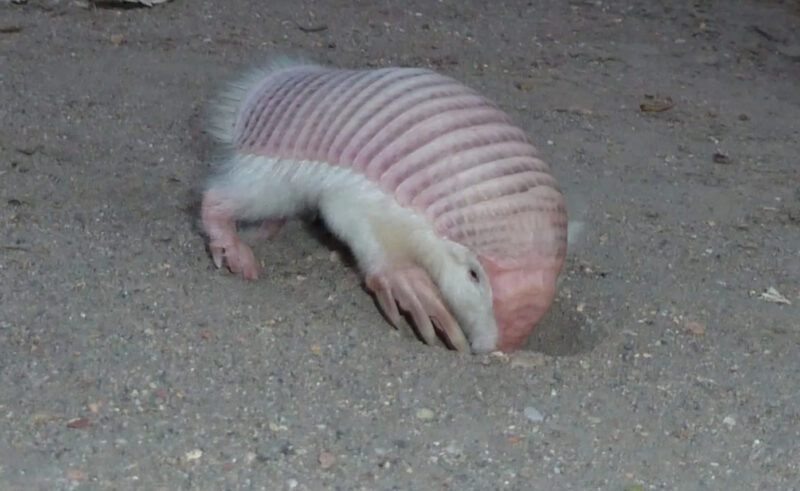
While other armadillos spend most of their time on the surface, the pink fairy armadillo is nearly always underground. "The evolution toward a completely subterranean lifestyle...[took] place between 32 and 17 million years ago," Krmpotic said.
Because of their hidden underground lives, the creatures are incredibly difficult to study. Krmpotic has never actually seen one. She was looking at dead specimens from a lab. In the wild, they live in Argentina and spend almost all their lives underground. Most of what we know about them comes from studying those in captivity.
Rarely survive in captivity
However, very few pink fairy armadillos survive away from their natural environment. Around 95% of those taken out of their habitat die within a week.
Mariella Superina, a leading expert on armadillos, has studied them for decades and has seen a number of live critters. Mostly, those who have been forced out of their tunnels by flooding. Others have been young males that have popped up on roads and trails. These juvenile males leave their mothers between February and March, and that's when they appear. If they hit pavement while digging, they surface to cross the road. Completely adapted to living underground, the armadillos fare poorly on the surface.
“I've talked to many locals who have lived their entire life in the desert of Mendoza, and those who've seen a pink fairy armadillo remembered that encounter very well," Superina told IFL Science. "One woman who lived over 80 years on a farm in the desert told me that she had seen three in her entire life...Isn’t it amazing that there's a tiny little animal out there that is so rarely seen, can't be tracked by the locals, and can't be trapped with traditional methods?”
 (@ocean_evii23)
(@ocean_evii23)